 HOME PROJECTS EXHIBITIONS ARTWORKS BIOGRAPHY BIBLIOGRAPHY PUBLICATIONS TEXTS LINKS NEWS CONTACT
HOME PROJECTS EXHIBITIONS ARTWORKS BIOGRAPHY BIBLIOGRAPHY PUBLICATIONS TEXTS LINKS NEWS CONTACT
OTHER EDITIONS
TIM WHITE-SOBIESKI
“DIVINE COMEDY”
Dante Alighieri
Studio TWS presents fine press edition of Dante's Divine Comedy, commemorative edition.
(series “Masterpieces of World Literature”)
Limited edition.
Editioned as a series of large hand coloredprints accompaning limited edition manuscript,
& edition of prints as a portfolio of mid-size prints in a custom-made box
with artists’ brochure description
and complete historic annotation,
printed at 12 x 18 inches (30 x 45 cm) each.
Tim White-Sobieski presents a remarkable artistic endeavor known as the "La Divina Commedia" Manuscript project. This endeavor consists of a limited edition collection of art prints and a finely crafted book. Housed within Studio TWS, Tim White-Sobieski introduces a masterful fine press edition of Dante's Divine Comedy, specifically designed as a commemorative edition under the series titled "Masterpieces of World Literature."
The artistic creation involves a limited edition print portfolio, meticulously produced as a series of grand hand-colored prints that complement an equally limited edition manuscript. Additionally, a collection of mid-sized prints is offered in a custom-made box, accompanied by an artist's brochure elucidating the concept and a comprehensive historical annotation. These prints measure 12 x 16.5 inches (30 x 42 cm) each.
The essence of this project lies in its unprecedented nature, being the first instance since the 15th century where the Divine Comedy has been entirely hand-illustrated. The endeavor encompasses a unique illustrative artwork for each canto, totaling over 1200 distinct illustrations. These artworks manifest both in the form of a book and as a set of exclusive hand-colored prints. This masterpiece serves as an exceptional addition for collectors, museums, libraries, as well as individuals passionate about bibliophilic pursuits and scholarly exploration.
The rendition of the Divine Comedy offered here is perhaps the most exquisite and comprehensive interpretation ever crafted. Each print edition is elegantly enclosed within a decorative slipcase or a deluxe protective case. These limited editions are presented both in Italian and English, featuring archival historic binding on Italian paper. The process involves printing on a specially designed press, ensuring a deluxe finishing touch. Beyond its artistic significance, this creation becomes emblematic of Italian culture, history, and language.
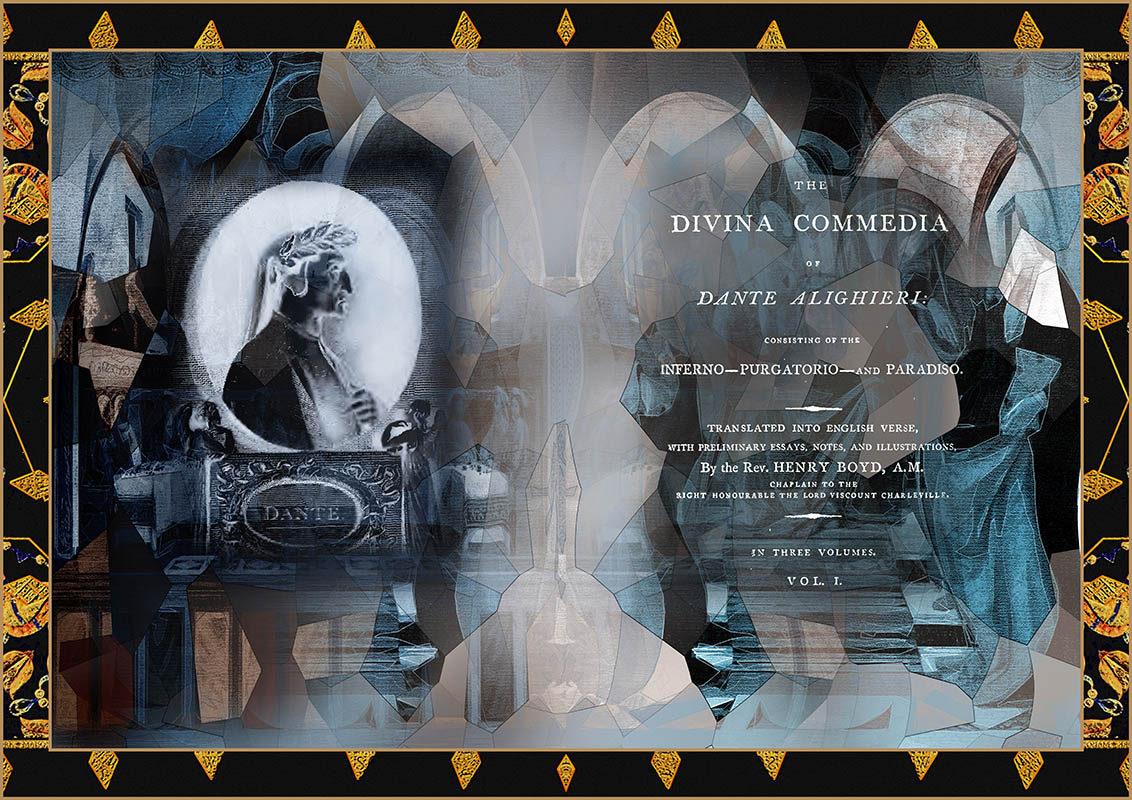
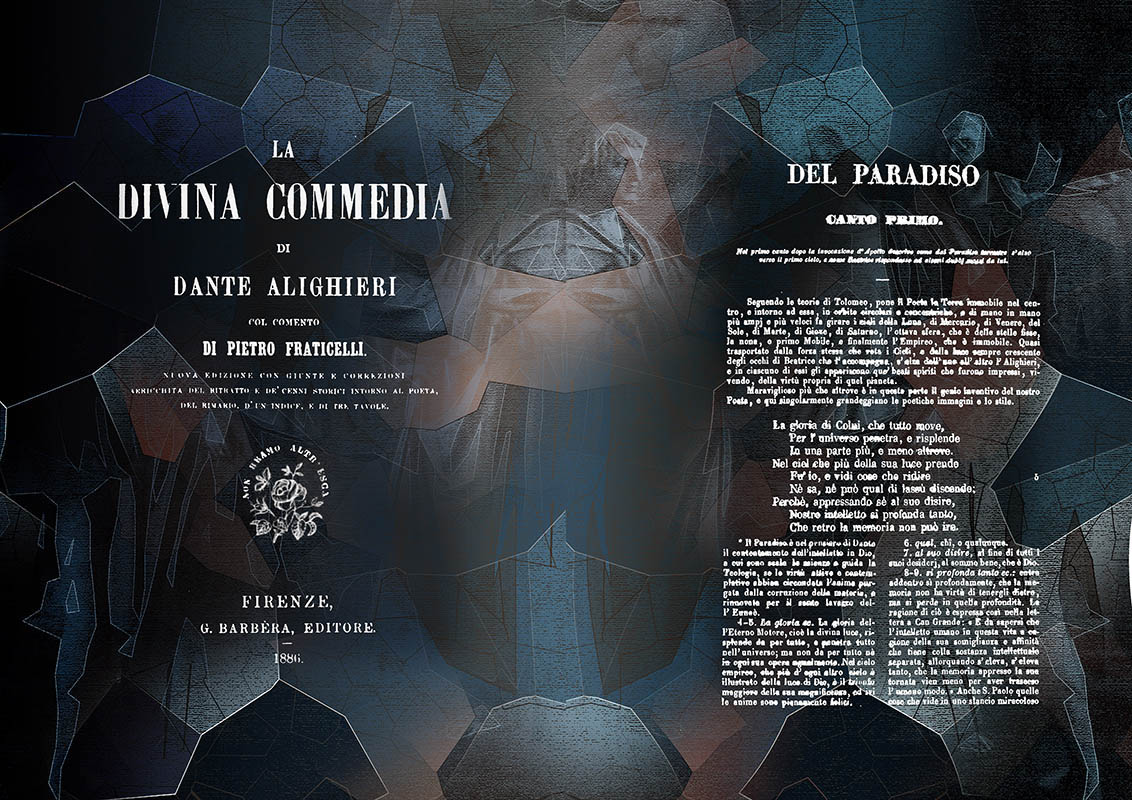
Each print is uniquely signed by the artist himself, Tim White-Sobieski, accompanied by a certificate of authenticity. This commemorative edition marks the 700th Anniversary of Dante Alighieri's passing. The entire endeavor is conceived, designed, and brought to life in Italy by TWS Fine Press Limited Edition. The print editions are housed within gold-embossed hard slipcases and custom-made cases, reflecting the artist's personal touch.
The culmination of a decade's worth of labor culminates in a rendition of the Divine Comedy that stands among the most exquisite versions in the history of the world. The project is a testament to collaboration with prestigious historic archives and private libraries, including but not limited to the Vatican archives, the Metropolitan Museum library and print collection, Smithsonian, Library of Congress, Washington D.C., George Peabody Library in Baltimore, USA; Bodleian Library in Oxford, UK; British Museum; Yale University rare book and manuscript library in New Haven, Connecticut, USA; National Library of St. Mark’s in Venice, Italy; and the Abbey Library of Saint Gall in St. Gallen, Switzerland.
The project started with a book containing 300 original illustrations, initially sized at 30 by 42 cm each in horizontal format. It later evolved into a broader artistic endeavor, including expansive drawings, prints, and canvas works. What makes this project truly notable are the artists' designs tailored specifically for the book, along with over 400 unique fabric patterns that had never been publicly displayed before. Despite being contemporary, these designs exuded a stylistic essence reminiscent of the early Renaissance period. The textiles featured in the artworks were subsequently crafted into multicolored silk fabrics and jacquards, echoing the quality and tactile experience of Renaissance tapestries. The artists dedicated more than three years to developing both the textile designs and the drawing and painting compositions. The outcome was an unparalleled project characterized by its intricate execution and stylistic sophistication.
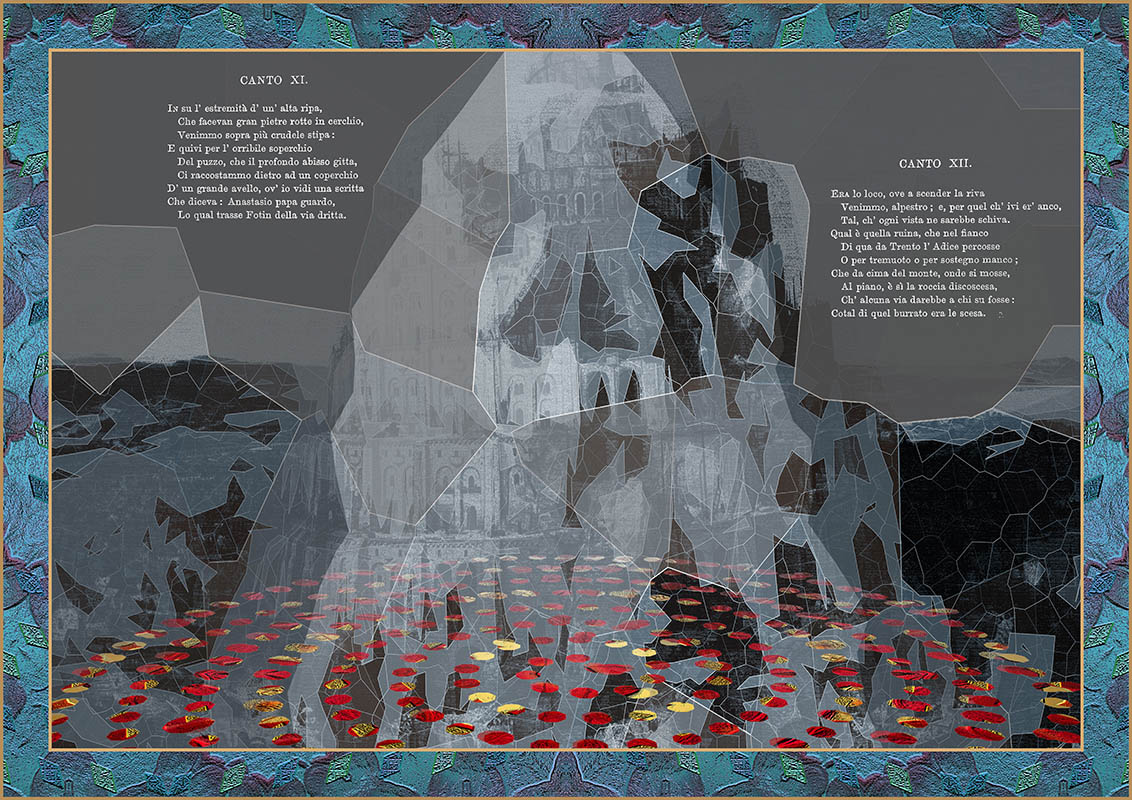
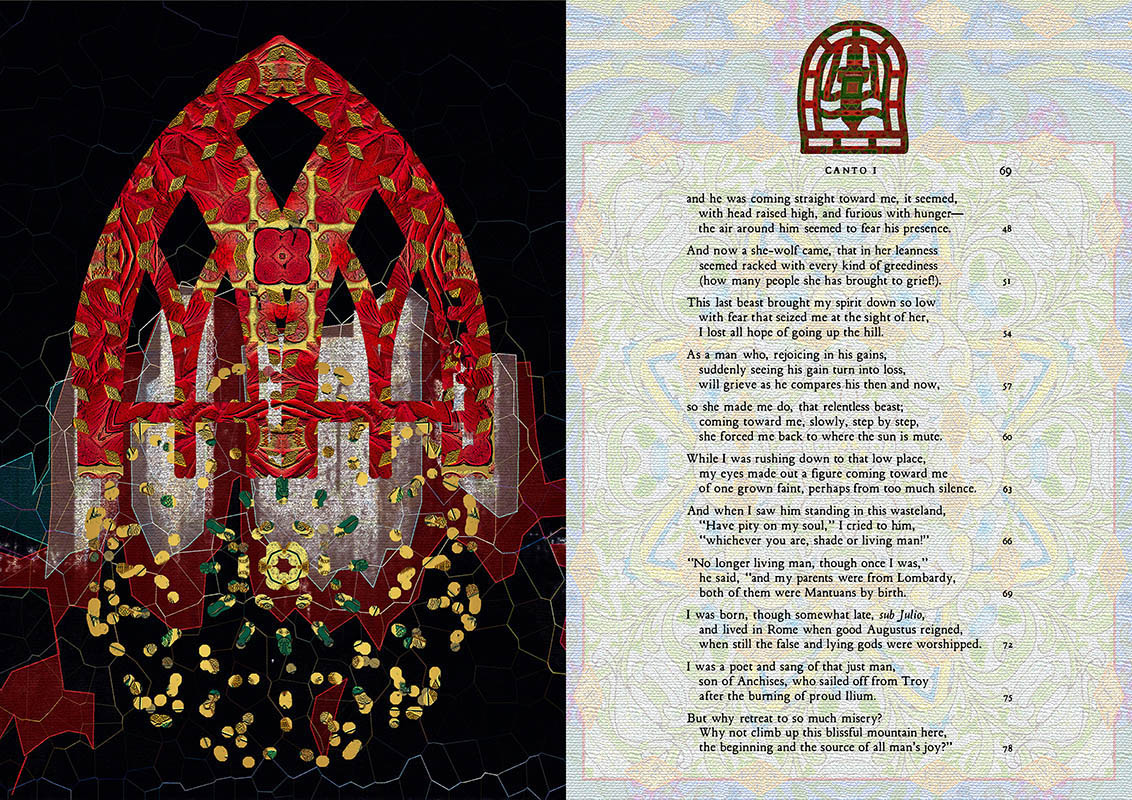
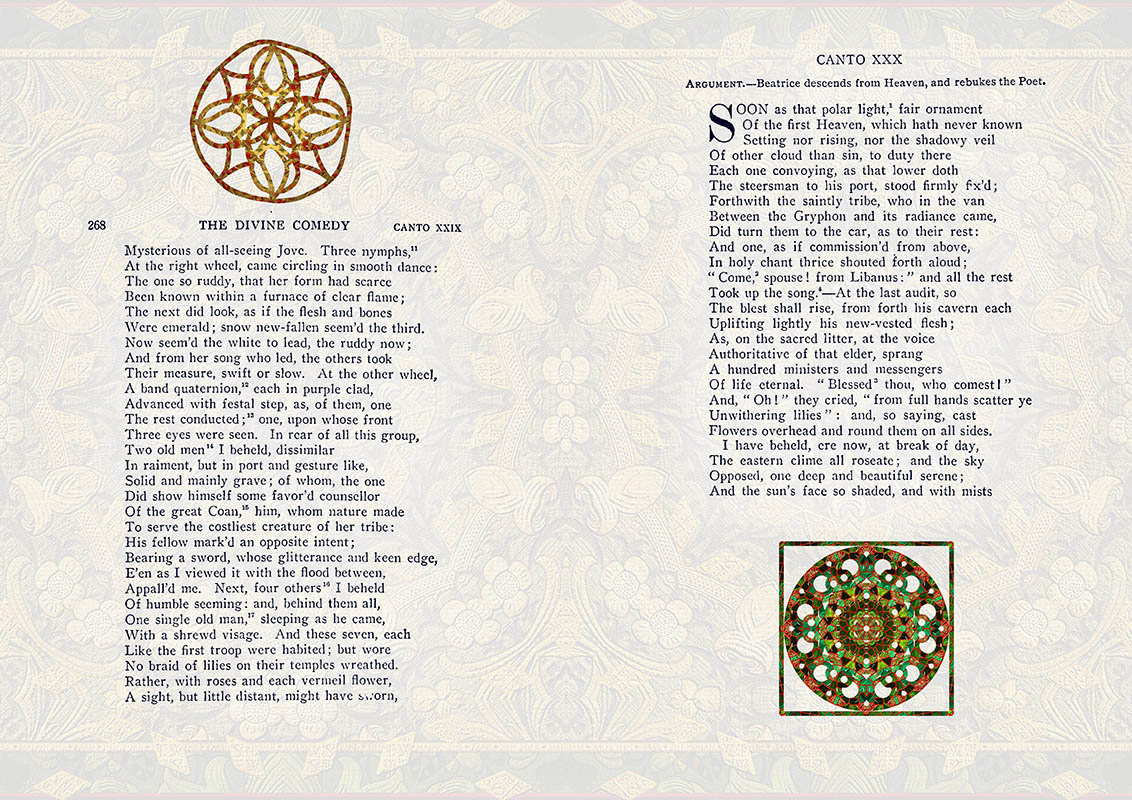
IT
Tim White-Sobieski presenta un notevole sforzo artistico conosciuto come il progetto "Manoscritto della Divina Commedia". Questo impegno consiste in una collezione in edizione limitata di stampe d'arte e un libro finemente lavorato. Ospitato presso lo Studio TWS, Tim White-Sobieski introduce una maestosa edizione in tiratura limitata della Divina Commedia di Dante, appositamente progettata come edizione commemorativa nell'ambito della serie intitolata "Capolavori della Letteratura Mondiale."
La creazione artistica comprende una raccolta in edizione limitata di stampe, prodotte con meticolosità come una serie di grandi stampe a mano colorate che si affiancano a un altrettanto raro manoscritto in edizione limitata. Inoltre, una collezione di stampe di dimensioni medie è offerta in una scatola fatta su misura, accompagnata da una brochure dell'artista che elucida il concetto e un'annotazione storica esaustiva. Queste stampe misurano ciascuna 30 x 42 cm.
L'essenza di questo progetto risiede nella sua natura senza precedenti, rappresentando la prima istanza dall'anno 1500 in cui la Divina Commedia è stata interamente illustrata a mano. L'iniziativa comprende un'opera illustrativa unica per ogni canto, per un totale di oltre 1200 illustrazioni distinte. Queste opere si manifestano sia sotto forma di libro che come un insieme di stampe esclusive colorate a mano. Questo capolavoro si rivolge a collezionisti, musei, biblioteche e appassionati di esplorazione bibliofila e accademica.
La rappresentazione della Divina Commedia offerta qui è forse l'interpretazione più squisita e completa mai realizzata. Ogni edizione stampata è elegantemente racchiusa in una custodia decorativa o in un'elegante custodia protettiva. Queste edizioni limitate sono presentate sia in italiano che in inglese, con rilegatura storica archivistica su carta italiana. Il processo prevede la stampa su una pressa appositamente progettata, garantendo un tocco di finitura di lusso. Oltre al suo significato artistico, questa creazione diventa un simbolo della cultura, della storia e della lingua italiana.
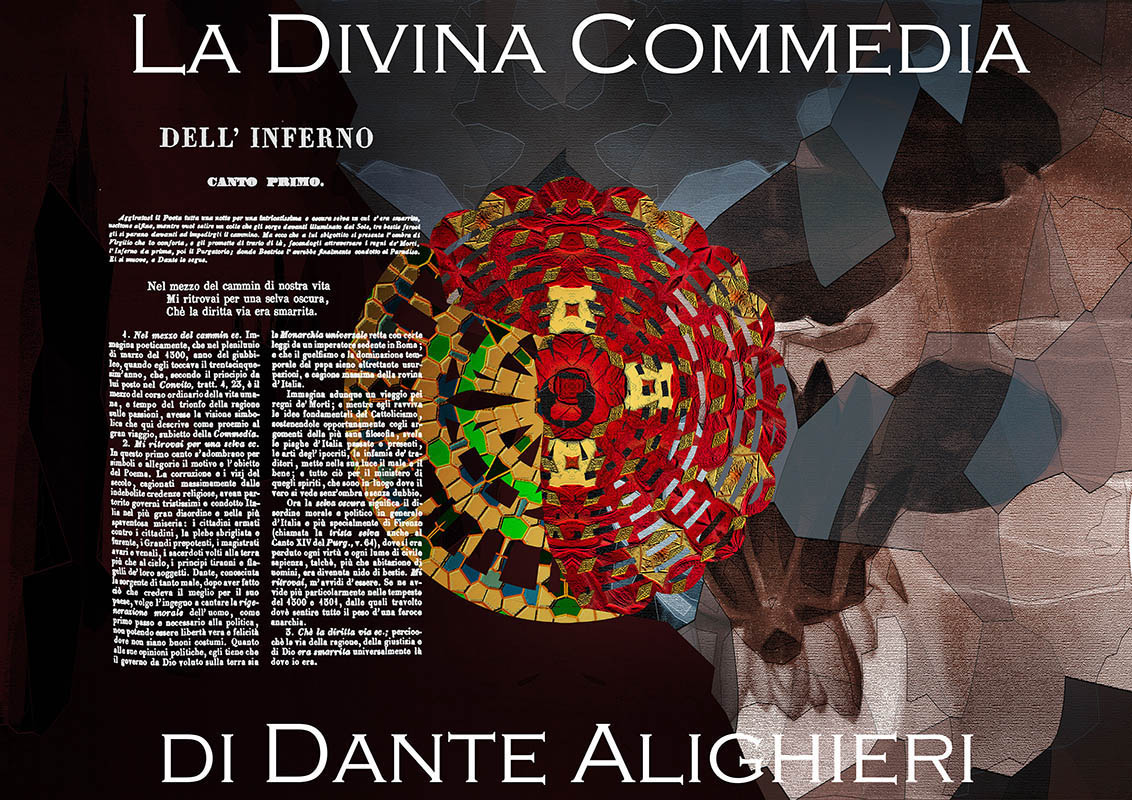
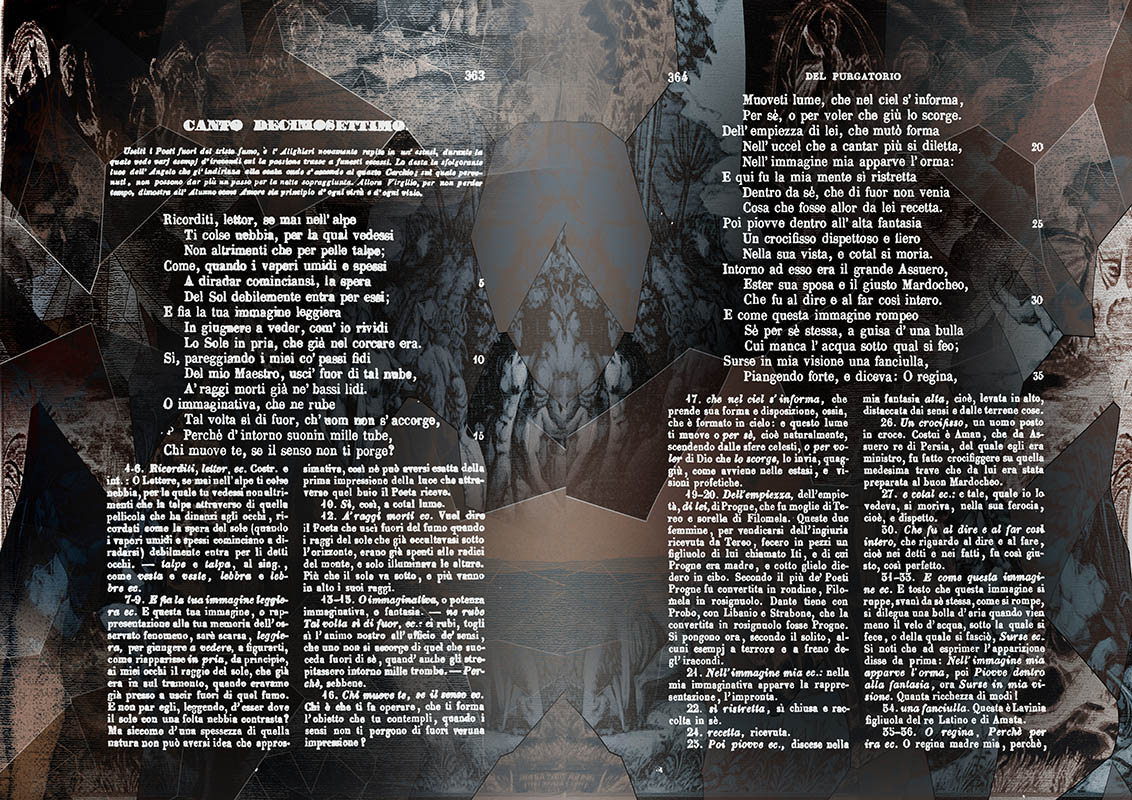
Ogni stampa è firmata in modo unico dall'artista stesso, Tim White-Sobieski, accompagnata da un certificato di autenticità. Questa edizione commemorativa segna il 700º anniversario della morte di Dante Alighieri. L'intero progetto è concepito, progettato e portato alla luce in Italia da TWS Fine Press Limited Edition. Le edizioni stampate sono custodite in custodie rigide con stampa dorata e custodie personalizzate, riflettendo il tocco personale dell'artista.
La culminazione di un decennio di lavoro si concretizza in una rappresentazione della Divina Commedia che si annovera tra le versioni più squisite nella storia del mondo. Il progetto è una testimonianza di collaborazione con prestigiosi archivi storici e biblioteche private, tra cui, ma non solo, gli archivi Vaticani, la biblioteca e la collezione di stampe del Metropolitan Museum, Smithsonian, Library of Congress a Washington D.C., George Peabody Library a Baltimora, USA; Bodleian Library a Oxford, Regno Unito; British Museum; Yale University rare book and manuscript library a New Haven, Connecticut, USA; National Library of St. Mark's a Venezia, Italia; e l'Abbey Library of Saint Gall a St. Gallen, Svizzera.
Il progetto è iniziato con un libro contenente 300 illustrazioni originali, inizialmente di dimensioni 30 x 42 cm ciascuna in formato orizzontale. Successivamente si è evoluto in un più ampio sforzo artistico, includendo disegni estesi, stampe e opere su tela. Quello che rende questo progetto veramente notevole sono i disegni degli artisti appositamente realizzati per il libro, insieme a oltre 400 unici pattern tessili mai esposti pubblicamente prima. Nonostante siano contemporanei, questi disegni emanano un'essenza stilistica che ricorda il periodo dell'alto Rinascimento. I tessuti presenti nelle opere d'arte sono stati successivamente trasformati in tessuti di seta multicolore e jacquard, evocando la qualità e l'esperienza tattile delle tele rinascimentali. Gli artisti hanno dedicato più di tre anni a sviluppare sia i disegni tessili che le composizioni di disegno e pittura. Il risultato è stato un progetto senza pari, caratterizzato dalla sua esecuzione intricata e sofisticazione stilistica.
Qui sono presentate alcune pagine campione del libro d'arte in edizione limitata dedicato al capolavoro di Dante Alighieri.
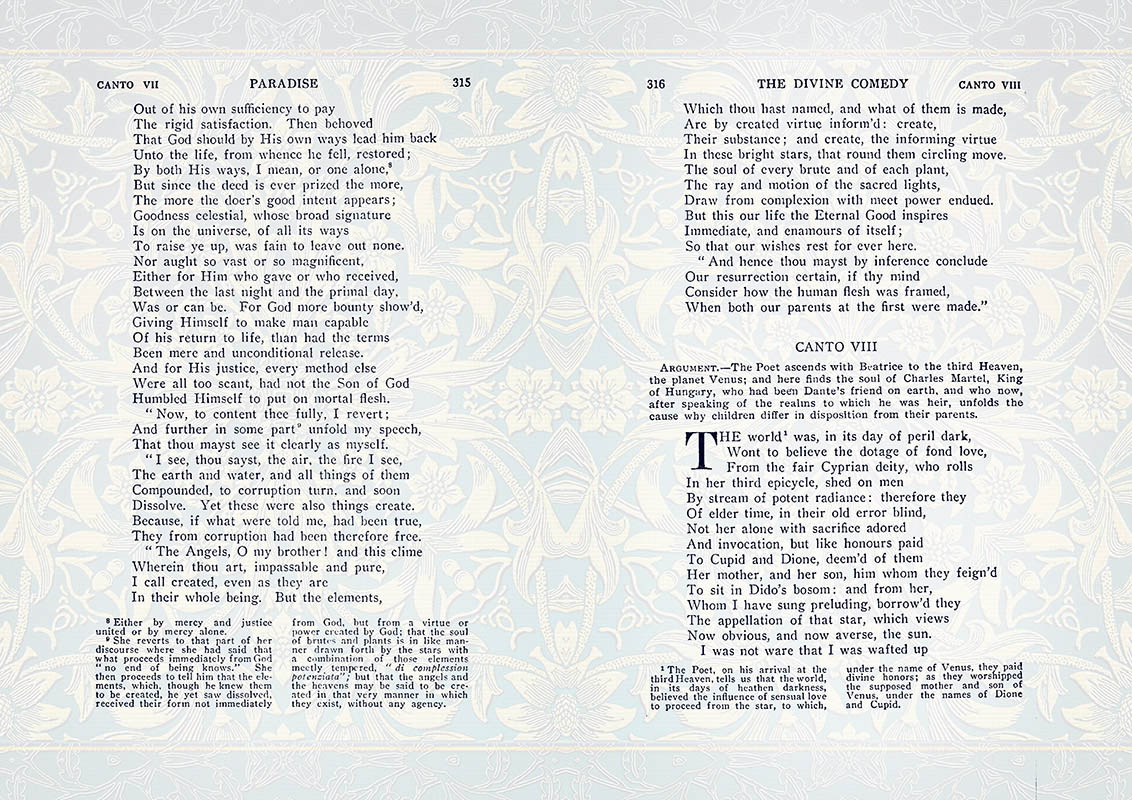
About the Dante Alighieri's "Divine Comedy"
The enduring and universal appeal of Dante Alighieri's "Divine Comedy," even after seven centuries, can be attributed to several intrinsic qualities that render it a focal point of attention for scholars, artists, and individuals spanning diverse cultures. This work's capacity to transcend temporal and geographical boundaries lies in the following factors:
Dante's thematic exploration touches upon fundamental human experiences, such as love, sin, redemption, and the complexities of human nature. These existential concerns resonate across epochs and cultural contexts, forging a connection with a broad spectrum of individuals.
The poem's probing examination of the soul's journey through the realms of Hell, Purgatory, and Paradise addresses the human fascination with life's metaphysical questions, spirituality, and the afterlife. These enigmas are subjects of profound contemplation that traverse cultural frontiers.
Dante's skillful utilization of allegory contributes to the poem's enduring allure, allowing for multi-dimensional interpretations that provoke sustained intellectual discourse among scholars and thinkers.
The narrative structure, adorned with vivid imagery, renders the poem accessible and captivating. Dante's personal voyage acts as a relatable conduit for readers to engage with intricate philosophical and moral themes.
Serving as a historical and cultural artifact, the "Divine Comedy" provides insights into the intellectual, social, and political milieu of 14th-century Italy. This historical context facilitates a bridge between contemporary readers and the bygone era, fostering a sense of continuity.
The work's profound influence is evidenced through its enduring impact on literature, art, and culture. It serves as a wellspring of inspiration across various creative domains, from literature to visual arts, music, and film.
Rooted in existential queries surrounding good and evil, virtue, and human relationships, the questions posed by the "Divine Comedy" are universally pertinent. These inquiries continue to engage those navigating the intricacies of moral and ethical landscapes in their own lives.
The sweeping ambition of Dante's endeavor to encapsulate the entirety of human experience within a single composition imparts the "Divine Comedy" with a grandiosity that reverberates with readers of diverse backgrounds. Its exploration of the human condition and the cosmic tapestry resonates with the shared human curiosity about our existence and place in the universe.
In essence, the "Divine Comedy" achieves its timeless and cross-cultural resonance by delving into the core of human existence, utilizing allegorical layers and evocative imagery to craft a narrative that bridges eras and geographical divides. This enduring appeal fosters a profound and abiding connection among individuals, traversing epochs and cultures.
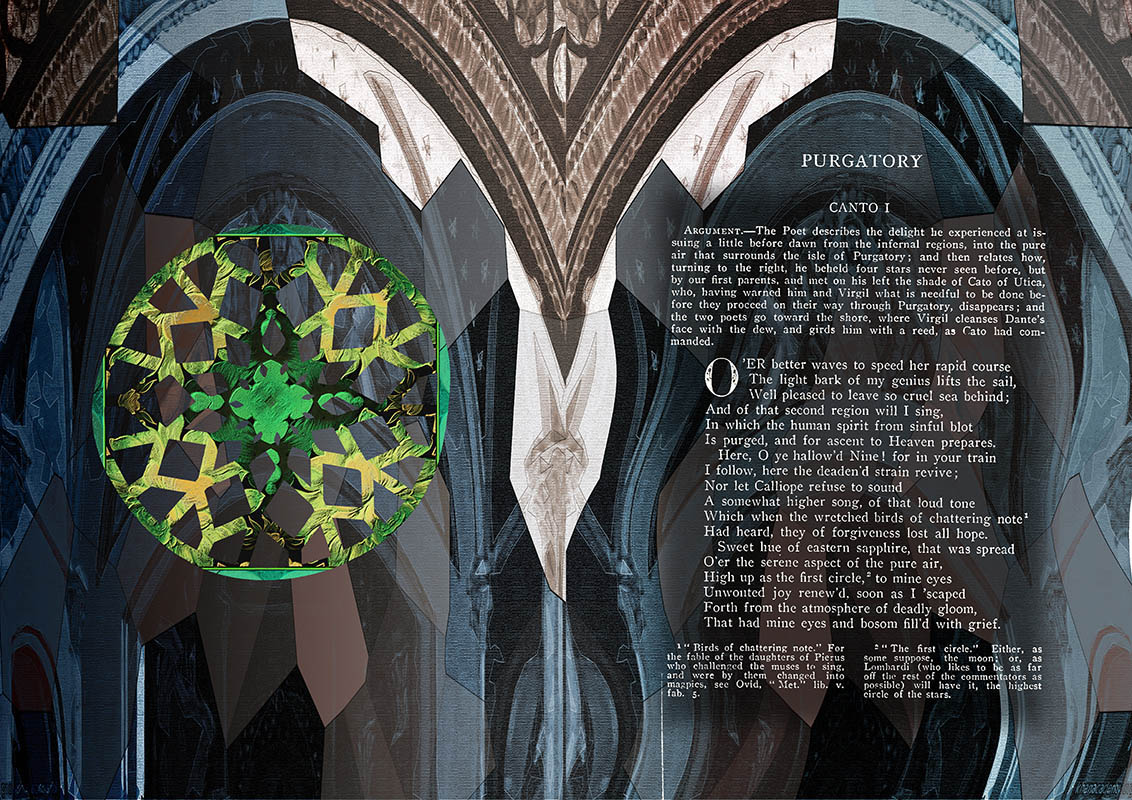
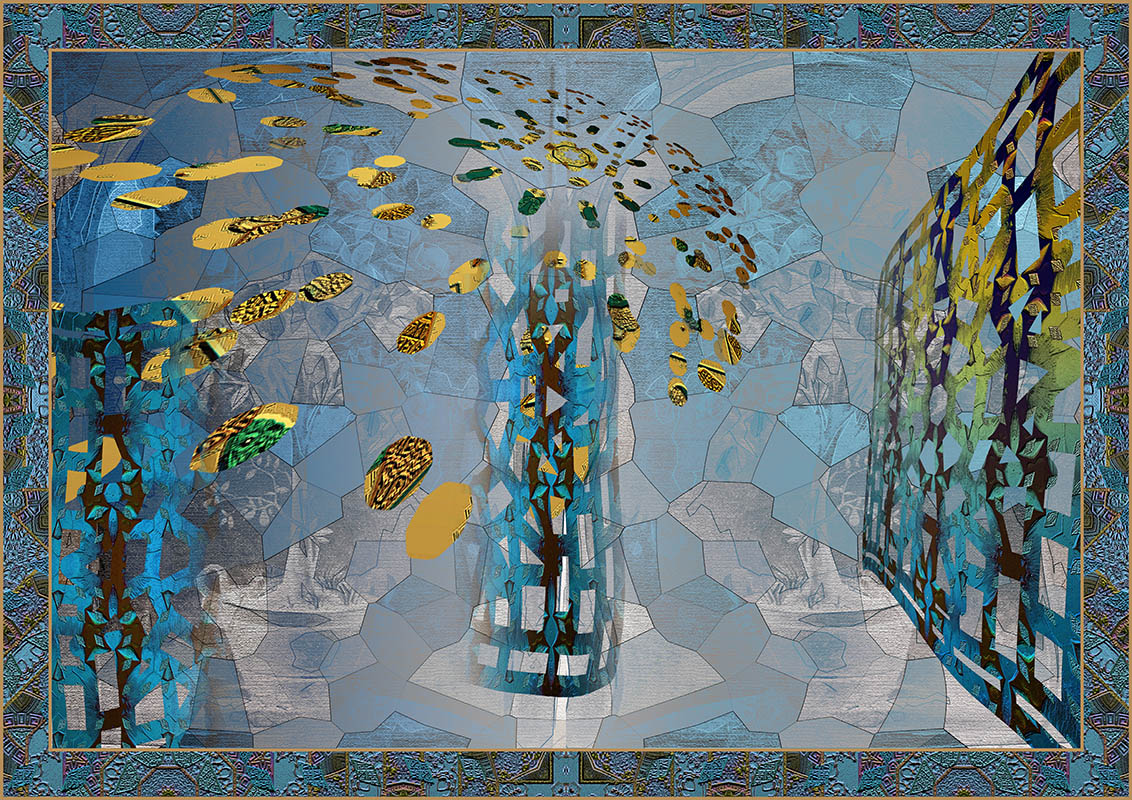
IT
SULLA “DIVINA COMMEDIA” DI DANTE ALIGHIERI
L'attrattiva universale e duratura della "Divina Commedia" di Dante Alighieri, persino dopo sette secoli, può essere attribuita a diverse qualità intrinseche che ne fanno un punto focale di interesse per studiosi, artisti e individui che spaziano tra culture diverse. La capacità di questo lavoro di oltrepassare confini temporali e geografici risiede nei seguenti fattori:
L'esplorazione tematica di Dante tocca esperienze umane fondamentali, come l'amore, il peccato, la redenzione e le complessità della natura umana. Queste preoccupazioni esistenziali risuonano attraverso epoche e contesti culturali, stabilendo un legame con un ampio spettro di individui.
L'analisi approfondita del percorso dell'anima attraverso i regni dell'Inferno, del Purgatorio e del Paradiso indirizza la fascinazione umana per le domande metafisiche della vita, la spiritualità e l'aldilà. Questi enigmi sono oggetto di profonda riflessione che attraversa frontiere culturali.
L'abile utilizzo dell'allegoria da parte di Dante contribuisce all'attrattiva duratura del poema, consentendo interpretazioni multidimensionali che suscitano un dibattito intellettuale continuo tra studiosi e pensatori.
La struttura narrativa, adornata di immagini vivide, rende il poema accessibile e coinvolgente. Il viaggio personale di Dante funge da tramite comprensibile attraverso il quale i lettori possono interagire con complessi temi filosofici e morali.
In quanto documento storico e culturale, la "Divina Commedia" fornisce spunti sull'ambiente intellettuale, sociale e politico dell'Italia del XIV secolo. Questo contesto storico facilita un ponte tra i lettori contemporanei e l'era passata, promuovendo un senso di continuità.
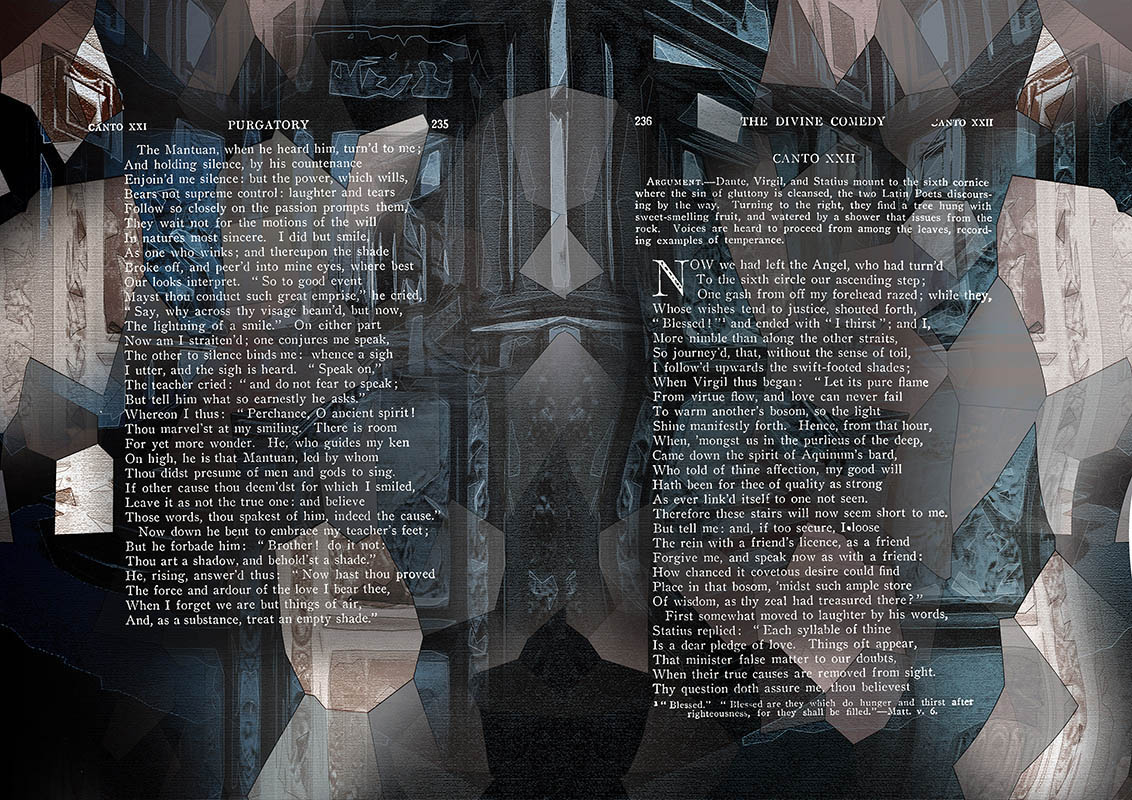
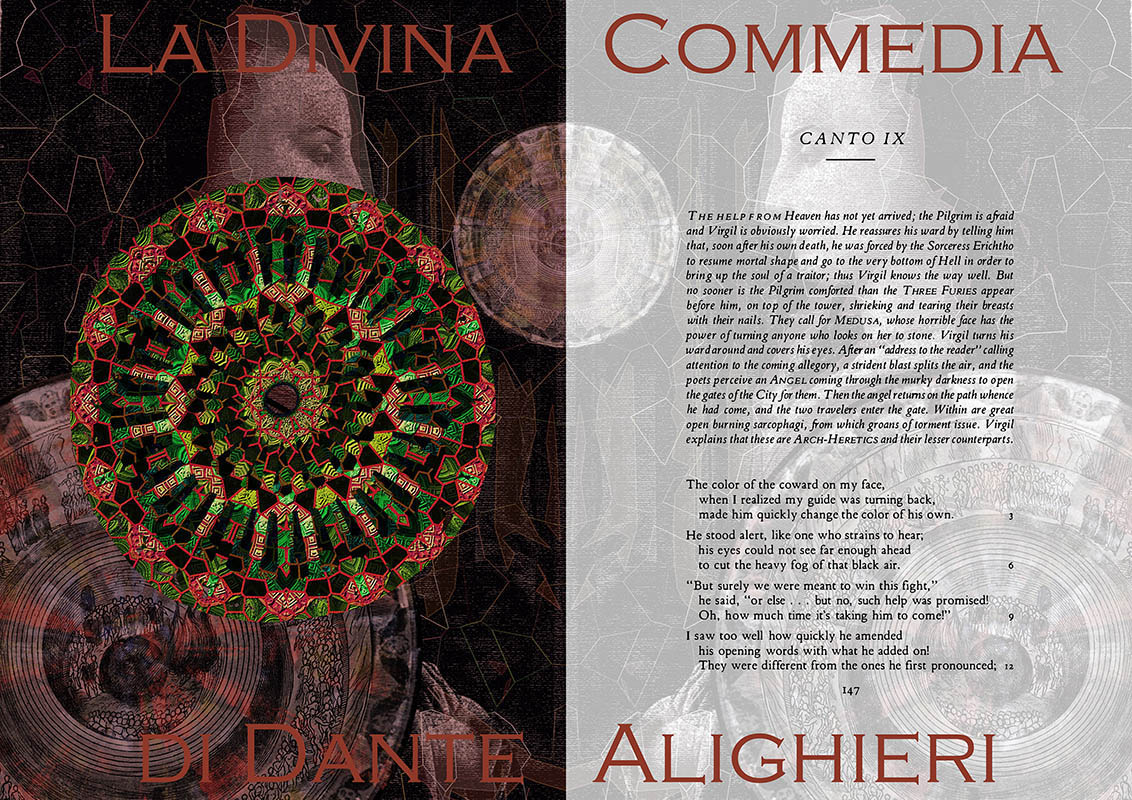
Radicate nelle questioni esistenziali legate al bene e al male, alla virtù e alle relazioni umane, le domande poste dalla "Divina Commedia" sono universalmente pertinenti. Questi interrogativi continuano a coinvolgere coloro che navigano tra le complessità dei paesaggi morali ed etici nelle proprie vite.
L'ambizione vasta dell'impegno di Dante di racchiudere l'intera esperienza umana in una singola composizione conferisce alla "Divina Commedia" una grandiosità che fa eco nei lettori di sfondi diversi. La sua esplorazione della condizione umana e del tessuto cosmico risuona con la curiosità umana condivisa sulla nostra esistenza e sul nostro posto nell'universo.
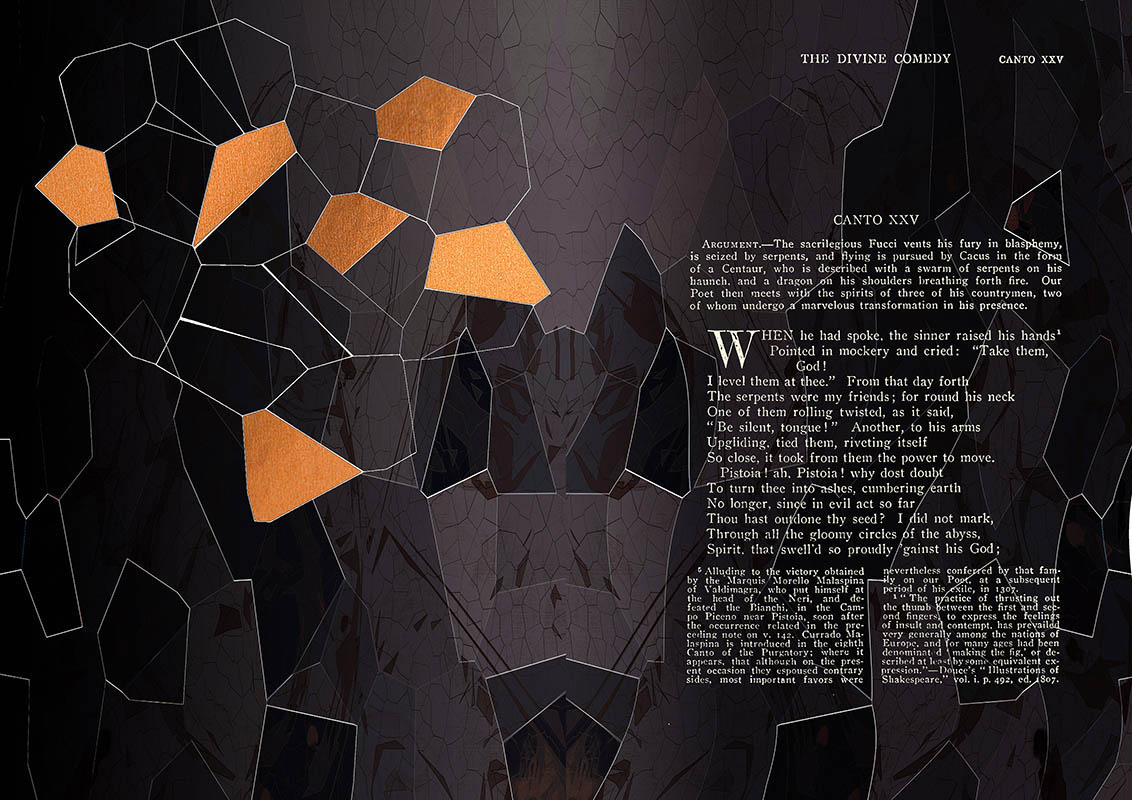
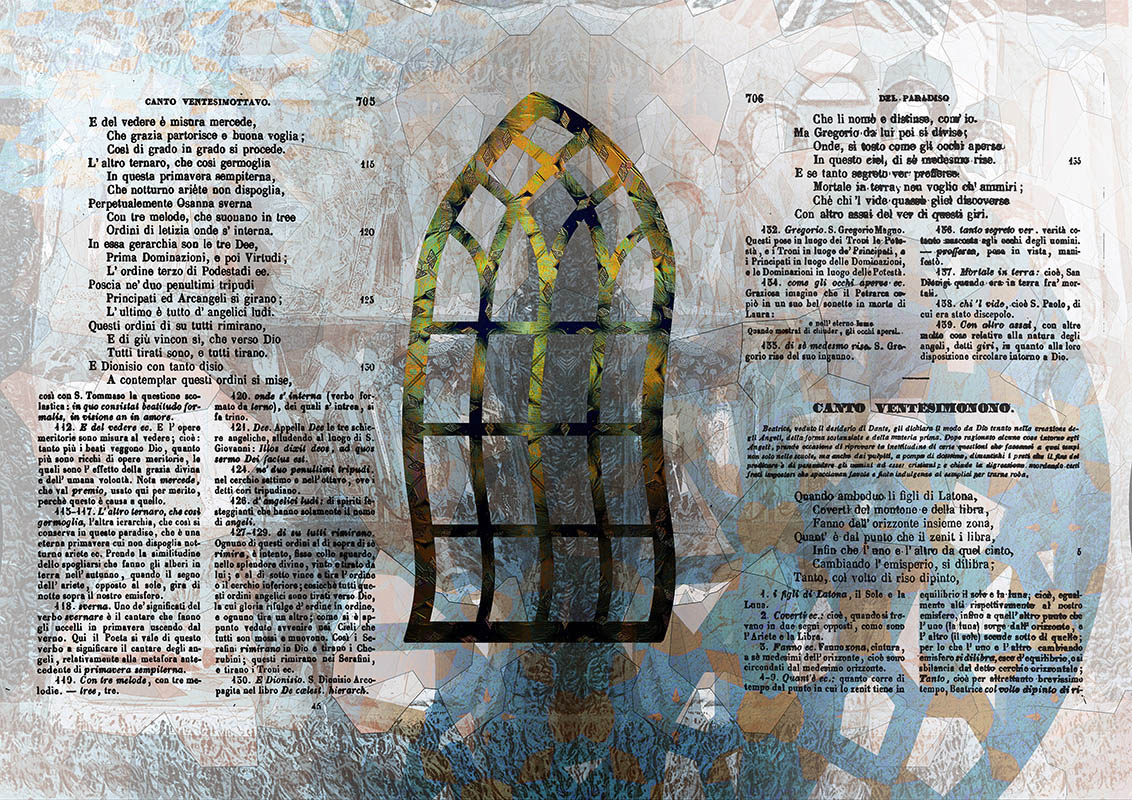
Comparative study
Here's a comparative analysis of the artistic interpretations of the Divine Comedy by famous artists such as Botticelli, Gustave Doré, William Blake, and Salvador Dalí, highlighting their distinct styles and the impact of their work on art history:
Sandro Botticelli:
Sandro Botticelli's illustrations of the Divine Comedy, specifically the Inferno, are known for their intricate detail and classical elegance. Botticelli's style, rooted in the Renaissance, emphasizes graceful figures and delicate contours. His illustrations often blend mythological and Christian symbolism, reflecting his mastery of combining different visual languages. His Inferno illustrations are characterized by their meticulous attention to anatomical accuracy and architectural details, capturing the horrifying scenes with an artistic finesse that softens the harshness of the subject matter. Botticelli's work demonstrates a fusion of the classical with the spiritual, representing a harmonious integration of art and theology. While his illustrations weren't widely disseminated during his lifetime, they had a lasting influence on subsequent artists and contributed to the popularization of Dante's epic.
Gustave Doré:
Gustave Doré's illustrations of the Divine Comedy are celebrated for their dramatic and evocative quality. Doré's style is characterized by bold lines, strong contrasts, and a penchant for the monumental. His illustrations amplify the emotional intensity of Dante's journey through the realms of the afterlife. Through intricate details and a dynamic use of light and shadow, Doré captures the visceral horror of Inferno, the introspective reflection of Purgatorio, and the ethereal beauty of Paradiso. His illustrations enjoyed wide circulation, thanks to the advent of printing technology, making his interpretations of Dante's work accessible to a larger audience. Doré's impactful visual storytelling helped solidify the iconic imagery associated with the Divine Comedy.
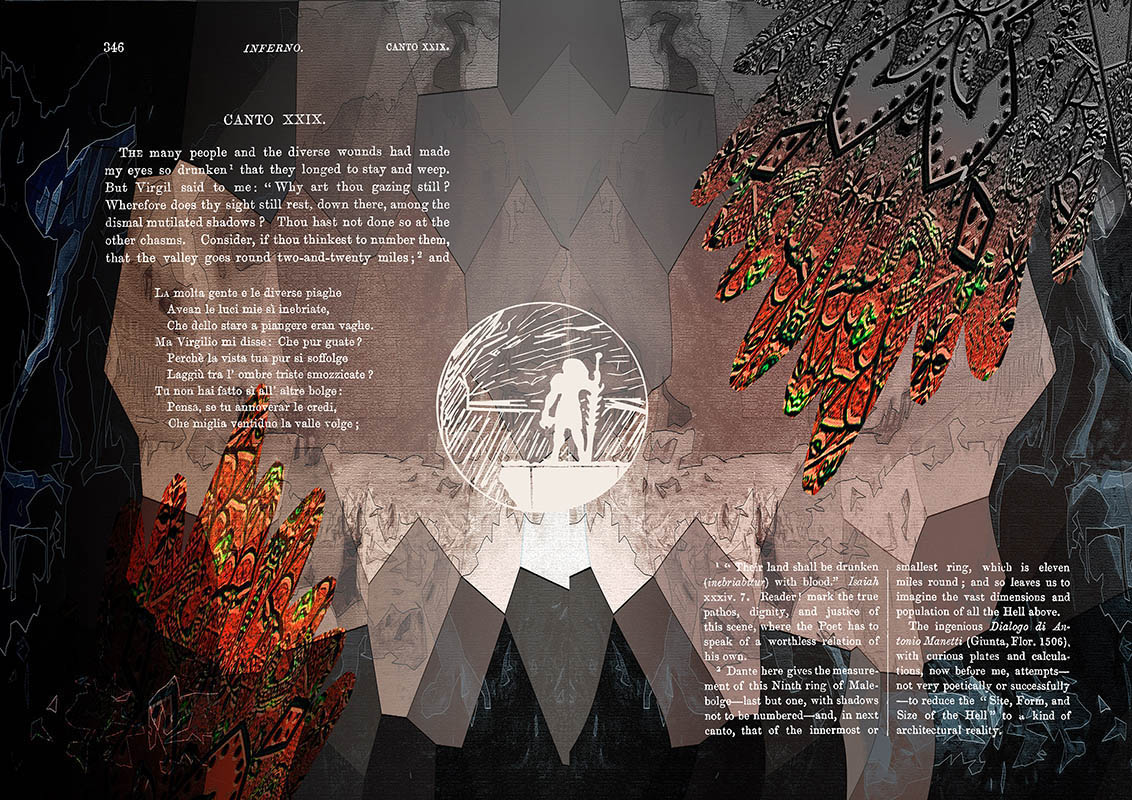
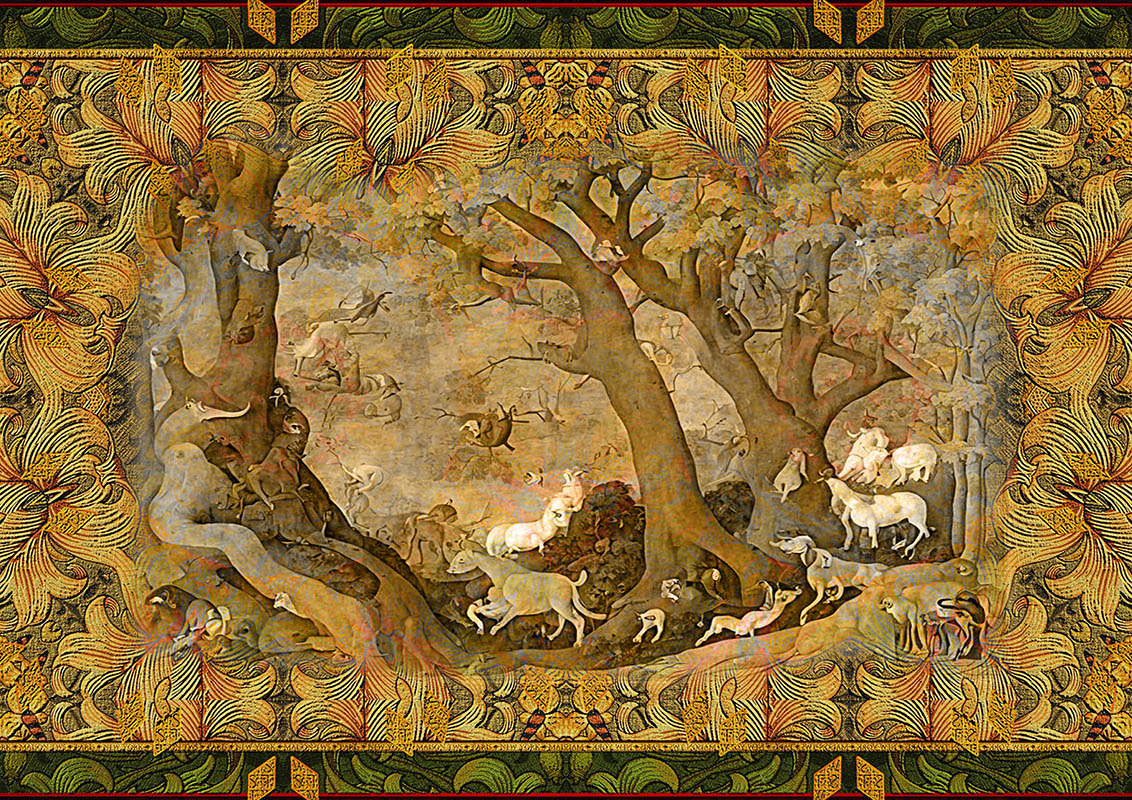
William Blake:
William Blake's illustrations of the Divine Comedy are a reflection of his unique visionary and symbolic style. Blake's art often defied conventional norms, characterized by intricate, swirling lines and a dreamlike quality. His interpretation of Dante's work focuses on the spiritual and allegorical aspects, reflecting Blake's own mystical inclinations. Blake's illustrations delve into the psychological and spiritual journey of the soul, emphasizing themes of redemption and spiritual awakening. His artistic impact was initially limited during his lifetime, but his work gained recognition in later years, influencing subsequent generations of artists with its unconventional and deeply introspective approach.
Salvador Dalí:
Salvador Dalí's illustrations of the Divine Comedy offer a surreal and avant-garde interpretation. Dalí's style is characterized by distorted perspectives, dreamlike landscapes, and juxtaposed imagery. His illustrations showcase his fascination with the subconscious and the irrational. Dalí's innovative approach reimagines Dante's epic in a way that emphasizes the psychological and symbolic dimensions of the narrative. His unique and often disorienting visuals challenged traditional artistic norms and provided a fresh lens through which to engage with the text. Dalí's impact on art history is marked by his contribution to the Surrealist movement and his ability to bridge the gap between classical literary themes and contemporary artistic expression.
These artists have each left an indelible mark on the artistic interpretation of Dante's Divine Comedy. Their distinct styles and approaches reveal the diversity of artistic responses to this timeless work, from classical elegance to dramatic intensity, visionary symbolism to surreal innovation. Their illustrations not only showcase their personal artistic inclinations but also contribute to the rich tapestry of visual interpretations that continue to captivate audiences and shape the perception of Dante's masterpiece in the annals of art history.
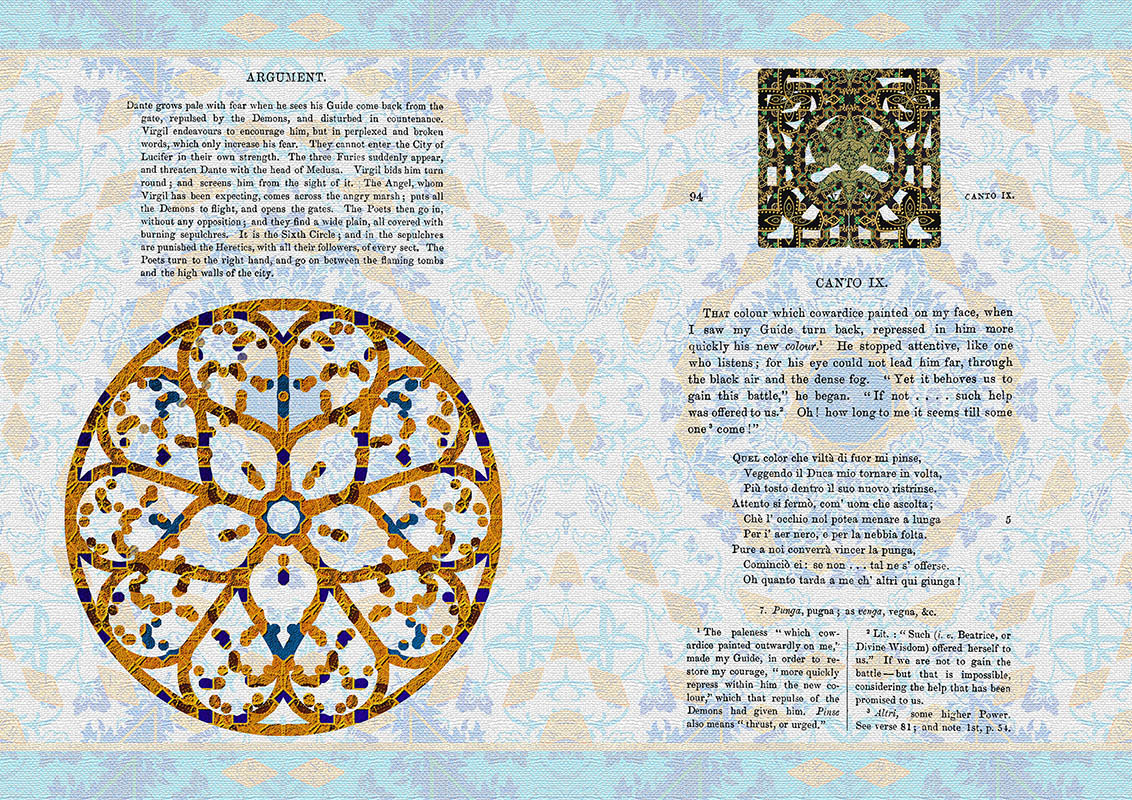
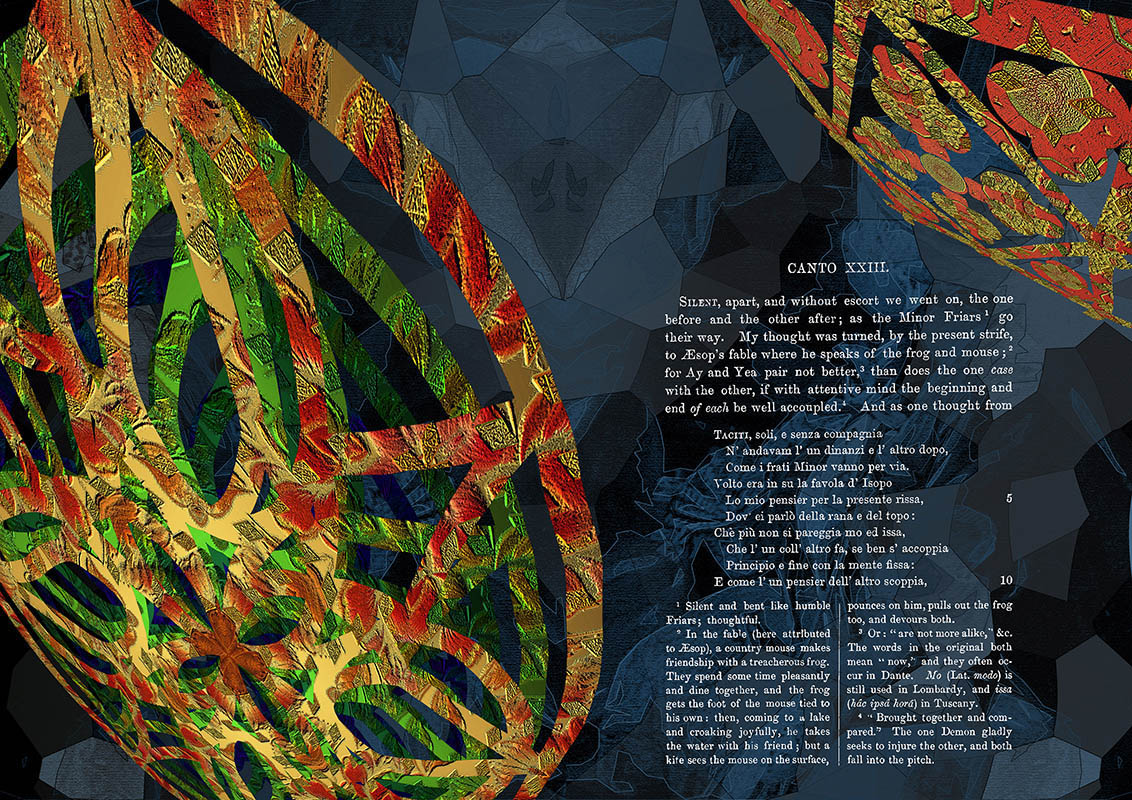
IT
studio comparativo
Ecco un'analisi comparativa delle interpretazioni artistiche della Divina Commedia da parte di famosi artisti come Botticelli, Gustave Doré, William Blake e Salvador Dalí, mettendo in luce i loro stili distinti e l'effetto delle loro opere sulla storia dell'arte:
Sandro Botticelli:
Le illustrazioni della Divina Commedia di Sandro Botticelli, in particolare dell'Inferno, sono note per la loro dettagliata raffinatezza e l'eleganza classica. Lo stile di Botticelli, radicato nel Rinascimento, enfatizza figure aggraziate e contorni delicati. Le sue illustrazioni spesso mescolano simboli mitologici e cristiani, riflettendo la sua maestria nel combinare diverse lingue visive. Le illustrazioni dell'Inferno si caratterizzano per l'attenta precisione anatomica e i dettagli architettonici, catturando le scene orrende con una finezza artistica che addolcisce la durezza del soggetto. Il lavoro di Botticelli dimostra una fusione di elementi classici e spirituali, rappresentando un'integrazione armoniosa tra arte e teologia. Sebbene le sue illustrazioni non fossero ampiamente diffuse durante la sua vita, hanno avuto un'influenza duratura su artisti successivi e contribuito alla popolarizzazione dell'epopea di Dante.
Gustave Doré:
Le illustrazioni della Divina Commedia di Gustave Doré sono celebrate per la loro drammatica ed evocativa qualità. Lo stile di Doré si caratterizza per linee audaci, forti contrasti e una predilezione per il monumentale. Le sue illustrazioni amplificano l'intensità emotiva del viaggio di Dante attraverso i regni dell'aldilà. Attraverso dettagli intricati e un uso dinamico di luce e ombra, Doré cattura l'orrore viscerale dell'Inferno, la riflessione introspettiva del Purgatorio e la bellezza eterea del Paradiso. Le sue illustrazioni godettero di ampia diffusione, grazie all'avvento della tecnologia di stampa, rendendo le sue interpretazioni dell'opera di Dante accessibili a un pubblico più ampio. Il coinvolgimento visivo suggestivo di Doré contribuì a consolidare le immagini iconiche associate alla Divina Commedia.
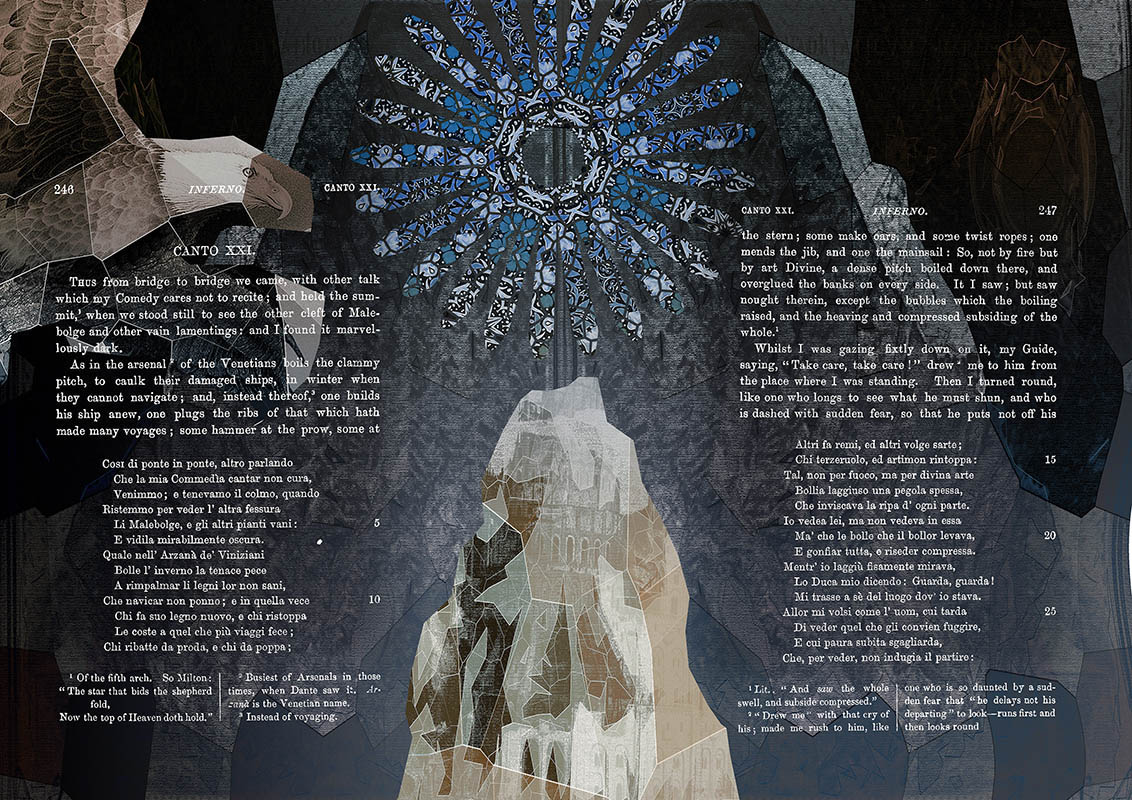
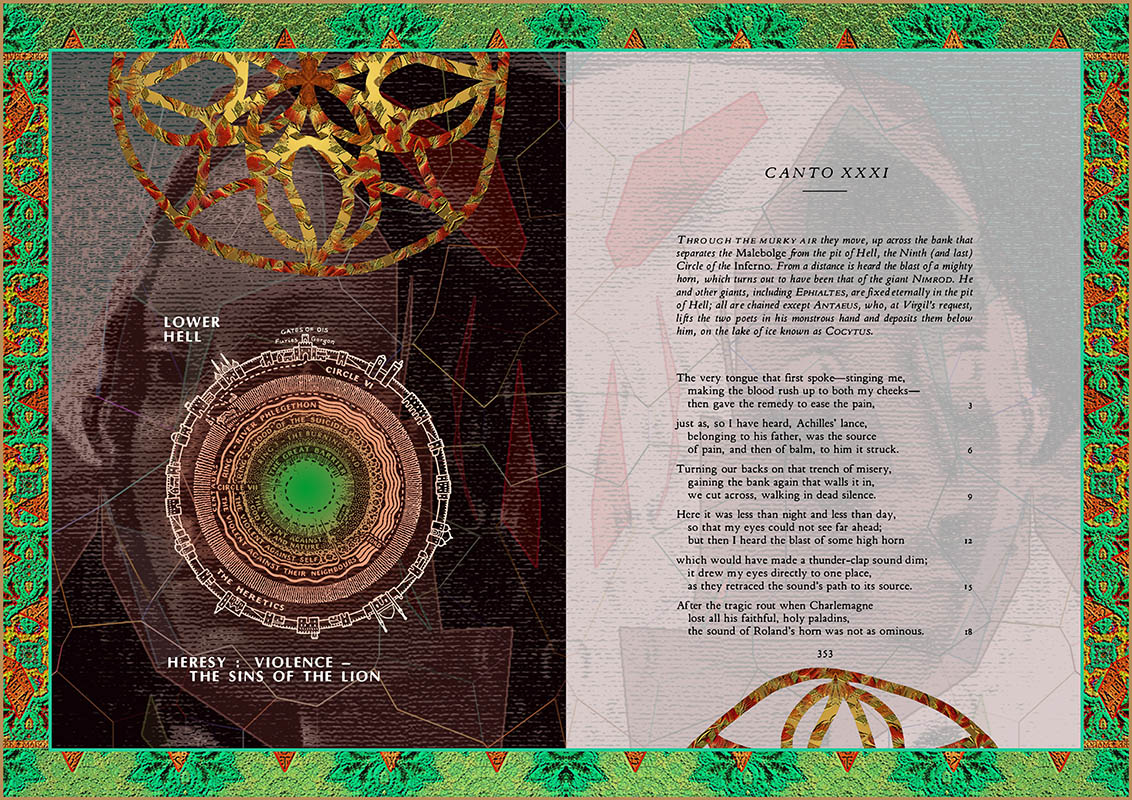
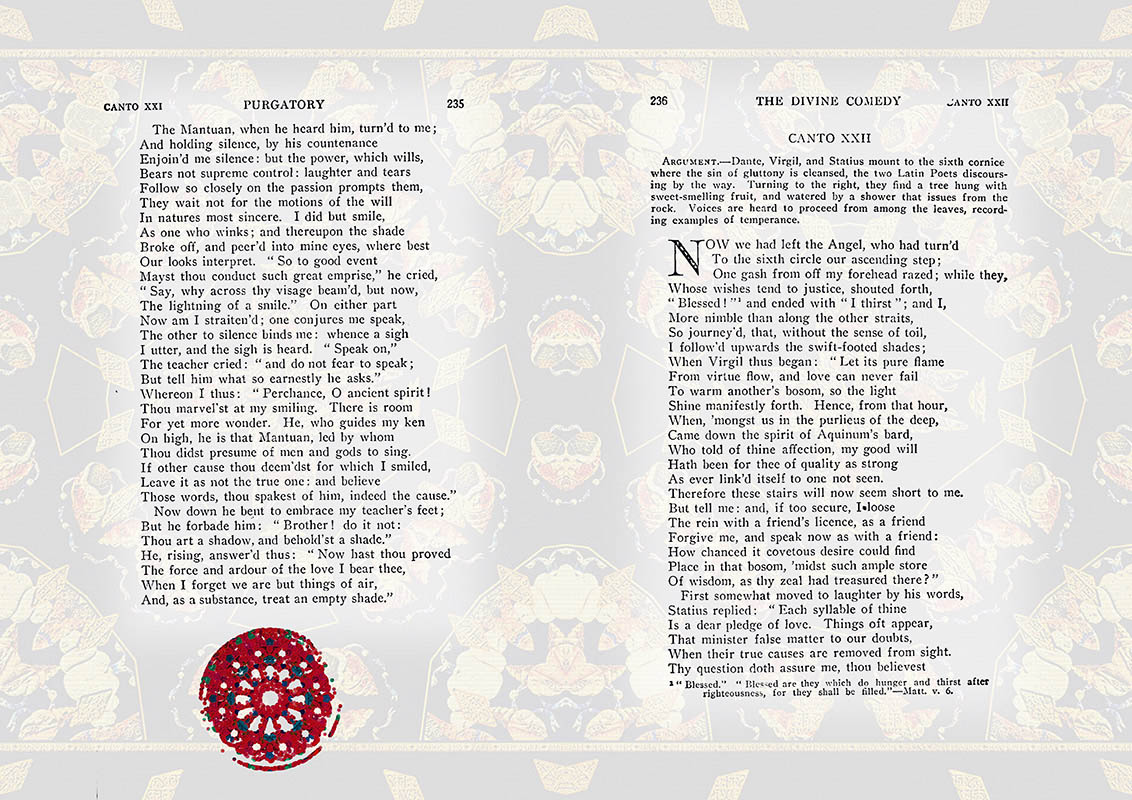
William Blake:
Le illustrazioni della Divina Commedia di William Blake riflettono il suo stile visionario e simbolico unico. L'arte di Blake spesso sfidava le norme convenzionali, caratterizzata da linee intricate e vorticose e una qualità onirica. La sua interpretazione dell'opera di Dante si concentra sugli aspetti spirituali e allegorici, riflettendo le sue inclinazioni mistiche personali. Le illustrazioni di Blake approfondiscono il viaggio psicologico e spirituale dell'anima, enfatizzando temi di redenzione e risveglio spirituale. Il suo impatto artistico fu inizialmente limitato durante la sua vita, ma il suo lavoro guadagnò riconoscimento negli anni successivi, influenzando generazioni successive di artisti con il suo approccio non convenzionale e profondamente introspettivo.
Salvador Dalí:
Le illustrazioni della Divina Commedia di Salvador Dalí offrono un'interpretazione surreale e avanguardistica. Lo stile di Dalí si caratterizza per prospettive distorte, paesaggi onirici e immagini giustapposte. Le sue illustrazioni riflettono la sua fascinazione per l'inconscio e l'irrazionale. L'approccio innovativo di Dalí rimmagina l'epopea di Dante in un modo che enfatizza le dimensioni psicologiche e simboliche della narrazione. Le sue visuali uniche e spesso disorientanti sfidarono le norme artistiche tradizionali e fornirono una lente fresca attraverso cui interagire con il testo. L'impatto di Dalí sulla storia dell'arte è segnato dal suo contributo al movimento surrealista e dalla sua capacità di colmare il divario tra temi letterari classici e l'espressione artistica contemporanea.
Questi artisti hanno lasciato ciascuno un'impronta indelebile sull'interpretazione artistica della Divina Commedia di Dante. I loro stili e approcci distinti rivelano la diversità di risposte artistiche a quest'opera senza tempo, dall'eleganza classica all'intensità drammatica, dal simbolismo visionario all'innovazione surreale. Le loro illustrazioni non solo mostrano le loro inclinazioni artistiche personali, ma contribuiscono anche alla ricca trama di interpretazioni visive che continuano a affascinare il pubblico e a plasmare la percezione del capolavoro di Dante nella storia dell'arte.
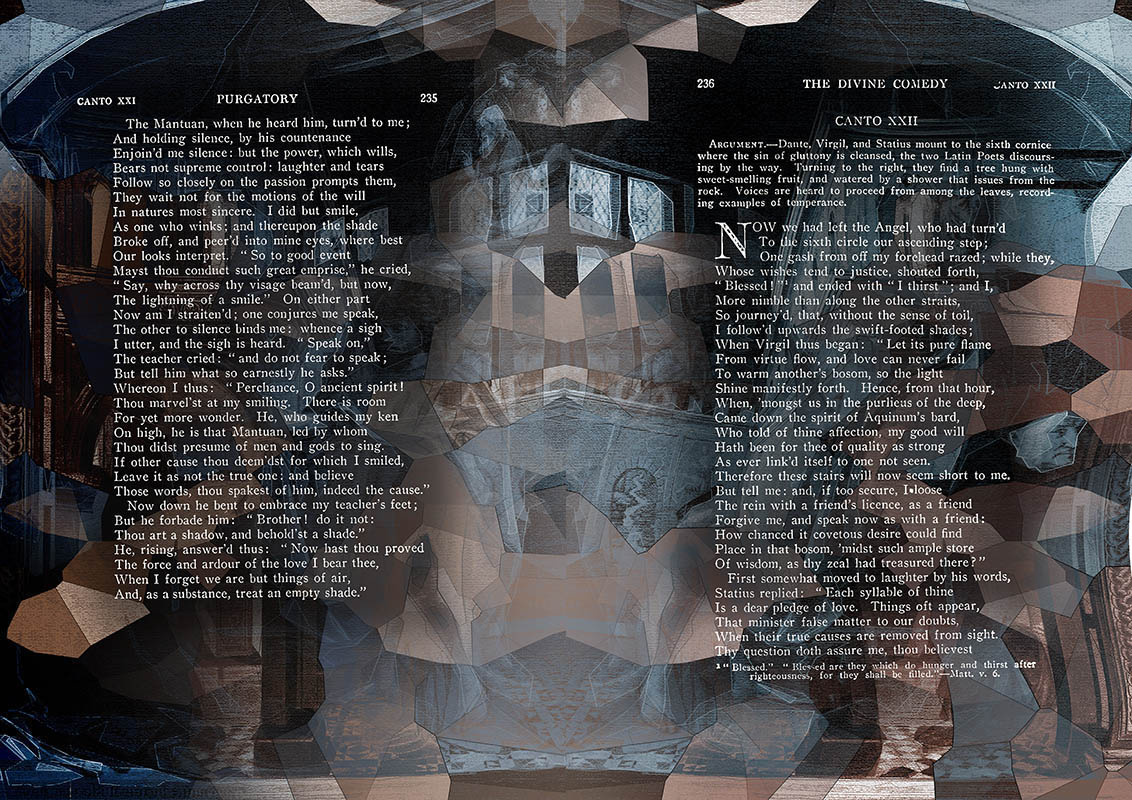
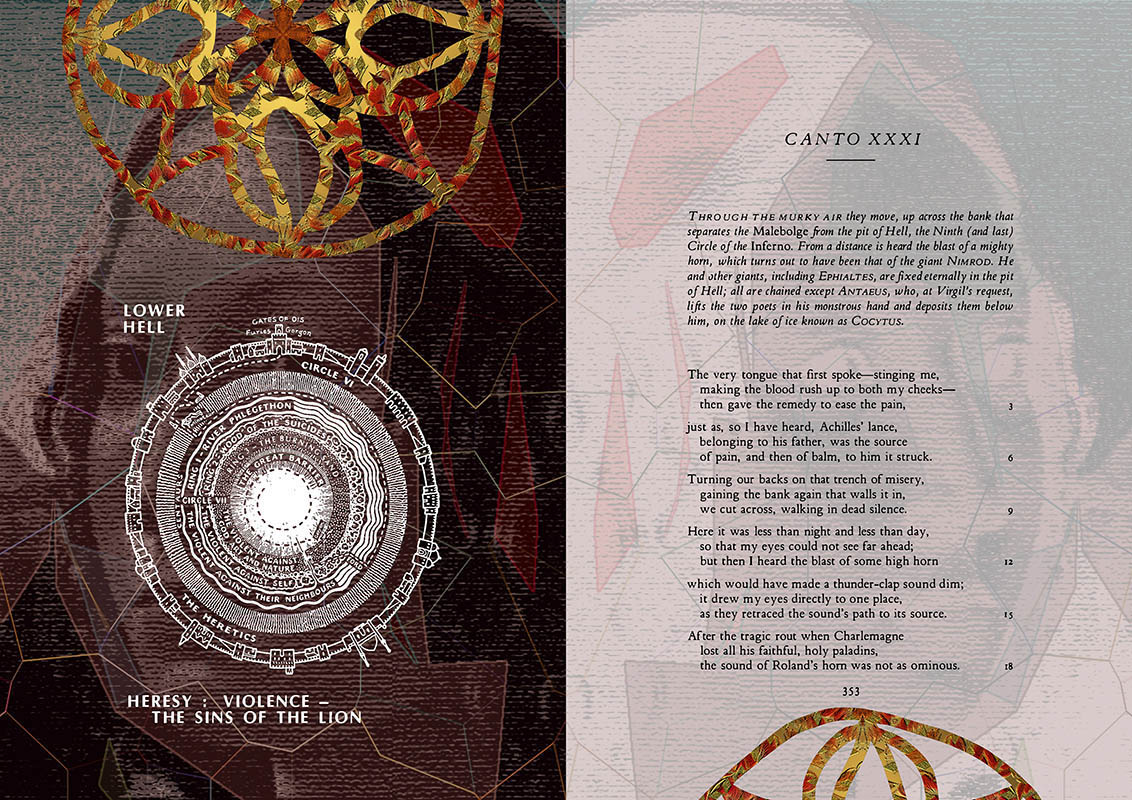
Tim White-Sobieski: Portfolio di stampe e disegni per la Divina Commedia di Dante Alighieri.
L'Amore Trasformato di Dante: Riflessioni sull'Amore del Poeta per Beatrice
Il poeta italiano Dante Alighieri scrisse la Divina Commedia (La Commedia) più di 700 anni fa. Descrive il viaggio di un uomo nell'aldilà, raccontando una storia senza tempo sull'amore, la fede e la giustizia.
L'attuale portfolio artistico creato dall'artista Tim White-Sobieski è probabilmente la collezione più completa di illustrazioni per il poema. Comprende circa 400 illustrazioni e più di 200 disegni per gli elementi del libro relativi ai capitoli e ai versi.
Come l'artista descrive: "La mia ispirazione è nata dall'idea che per sperimentare il vero amore e l'intero spettro delle emozioni, un uomo deve attraversare tutte le esperienze principali nella vita o nell'aldilà, come il Purgatorio, l'Inferno e essere premiato con il Paradiso, nella sua eterna ricerca dell'amore e della sua amata in questo mondo."
Un tema importante nella Commedia di Dante è il tema dell'amore. Sebbene non venga spesso menzionato nella storia, l'amore è ciò che spinge Dante a attraversare le fasi dell'Inferno. Una delle ragioni per cui Dante viaggia attraverso l'Inferno è cercare la sua amata Beatrice, sperando di trovarla in una delle fasi. Nell'Inferno, l'amore è rappresentato in molte forme diverse. La motivazione di Dante per compiere il suo viaggio attraverso l'inferno era l'amore che Beatrice, che si trova in paradiso, provava per lui. Il motivo per cui lei ha lasciato il paradiso era perché voleva che Virgilio guidasse Dante attraverso l'inferno. La storia dietro il motivo per cui Beatrice ricopre una figura santa è perché è stato il primo amore di Dante e non corrisposto. Si incontrarono a Firenze a una festa di maggio quando lui aveva nove anni e lei otto. Dante sostiene di averla incontrata solo due volte nella sua vita, ma lei aveva fatto un'impressione così profonda che l'ha portata con sé per tutta la vita.
È ben noto che Dante è uno dei più grandi poeti della civiltà occidentale. Il suo capolavoro, la Divina Commedia, è considerato uno dei vertici dell'umanità, un capolavoro che rivela qualcosa di significativo sulla natura della realtà e sul significato dell'essere umano. Generalmente ricordato per il suo viaggio attraverso il cosmo spirituale, oggi è meno noto il fatto che Dante sia l'autore di una grande storia d'amore. La storia riguarda Beatrice e Dante stesso, come è narrata nella Vita Nuova e nella Divina Commedia. Nella Vita Nuova, Dante raccontò la sua ammirazione per una donna fiorentina di nome Beatrice. Quando la vide per la prima volta all'età di nove anni, Dante si innamorò e rimase innamorato per il resto della sua vita. Anni dopo, Beatrice morì all'età di ventiquattro anni e Dante cadde in una profonda tristezza. Desiderando immortalare l'amore della sua vita, Dante compose 31 poesie e commenti circostanti in memoria di Beatrice.
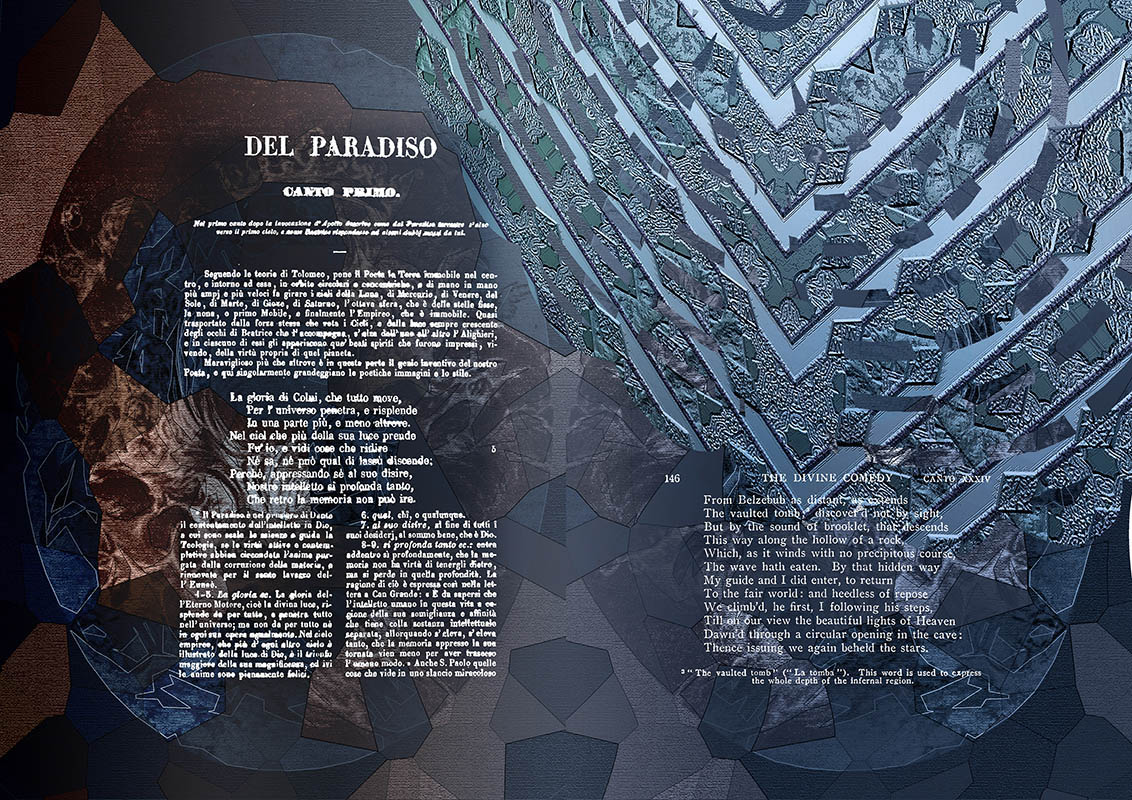
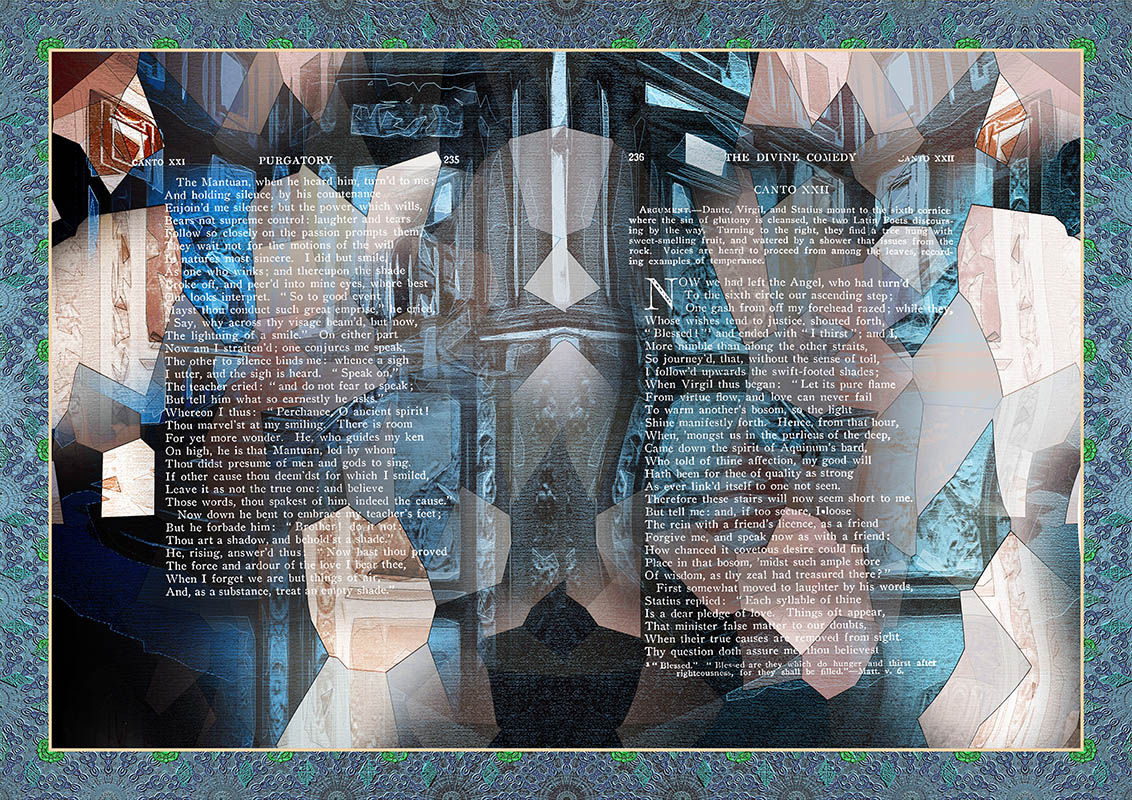
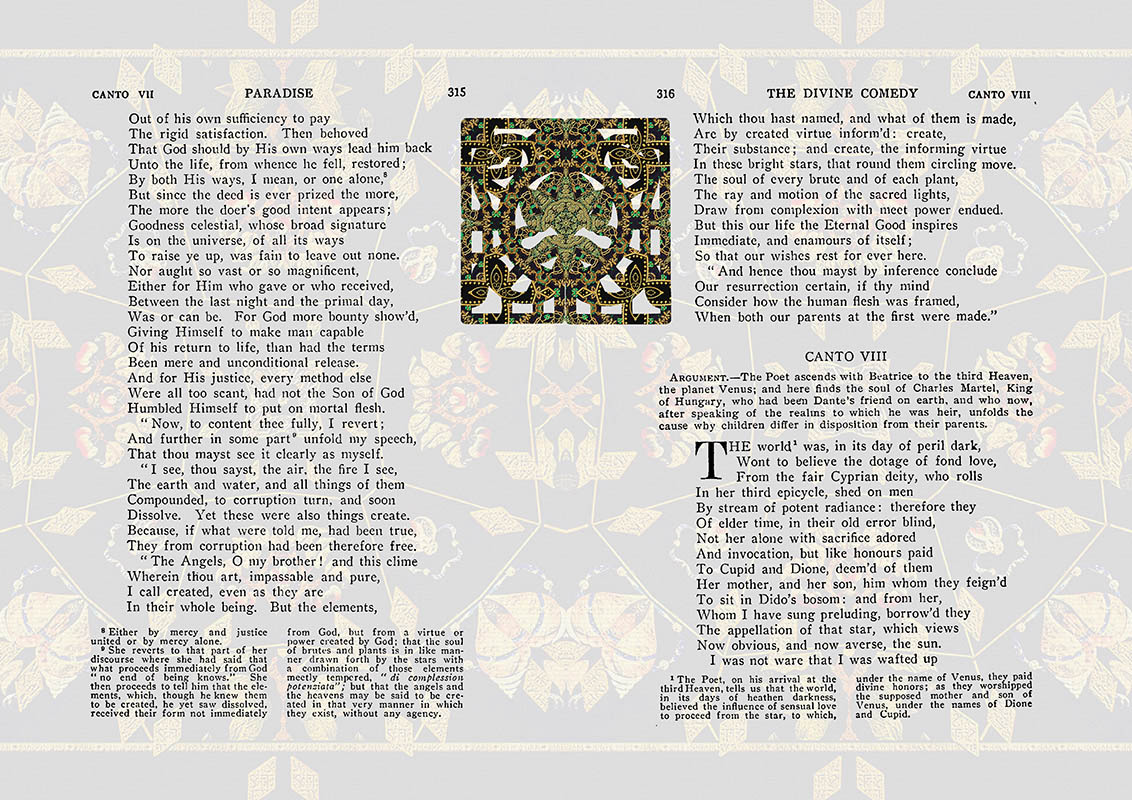
Il racconto della storia d'amore tra Dante e Beatrice termina momentaneamente, ma raggiungerà infine la sua conclusione anni dopo nella Divina Commedia. Nel Canto V dell'Inferno, Dante compie qualcosa di importante con i personaggi di Francesca e Paolo. Questo canto può essere interpretato come un distacco dalle peggiori eccessi dell'amore cortese o come un interrogativo sull'efficacia di tutto il genere letterario. In ogni caso, vediamo una trasformazione da cortese a sacro nel modo in cui Dante rappresenta la sua ammirazione per Beatrice. A questo punto dell'Inferno, si narra che Francesca e Paolo siano caduti in un peccaminoso desiderio dopo aver letto il racconto dell'amore cortese di Sir Lancelot. Con le lacrime agli occhi, Francesca racconta al pellegrino Dante come sia caduta nel peccato:
"Un giorno, per passare il tempo,
leggemmo di Lancelot, di come si innamorò;
eravamo soli, innocenti di sospetti.
Le nostre occhiaie furono spesso collegate
dal libro che leggevamo; i nostri volti arrossirono e impallidirono.
Nel momento di una sola riga cedemmo:
fu quando leggemmo delle labbra tanto desiderate
ora baciare da un amante così famoso,
che costui (che non mi lascerà mai)
mi baciò allora la bocca, tremando mentre lo faceva".
( La Divina Commedia: Inferno, trad. Mark Musa)
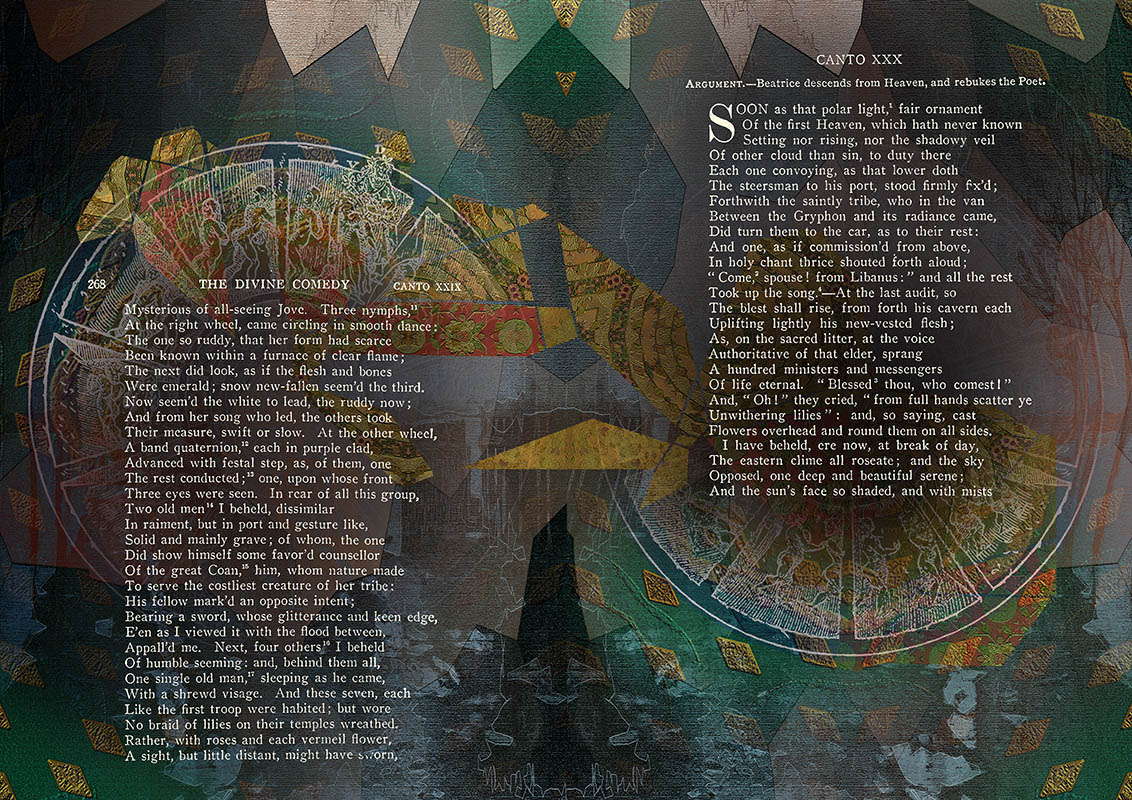
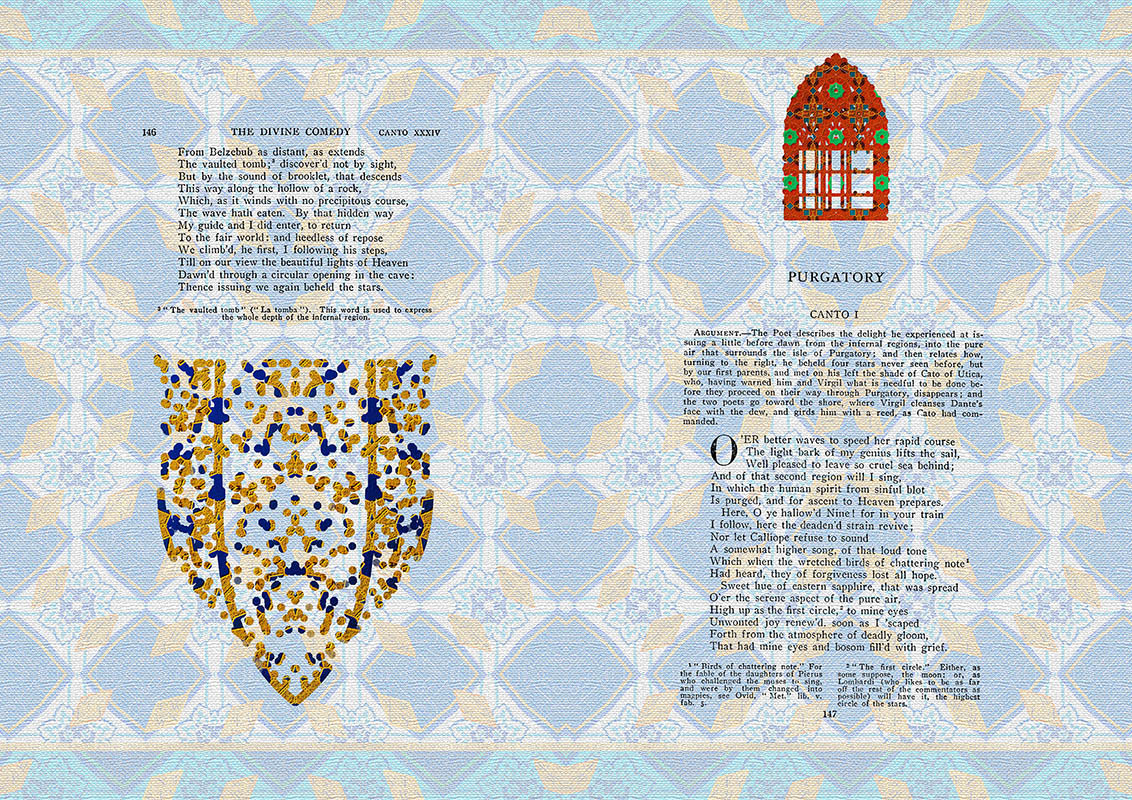
In accordo con l'amore cortese, Francesca rappresenta l'amore come una forza compulsiva che non può essere resistita. Dante, in un certo senso, potrebbe essere d'accordo, come si evince dal suo precoce impegno nella tradizione letteraria dell'amore cortese. Tuttavia, Dante non suggerirebbe quindi che sia accettabile permettere alla passione dell'amore di sopraffare la ragione. Dopotutto, una tempesta di appetiti lussuriosi non può essere correttamente chiamata amore. Il Canto V dell'Inferno ci insegna che l'amore può essere appassionato, ma deve essere in accordo con la giusta ragione e la moralità. Non può condurci, come ha fatto con Francesca e Paolo, verso atti lussuriosi e immorali. Il vero amore non ci travolge in una violenta tempesta di passione. L'amore non può essere separato dalla verità.
Contrariamente a Francesca e ai suoi numerosi seguaci nel mondo post Rivoluzione Sessuale, il vero amore non è lussurioso. La nostra attuale cultura degli incontri occasionali farebbe bene a prendere nota. Il potere moralmente elevante dell'amore è espresso da Dante alla fine del Purgatorio e in tutto il Paradiso. Possiamo forse dire che l'amore di Dante, come presentato nella Vita Nuova, si trasforma in qualcosa di più elevato e puro nella Divina Commedia. L'amore di Dante assume una natura così colma di grazia e moralmente elevata che solo un'immaginazione profondamente cristiana può catturarla. Un amore che in precedenza era descritto in modo cortese è ora, dopo anni di crescita come scrittore, descritto in modo sacro. Il suo amore è così grande che ha richiesto l'intera teologia cristiana di Inferno, Purgatorio e Paradiso per catturarlo.
Non è una sorpresa che l'ingresso di Beatrice sia il culmine del Purgatorio. Infatti, Beatrice svolge un ruolo critico nell'intera trama della Divina Commedia. Quando il pellegrino Dante si ritrova perso in una foresta oscura, è Beatrice che si avvicina a Virgilio e gli chiede di guidare Dante verso la salvezza. Colpito dalla sua bellezza, Virgilio obbedisce esattamente a quanto gli è stato ordinato. Poco dopo, quando Virgilio ha condotto Dante il più lontano possibile, scompare e Beatrice diventa la nuova guida. Inoltre, durante l'intero viaggio, è proprio il suo amore per Beatrice che lo incoraggia a continuare. Quando Dante scende nella misera e orribile oscurità dell'Inferno, lo fa perché un viaggio verso il basso è necessario per ascendere in Paradiso con Beatrice. Deve fare la sua discesa affinché possa rivedere Beatrice, poiché l'amore è indissolubilmente legato alla sofferenza e al sacrificio. A volte richiede di andare dove non vorremmo andare. Poco dopo, quando Dante sta salendo sul Monte Purgatorio, lo fa con la speranza di rivedere Beatrice di nuovo.
Come la donna che Dante amava nella vita reale, Beatrice è rappresentata come simbolo della rivelazione cristiana. È sia una donna reale che un simbolo, ed è solo un simbolo efficace perché era una donna reale. È come se Beatrice, l'amore della sua vita, lo abbia aiutato a rivelare Dio. È come se gli abbia mostrato un'anteprima dell'eternità quando era viva, e di conseguenza è la sua guida attraverso l'eternità in tutto il poema. Nel Paradiso, quindi, Dante deve solo guardare Beatrice per ascendere più vicino a Dio. Dante guarda Beatrice, e Beatrice guarda nei cieli più alti. Dante vede poi riflessi negli occhi di Beatrice, come in specchi, i cieli più alti sopra entrambi.
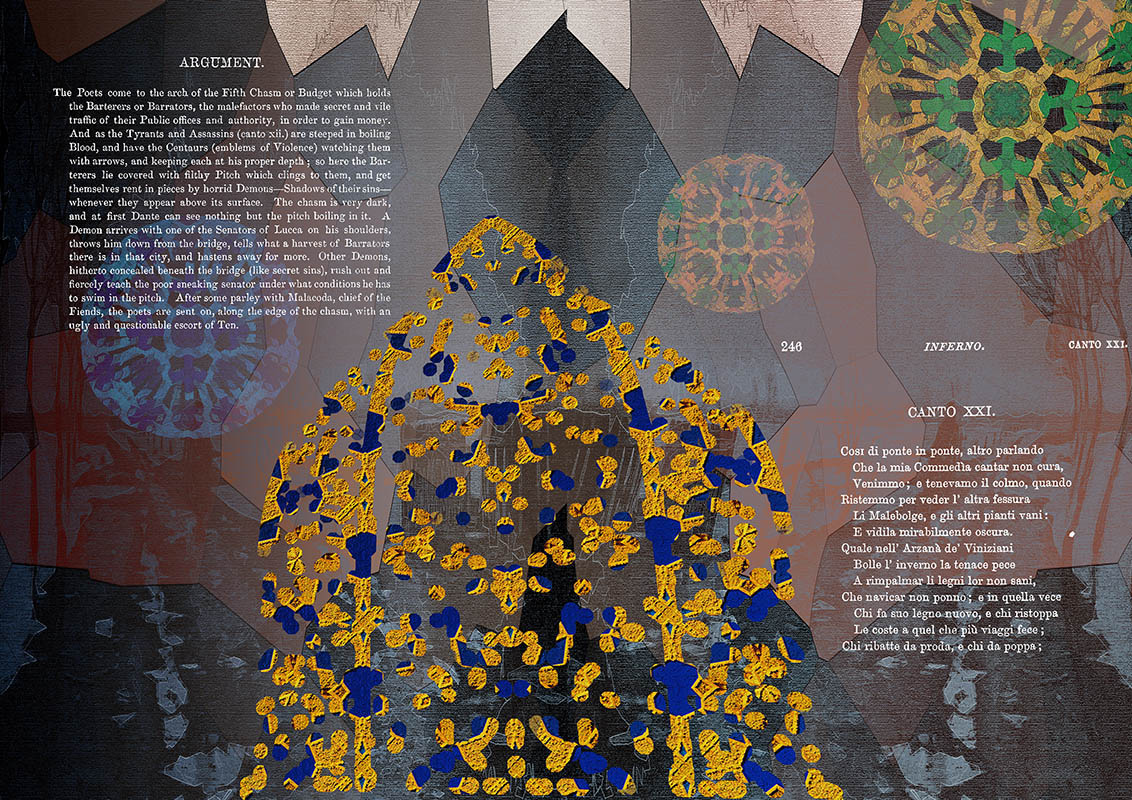
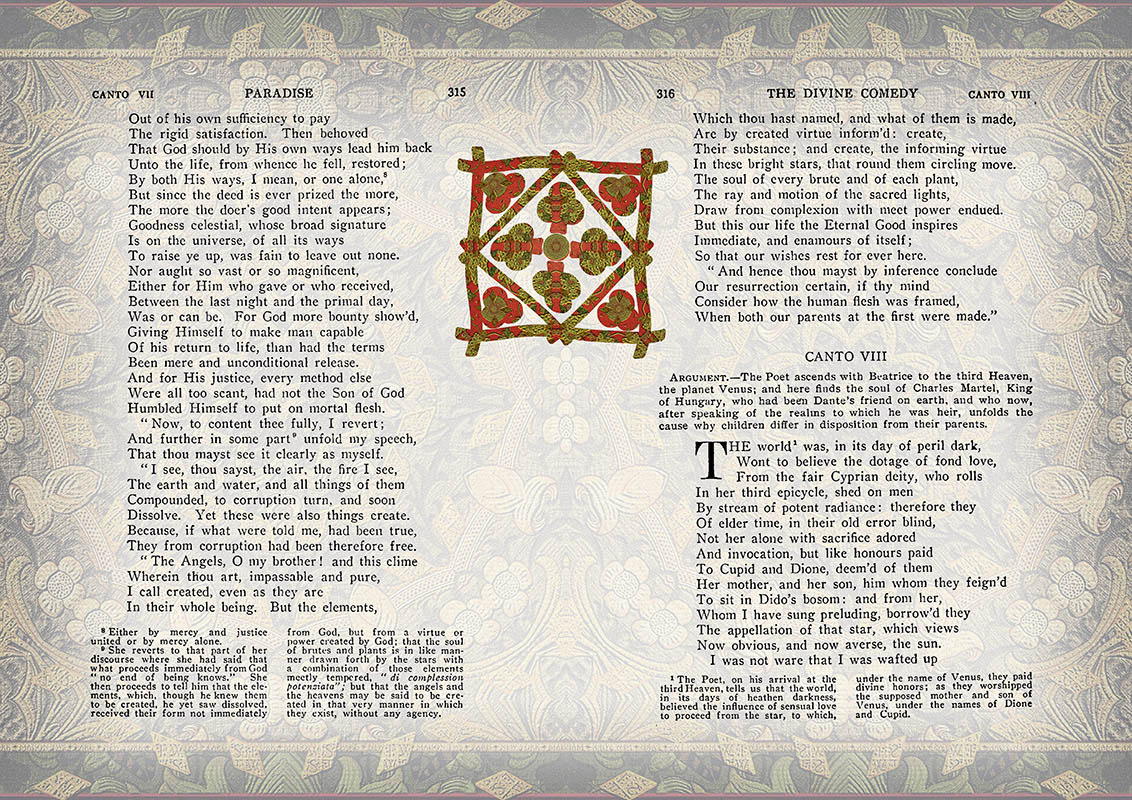
Tim White-Sobieski:
Portfolio of prints and drawings for Divine Comedy by Dante Alighieri.
Dante’s Transformed Love: Musings on the Poet’s Love for Beatrice
Italian poet Dante Alighieri wrote The Divine Comedy (La Commedia) more than 700 years ago. It describes one man's journey through the afterlife, telling a timeless story about love, faith, and justice
The current artistic portfolio created by artist Tim White-Sobieski is probably the most comprehensive set of illustrations to the poem. It consists of around 400 illustrations and more than 200 book element designs for chapters and verses.
As artist describes: “My inspiration came from the idea that in order to experience true love and the full spectrum of emotions, a man has to go through all major experiences in lifetime or after life , like Purgatory , hell, and to be rewarded by Paradise, in his eternal quest for love and his beloved in this world”
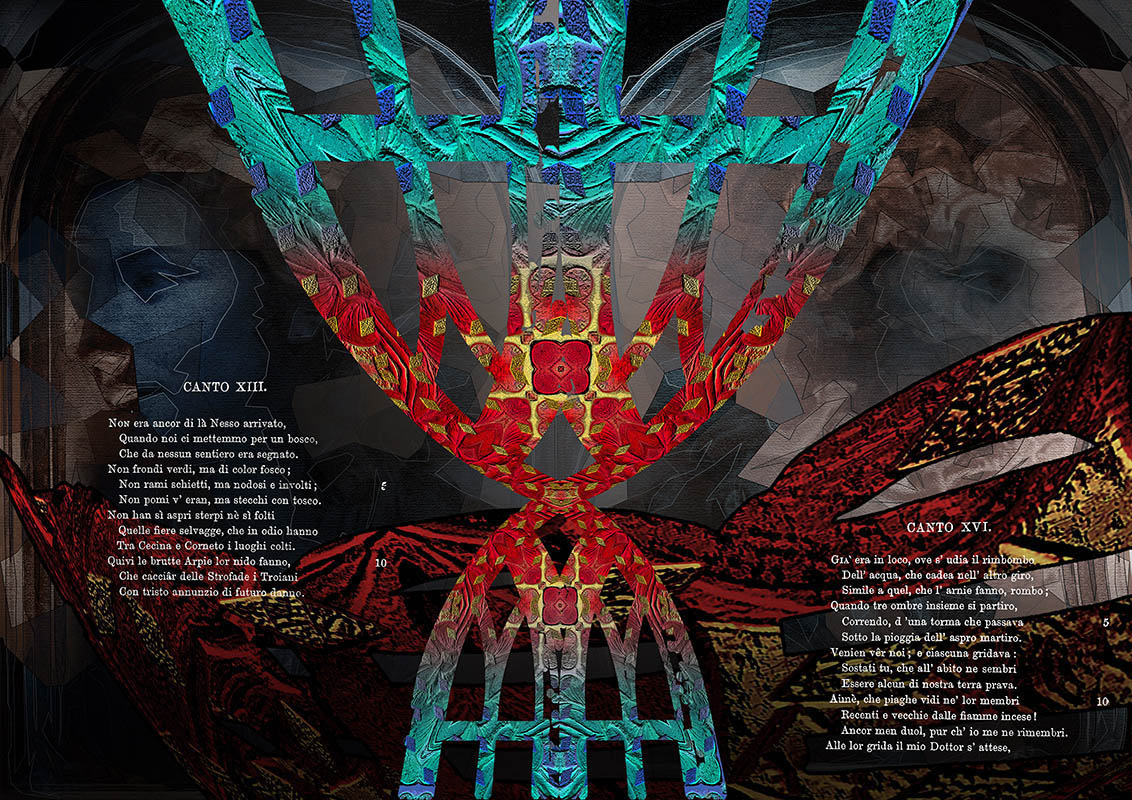
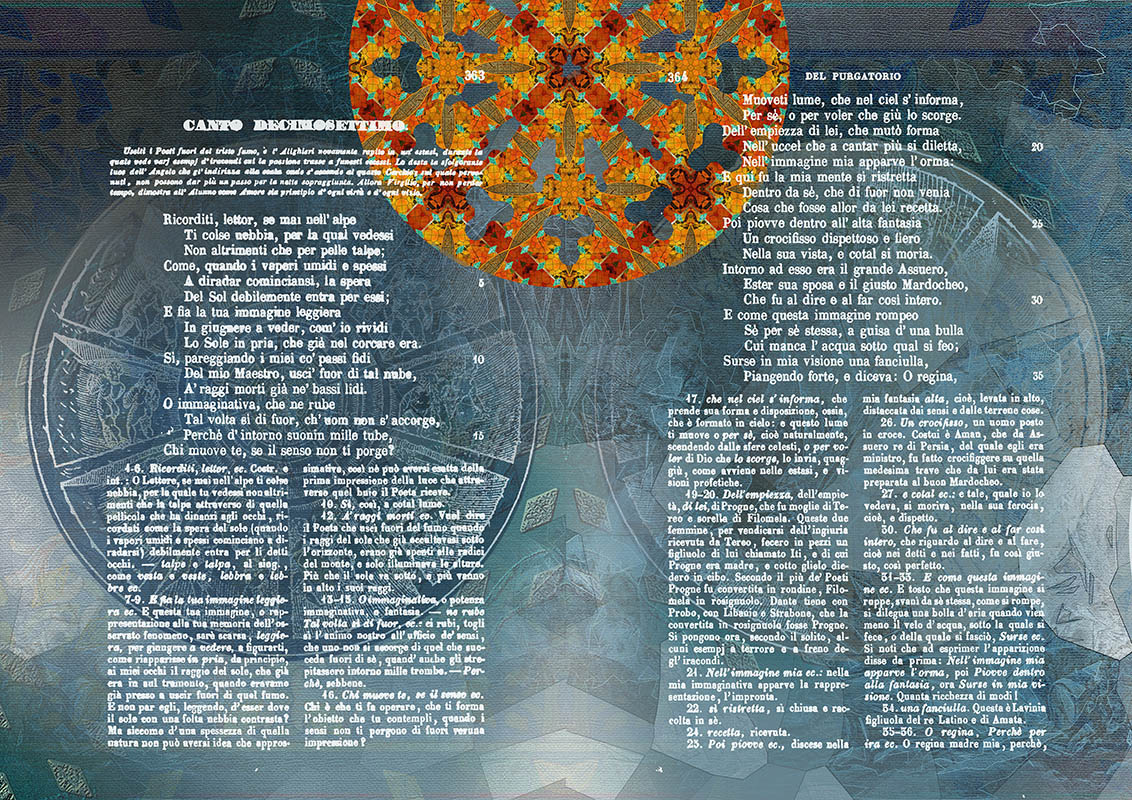
An important theme in Dante's Commedia is the theme of love. Although it is not often mentioned in the story, love is what drives Dante to go through the stages of Hell. One of the reasons Dante is traveling through Hell is to look for his lover, Beatrice, hoping to find her in one of the stages
In the Inferno, Love is depicted in many different forms. Dante's motivation to make his journey through hell was because of the love Beatrice, who is in heaven, had for him. The reason why she left heaven was because she wanted Virgil to guide Dante through hell.
The story behind why Beatrice plays a holy figure is because she was Dante's first and unrequited love. They met in Florence at a Mayday party when he was nine and she was eight. Dante allegedly only met her twice in his life, but she had made such an impression that he carried it throughout his life.
It is well-known that Dante is one of the greatest poets in Western Civilization. His magnum opus, The Divine Comedy, is considered one of the crowning achievements of humanity, a masterpiece that reveals something significant to us about the nature of reality and what it means to be human.
Generally remembered for his journey through the spiritual cosmos, it is less well-known today that Dante is the author of a great love story. The story is the one between Beatrice and Dante himself as it is told in the Vita Nuova and the Divine Comedy.
In the Vita Nuova, Dante told the story of his admiration for a Florentine woman named Beatrice. When seeing her for the first time at the age of nine, Dante fell in love, and he remained in love for the rest of his life. Years later, Beatrice died at the young age of twenty-four and Dante fell into a deep sadness. Wanting to immortalize the love of his life, Dante composed 31 poems and surrounding commentary in Beatrice’s memory.
♦
The telling of the love story between Dante and Beatrice momentarily ended, yet it would eventually reach its culmination years later in the Divine Comedy.
In Canto V of the Inferno, Dante does something important with the characters Francesca and Paulo. This canto can be interpreted as either distancing himself from the worst excesses of courtly love or questioning the efficacy of the entire literary genre. Either way, though, we see a transformation from courtly to sacred in the way that Dante depicts his admiration for Beatrice. At this point in the Inferno, it is told that Francesca and Paulo fell into a sinful lust after reading the courtly love tale of Sir Lancelot. With tears flowing from her eyes, Francesca tells the pilgrim Dante how she fell into sin:
“One day we read, to pass the time away,
of Lancelot, of how we fell in love;
we were alone, innocent of suspicion.
Time and again our eyes were brought together
by the book we read; our faces flushed and paled.
To the moment of one line alone we yielded:
it was when we read about those longed-for lips
now being kissed by such a famous lover,
that this one (who shall never leave my side)
then kissed my mouth, and trembled as he did.”
( The Divine Comedy: Inferno, trans. Mark Musa)
♦
In accordance with courtly love, Francesca depicts love as a compulsive force that cannot be resisted. Dante, to a certain extent, might agree, as is evident from his early commitment to the literary tradition of courtly love. However, Dante would not therefore suggest that, as a result, it is acceptable for a person to allow the passion of love to overcome reason. After all, a storm of lustful appetites cannot properly be called love. Canto V of the Inferno teaches us that love can be passionate, but it must be in accordance with right reason and morality. It cannot lead us, as it did Francesca and Paulo, into lustful and immoral acts. True love does not swirl us up and down, back and forth, in a violent storm of passion. Love cannot be separated from truth. Contrary to Francesca and her many followers in the post Sexual Revolution world, true love is not lustful. Our current hookup culture would do well to take note.
The morally elevating power of love is conveyed by Dante at the end of the Purgatorio and throughout the Paradiso. We can perhaps say that Dante’s love as presented in the Vita Nuova transforms into something higher and purer in The Divine Comedy. Dante’s love takes on such a grace-filled and morally elevating nature that only a thoroughly Christian imagination can possibly capture it. A love that was previously described in a courtly manner is now, after years of growth as a writer, described in a sacred manner. His love is so great that it took the entire Christian theology of Hell, Purgatory, and Heaven to capture it.
♦
It is no wonder that the entrance of Beatrice is the climax of the Purgatorio. In fact, Beatrice plays a critical role in the overall plot of the Divine Comedy. When the pilgrim Dante finds himself lost in a dark wood, it is Beatrice who approaches Virgil and asks him to lead Dante back to safety. Struck by her beauty, Virgil does exactly as he is commanded. Soon thereafter, when Virgil has led Dante as far as he can go, he vanishes, and Beatrice becomes the new guide.
In addition, throughout the entire journey, it is at several points his love for Beatrice that encourages him to go on. When Dante descends into the miserable and hideous darkness of Hell, he does so because a journey downward is necessary to soar upward with Beatrice in Heaven. He must make his descent so that he can see Beatrice again, as love is inextricably connected to suffering and sacrifice. It requires us, at times, to go where we do not want to go. Soon thereafter, when Dante is suffering up Mount Purgatory, he does so in hopes of seeing Beatrice again.
♦
As the woman whom Dante loved in real life, Beatrice is depicted as representing Christian revelation. She is both a real woman and a symbol, and she is only an effective symbol because she was a real woman. It is as if Beatrice, the love of his life, helped reveal God to him. It is as if she showed him a glimpse of eternity when she was alive, and as a result she is his guide through eternity throughout the poem. Throughout the Paradiso, therefore, Dante only has to look at Beatrice in order to ascend closer to God. Dante looks at Beatrice, and Beatrice looks into the highest heavens. Dante then sees reflected in Beatrice’s eyes, as in mirrors, the highest heaven above them both.
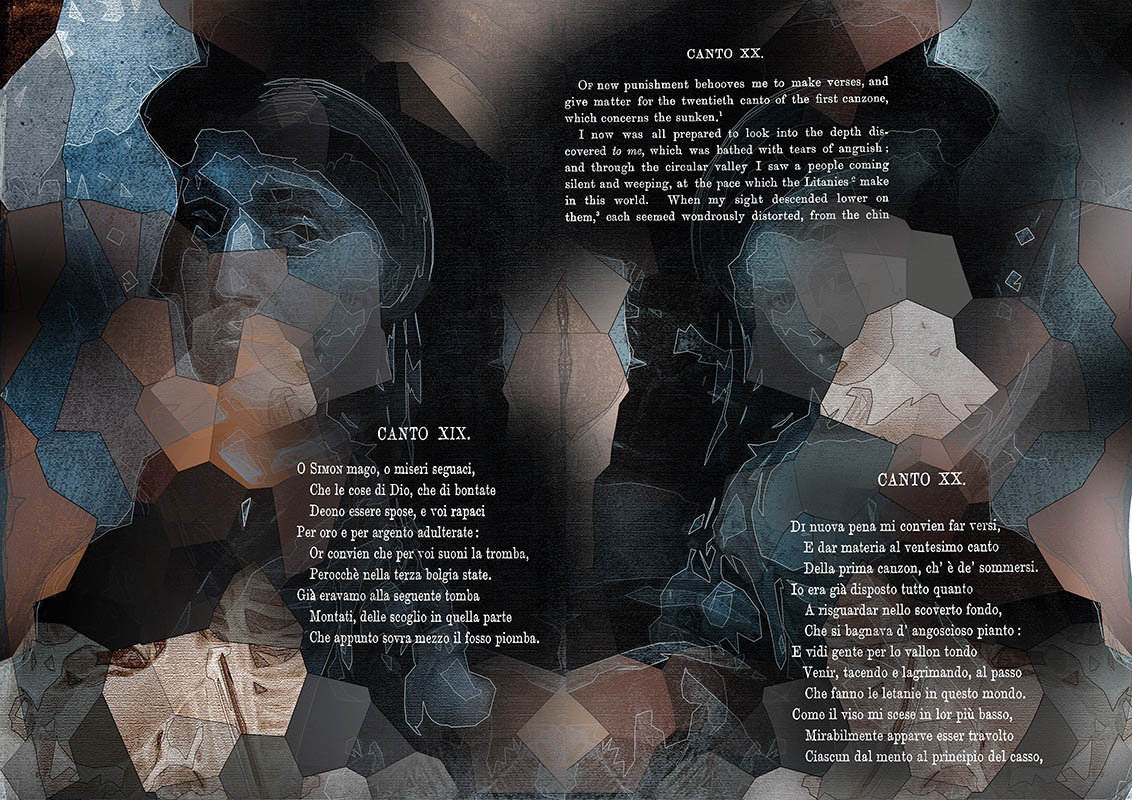
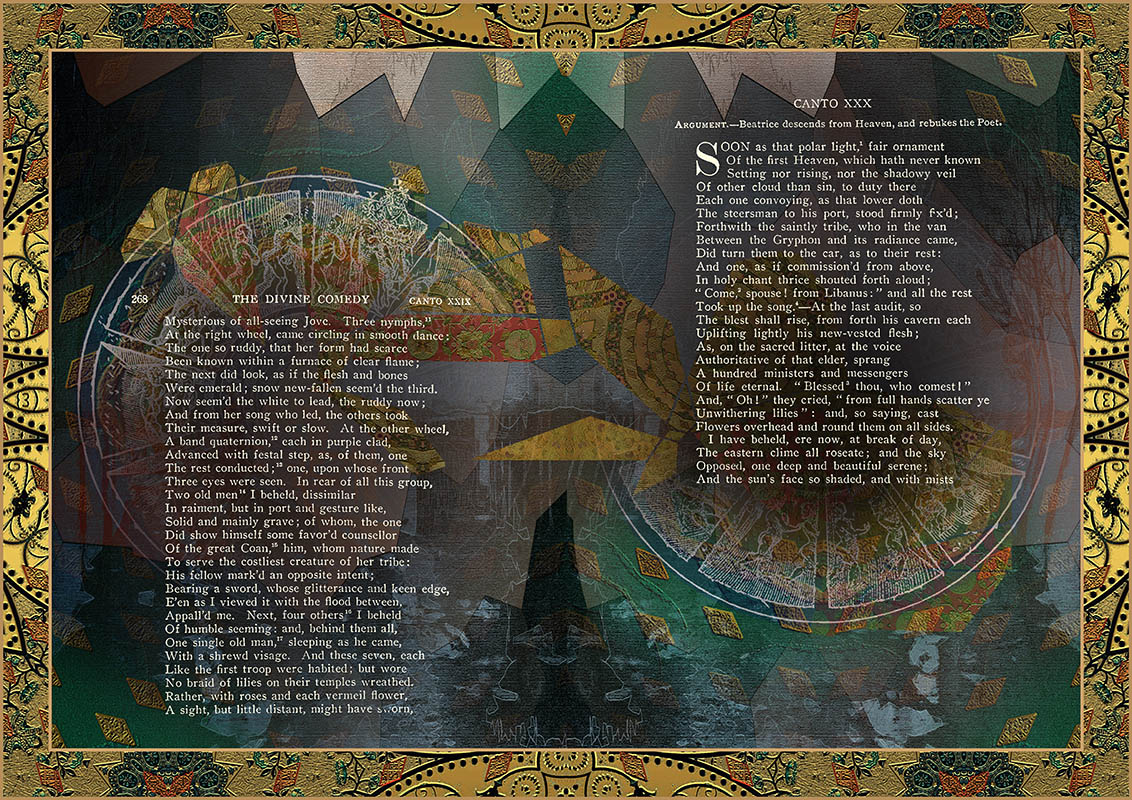
Tim White-Sobieski
"La Divina Commedia" Manuscript project.
Limited edition art prints and book.
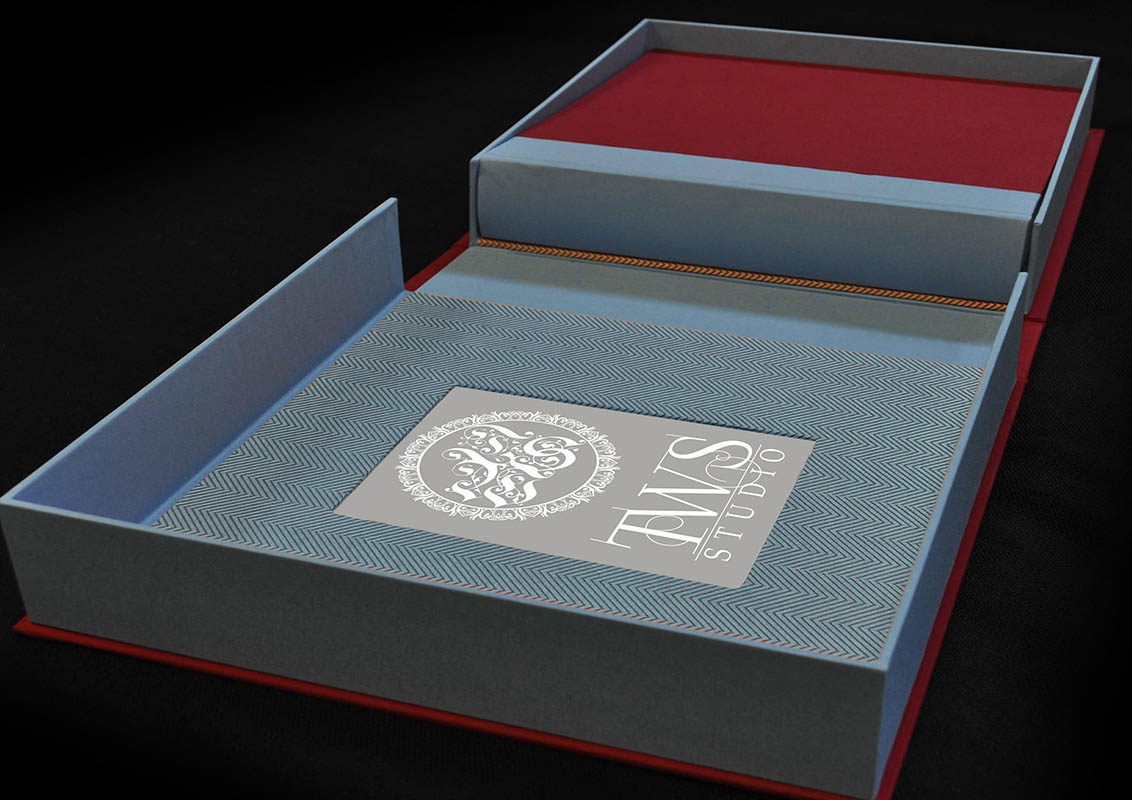
About the project:
First in the history of literature and arts since the 15th century, a fully hand-illustrated version of the Divine Comedy,
a complete series of unique illustrations for every canto, totaling more than 1200 unique illustrative artworks
printed as a book and as a set of limited edition hand colored prints.

An unprecedented artwork for collectors, museums, libraries and bibliophile collectors and scholars.
The most beautiful and complete version of the Divine Comedy ever created.
Each print edition comes in a decorated slipcase or deluxe protective case.
Limited edition in Italian and in English with stunning archival historic binding on Italian paper, printed on unique designed press for deluxe finishing.
A Symbol of Italian Culture, History and Language.
Individually signed by artist Tim White-Sobieski with certificate of authenticity.
Commemorative edition for the 700th Anniversary of Dante Alighieri’s death.
Designed and printed in Italy, by TWS Fine Press, Limited Edition. Gold embossed hard slipcase and artist custom made case for limited edition prints.

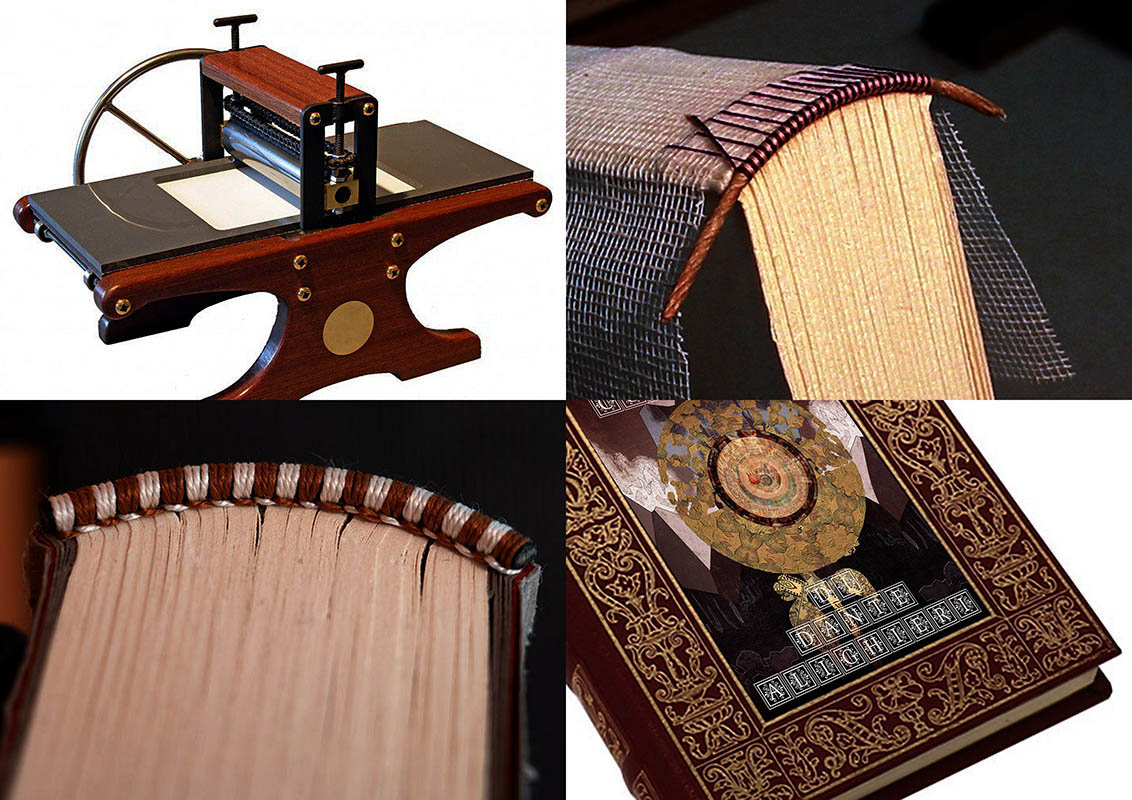
Ten years of work culminates in one of the most beautiful versions of the Divine Comedy ever created in the world history.
The project is a plot of collaborating with unique historic archives and private libraries, including Vatican archives,
Metropolitan Museum library and print collection, Smithsonian, Library of Congress, Washington D.C.,
George Peabody Library, Baltimore, USA; Bodleian Library, Oxford UK; British Museum;
Yale University rare book and manuscript library, New Haven, Connecticut, USA;
National Library of St. Mark’s, Venice, Italy; Abbey Library of Saint Gall, St. Gallen, Switzerland.
Presented here sample pages from the limited edition art book dedicated to the masterpiece by Dante Alighieri.

"La Divina Commedia" Manuscript exhibition project.
EXHIBITION VIEWS
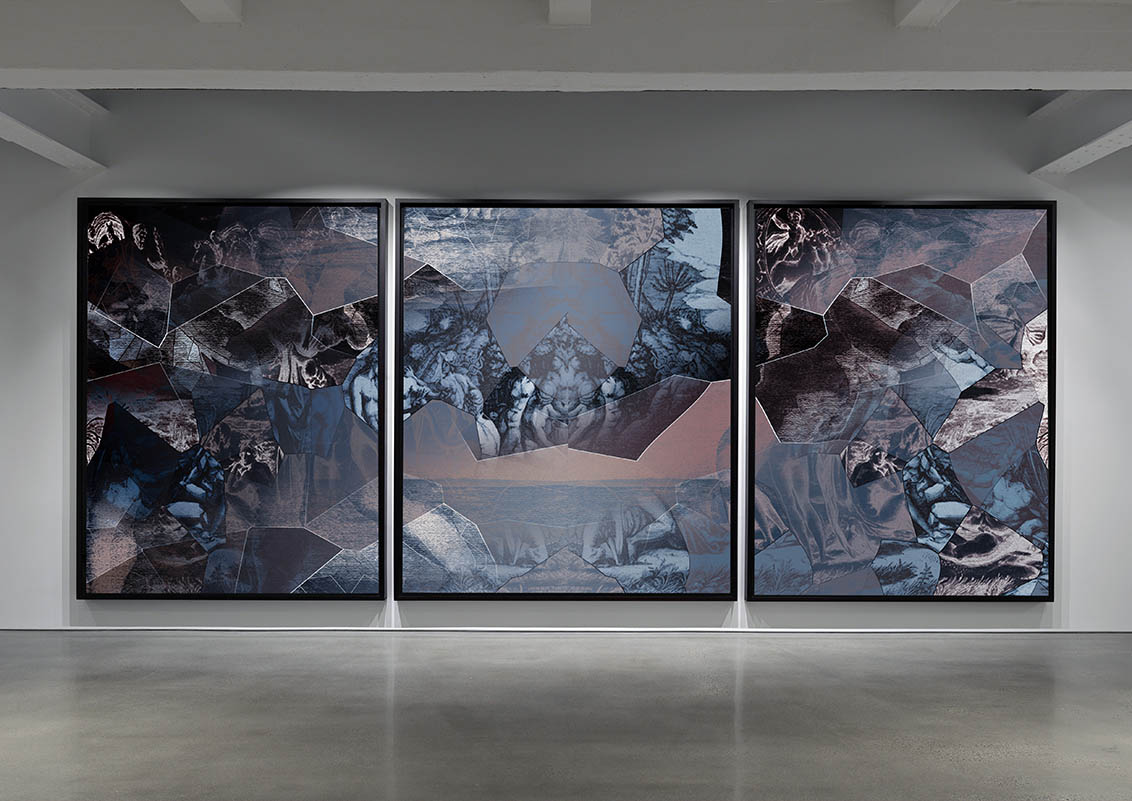
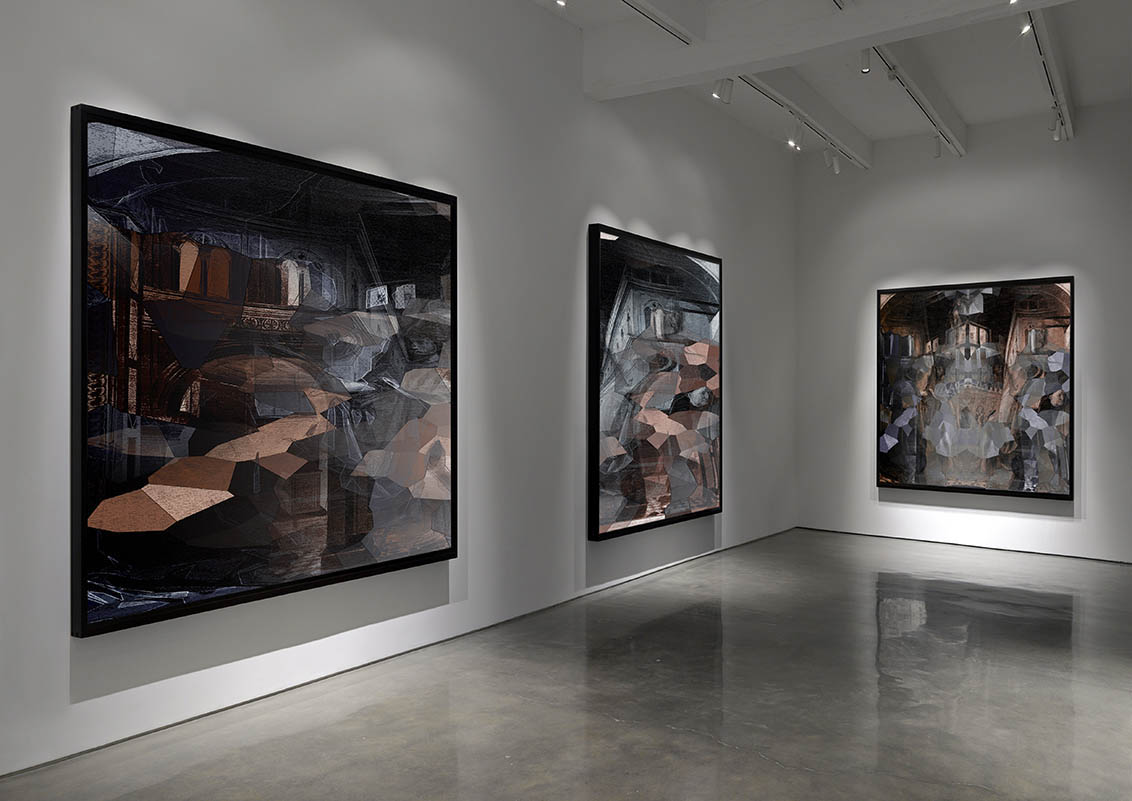
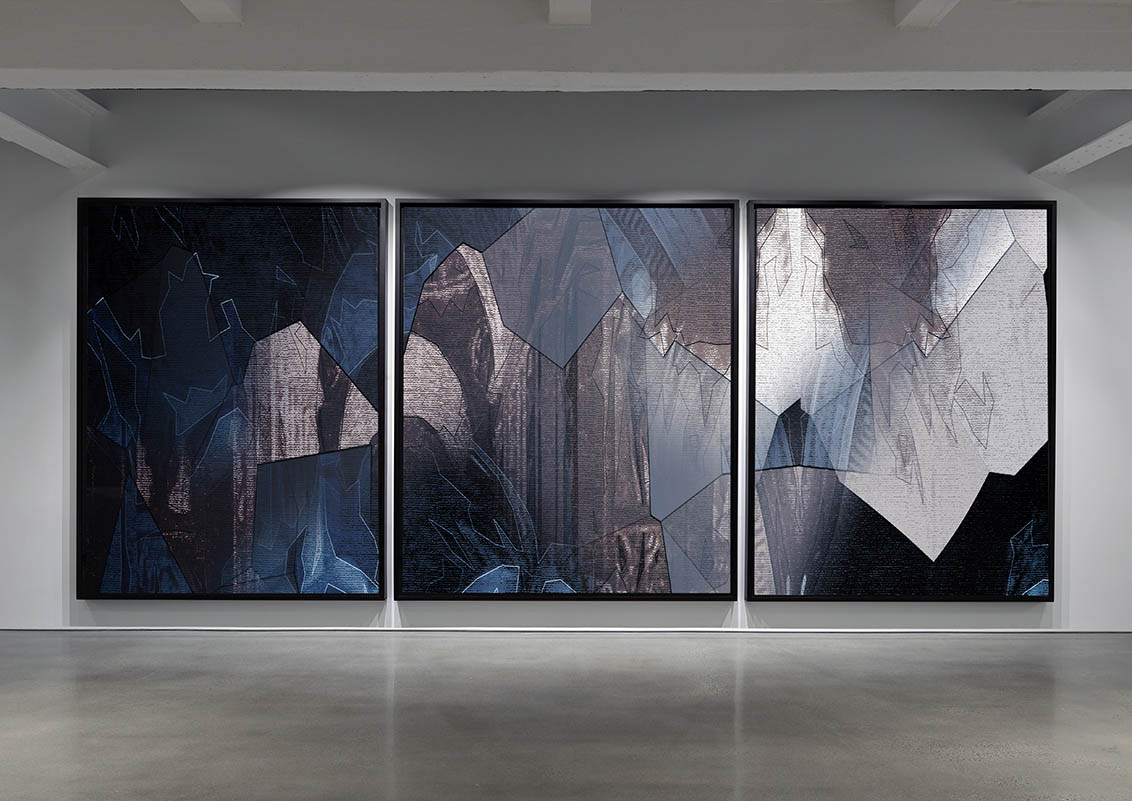
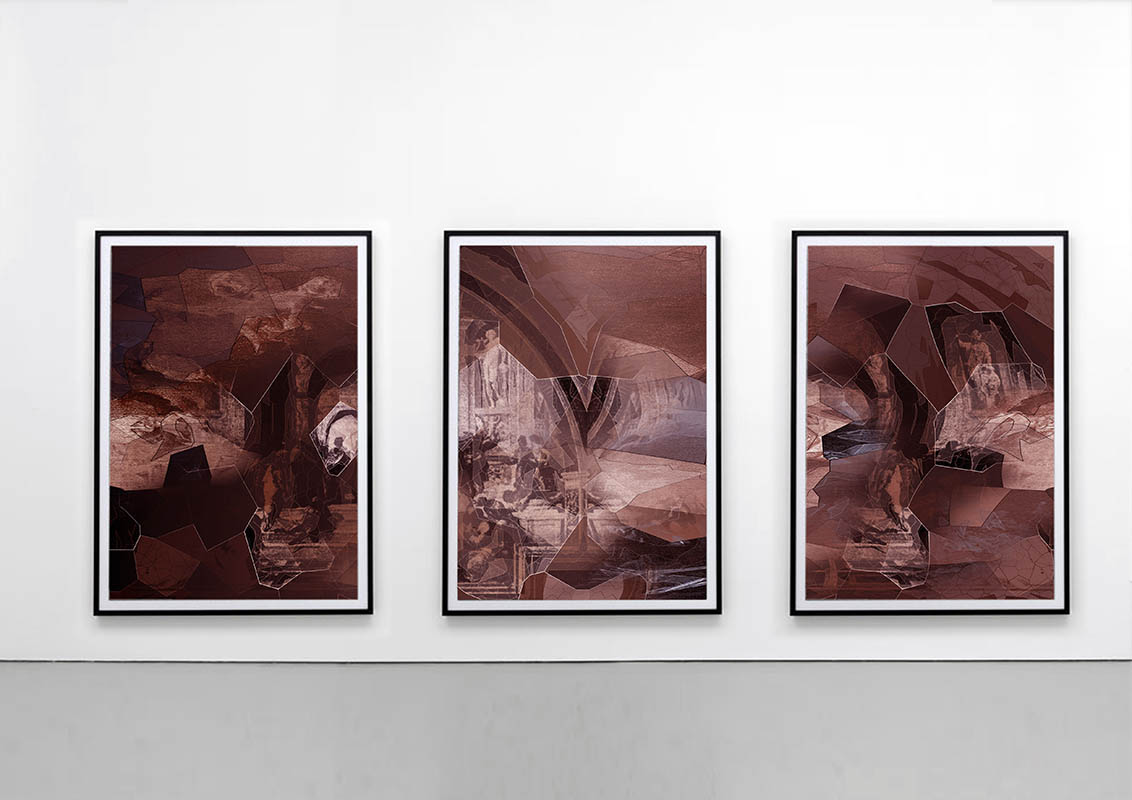
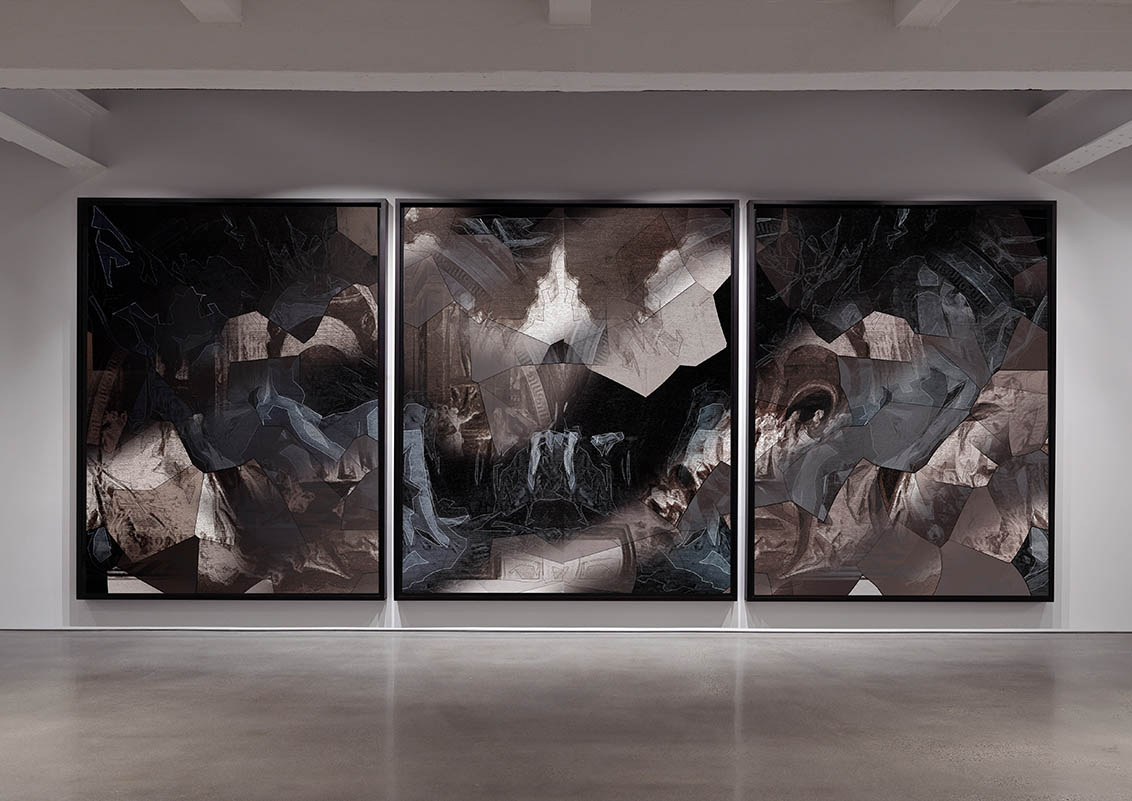
Limited edition art prints and book
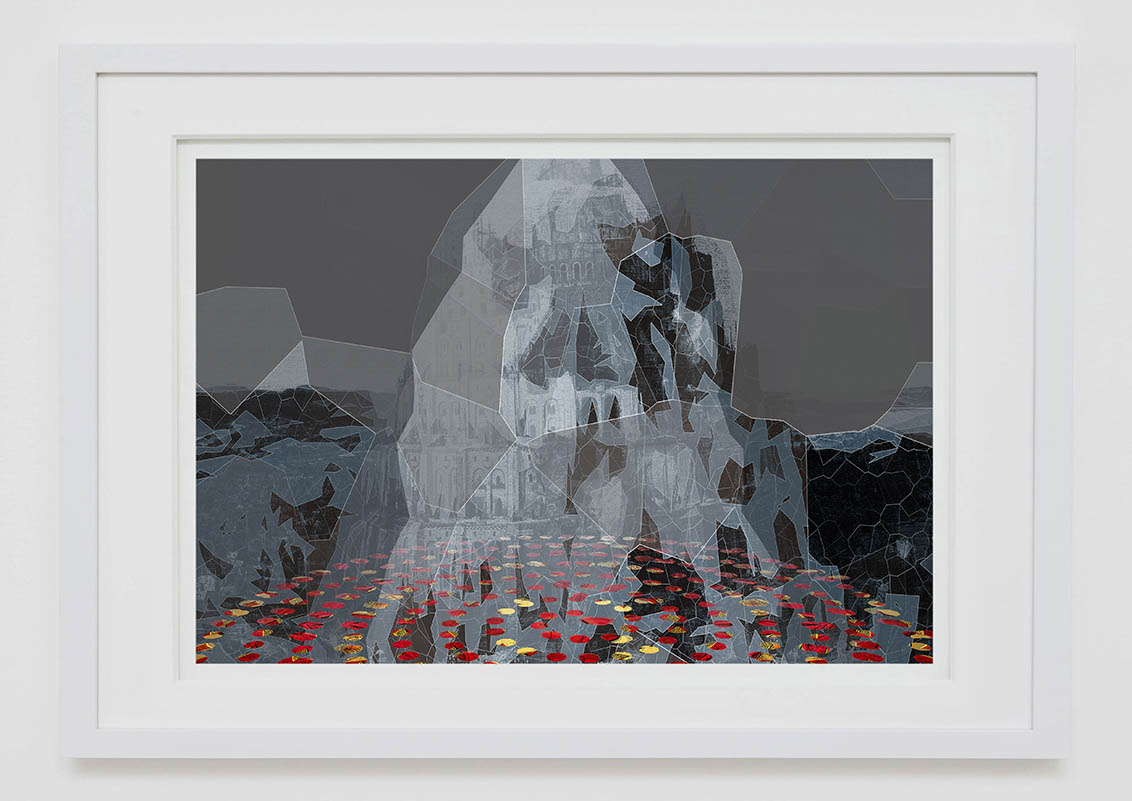
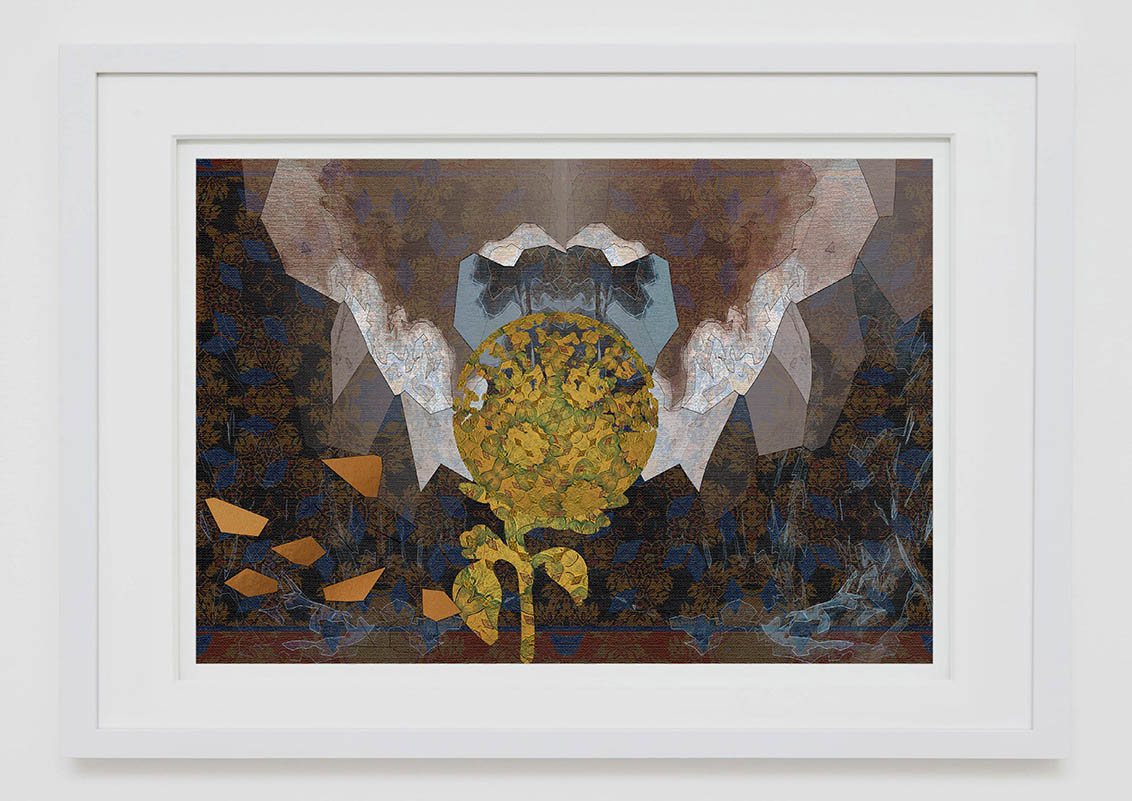
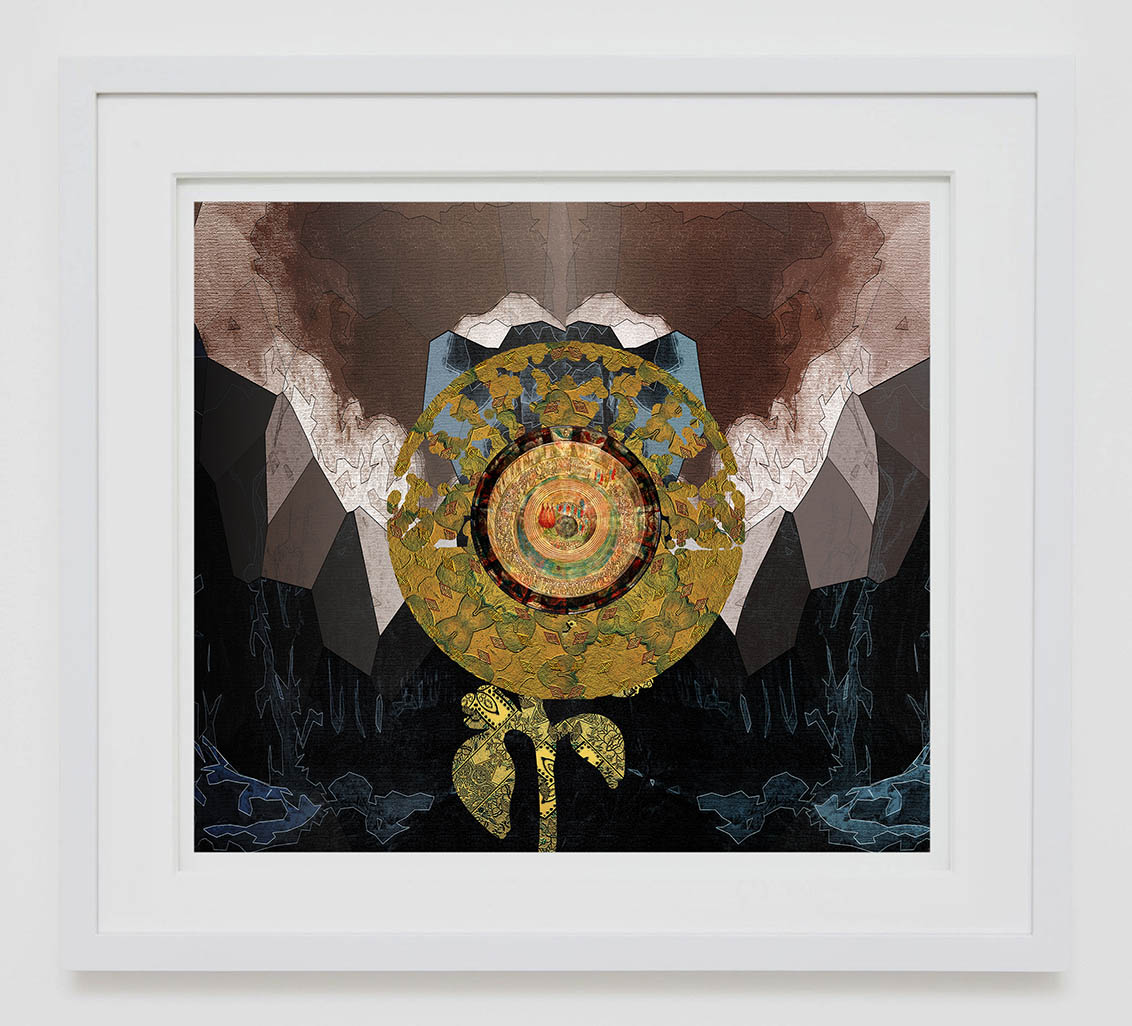
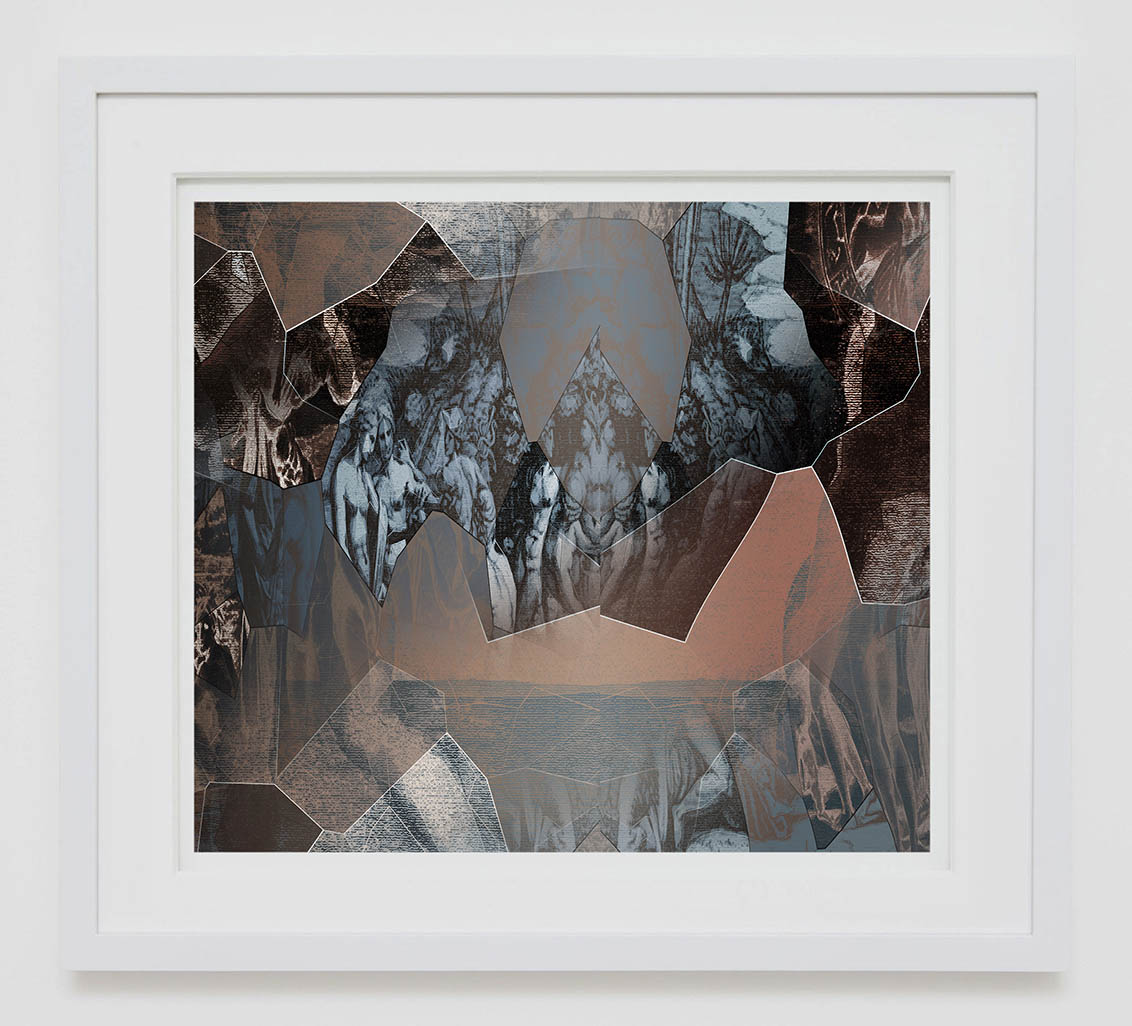
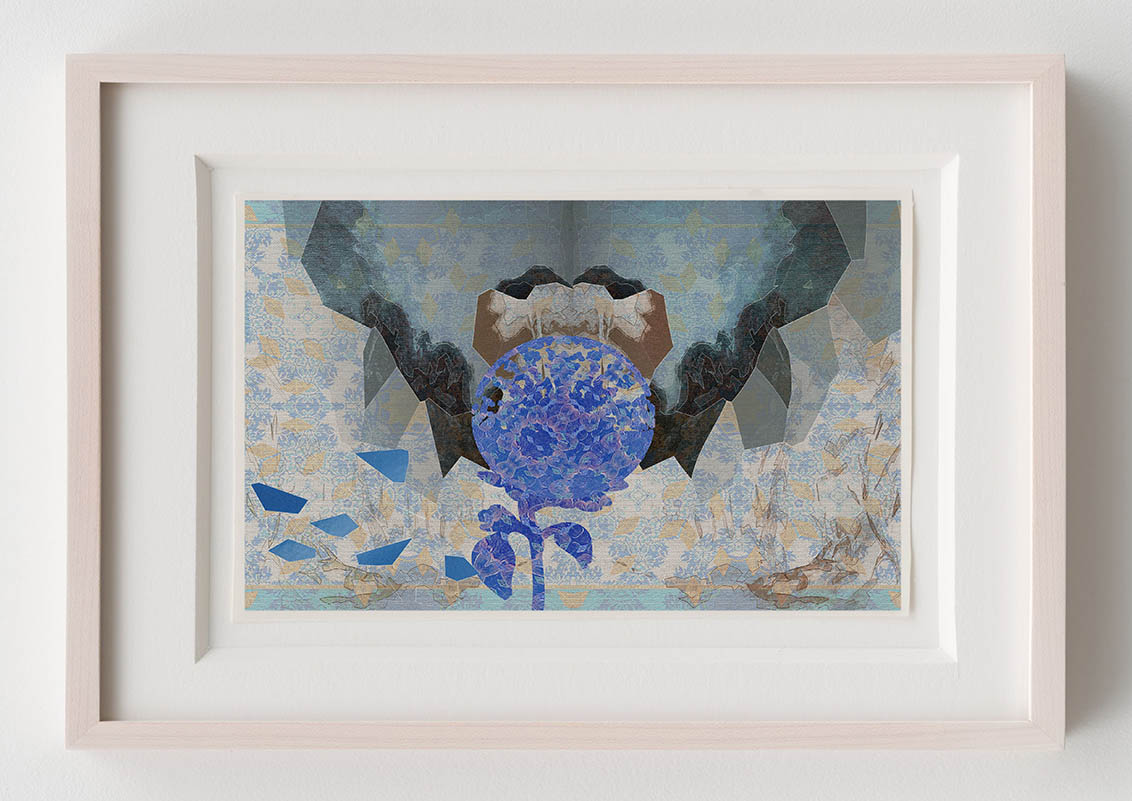
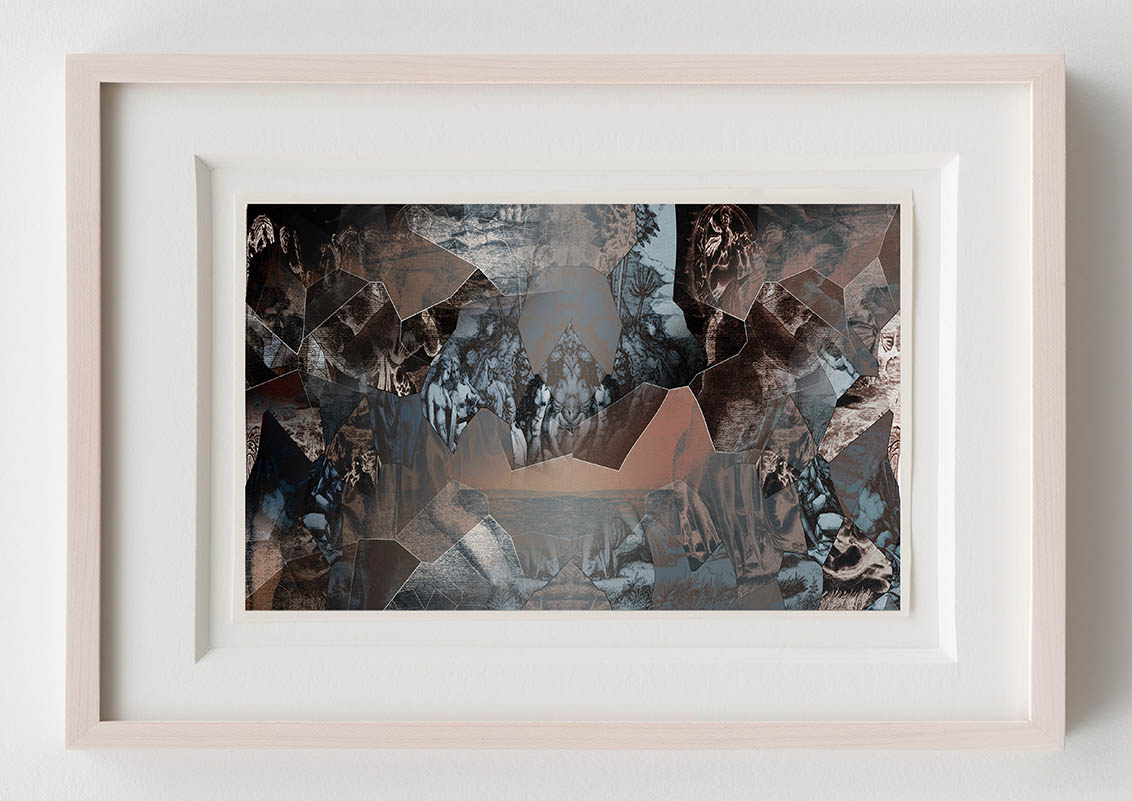
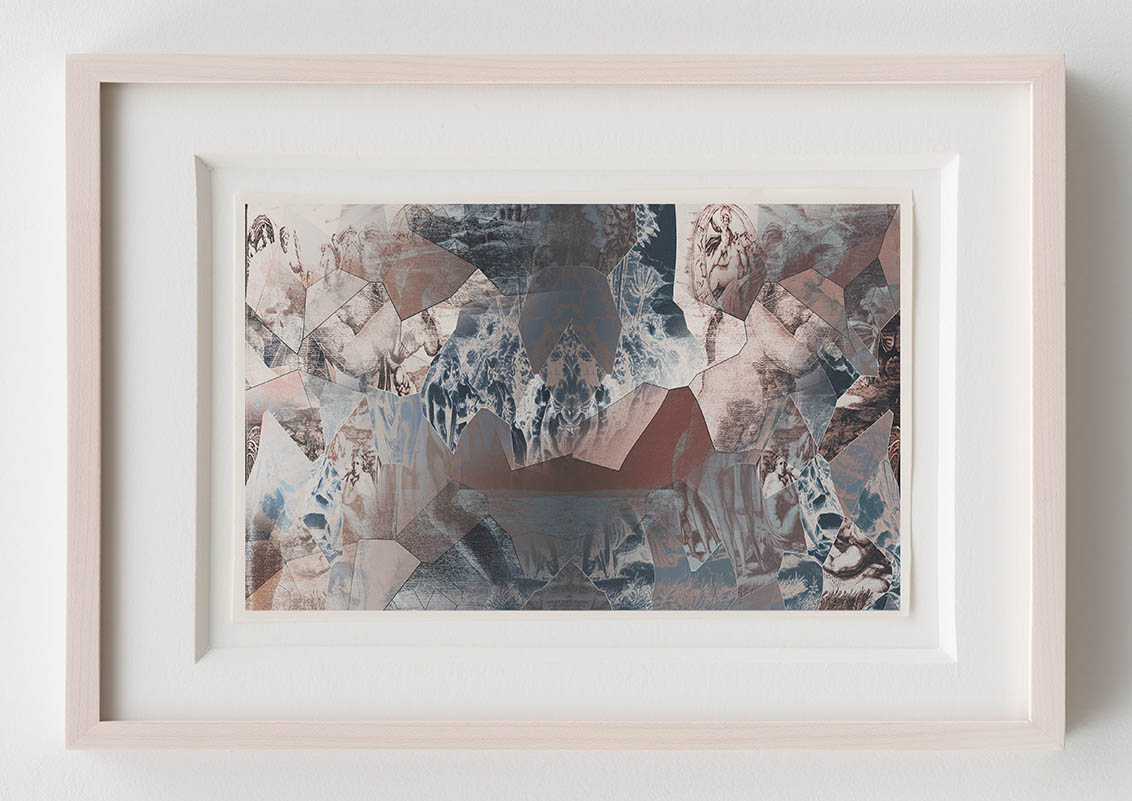
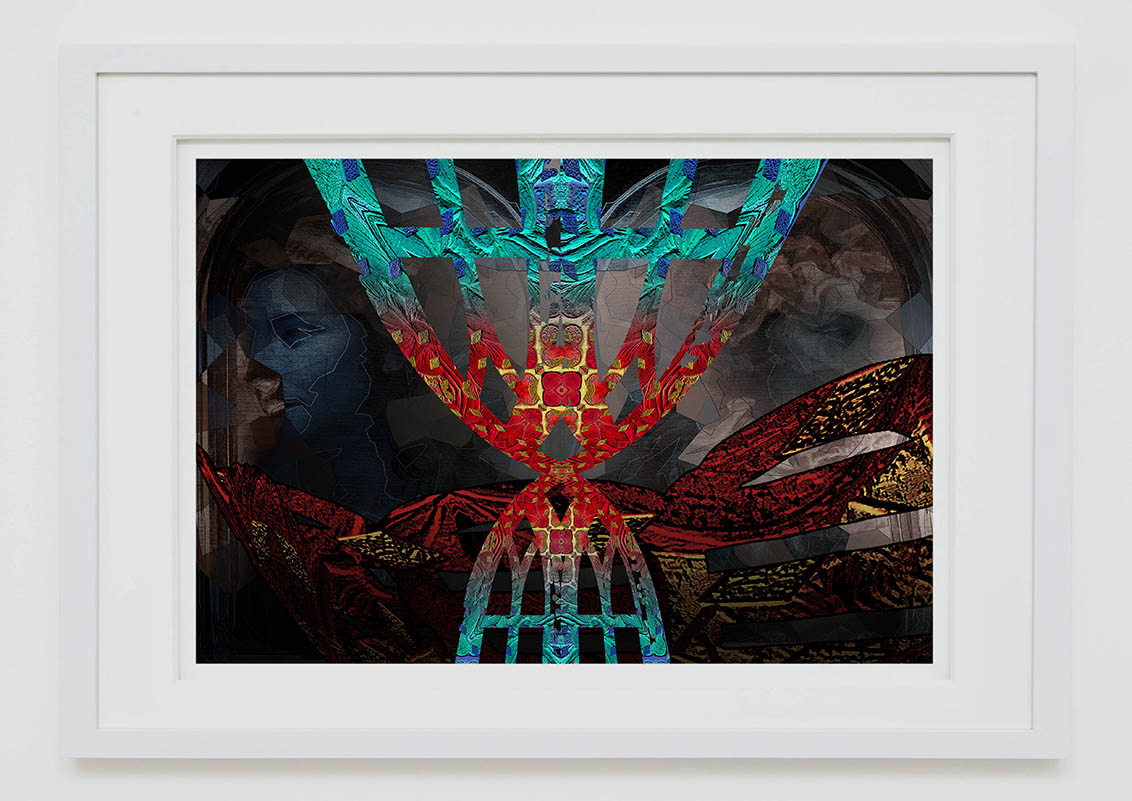
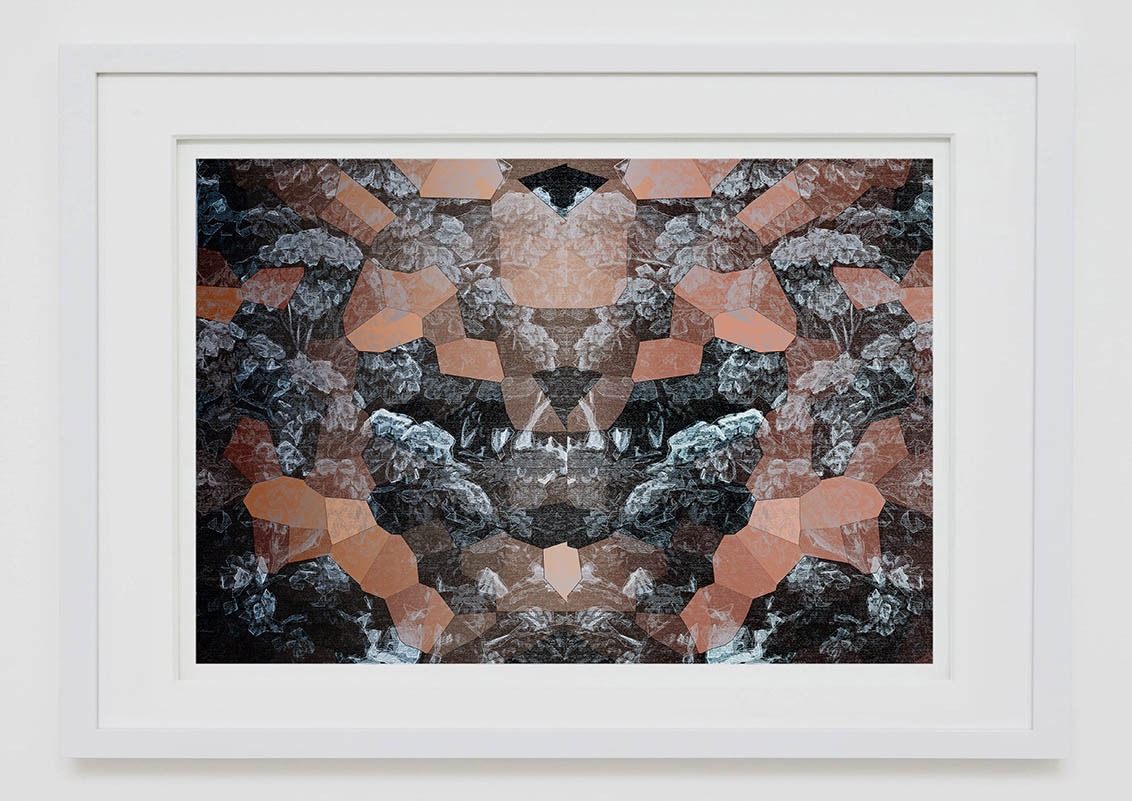
FR
TIM WHITE-SOBIESKI "LA DIVINE COMÉDIE" de Dante Alighieri
Projet d'art et d'édition
Tim White-Sobieski présente une entreprise artistique remarquable connue sous le nom de projet "La Divine Comédie". Cette entreprise comprend une collection en édition limitée d'estampes d'art et un livre finement conçu. Abrité au sein du Studio TWS, Tim White-Sobieski introduit une édition fine de la Divine Comédie de Dante, spécialement conçue comme une édition commémorative dans la série intitulée "Chefs-d'œuvre de la littérature mondiale".
La création artistique comprend un portefeuille d'estampes en édition limitée, produites avec minutie sous la forme d'une série de grandes estampes à la main, colorées pour compléter un manuscrit également en édition limitée. De plus, une collection d'estampes de taille moyenne est proposée dans une boîte sur mesure, accompagnée d'une brochure de l'artiste expliquant le concept et une annotation historique complète. Ces estampes mesurent 30 x 42 cm chacune.
L'essence de ce projet réside dans sa nature sans précédent, étant la première instance depuis le XVe siècle où la Divine Comédie a été entièrement illustrée à la main. L'entreprise englobe une œuvre d'illustration unique pour chaque canto, totalisant plus de 1200 illustrations distinctes. Ces œuvres se manifestent à la fois sous forme de livre et sous forme d'estampes exclusives à la main. Ce chef-d'œuvre constitue une addition exceptionnelle pour les collectionneurs, les musées, les bibliothèques, ainsi que pour les individus passionnés par les recherches bibliophiliques et l'exploration savante.
La représentation de la Divine Comédie proposée ici est peut-être la plus exquise et la plus complète jamais réalisée. Chaque édition d'estampe est élégamment contenue dans un coffret décoratif ou un étui de protection de luxe. Ces éditions limitées sont présentées à la fois en italien et en anglais, avec une reliure historique d'archives sur du papier italien. Le processus implique une impression sur une presse spécialement conçue, garantissant une finition de luxe. Au-delà de sa signification artistique, cette création devient emblématique de la culture, de l'histoire et de la langue italiennes.
Chaque estampe est signée de manière unique par l'artiste lui-même, Tim White-Sobieski, accompagnée d'un certificat d'authenticité. Cette édition commémorative marque le 700e anniversaire de la mort de Dante Alighieri. L'ensemble de l'entreprise est conçu, réalisé et mis en vie en Italie par TWS Fine Press Limited Edition. Les éditions d'estampes sont logées dans des étuis rigides dorés et des étuis sur mesure, reflétant la touche personnelle de l'artiste.
La culmination de dix ans de travail aboutit à une représentation de la Divine Comédie qui se classe parmi les versions les plus exquises de l'histoire du monde. Le projet témoigne de la collaboration avec des archives historiques prestigieuses et des bibliothèques privées, notamment les archives du Vatican, la bibliothèque du Metropolitan Museum et la collection d'estampes, le Smithsonian, la Library of Congress à Washington, D.C., la George Peabody Library à Baltimore, aux États-Unis ; la Bodleian Library à Oxford, au Royaume-Uni ; le British Museum ; la bibliothèque de livres rares et de manuscrits de l'Université Yale à New Haven, au Connecticut, aux États-Unis ; la Bibliothèque nationale de Saint-Marc à Venise, en Italie ; et la Bibliothèque de l'abbaye de Saint-Gall à St. Gall, en Suisse.
Le projet a débuté avec un livre contenant 300 illustrations originales, initialement de format horizontal de 30 x 42 cm chacune. Il a ensuite évolué en une entreprise artistique plus vaste, comprenant des dessins expansifs, des estampes et des œuvres sur toile. Ce qui rend ce projet vraiment notable, ce sont les dessins des artistes spécialement conçus pour le livre, ainsi que plus de 400 motifs de tissus uniques qui n'avaient jamais été exposés au public auparavant. Malgré leur caractère contemporain, ces dessins dégageaient une essence stylistique rappelant la période de la Renaissance précoce. Les textiles présentés dans les œuvres ont ensuite été transformés en tissus de soie multicolores et en jacquards, évoquant la qualité et l'expérience tactile des tapisseries de la Renaissance. Les artistes ont consacré plus de trois ans au développement des designs textiles, ainsi qu'à la conception et à la composition des dessins et des peintures. Le résultat était un projet inégalé caractérisé par son exécution complexe et sa sophistication stylistique.
Présentées ici sont des pages d'échantillon du livre d'art en édition limitée dédié au chef-d'œuvre de Dante Alighieri.
À PROPOS DE LA "DIVINE COMÉDIE" DE DANTE ALIGHIERI
L'attrait durable et universel de la "Divine Comédie" de Dante Alighieri, même après sept siècles, peut s'expliquer par plusieurs qualités intrinsèques qui en font un point de focalisation pour les chercheurs, les artistes et les individus de cultures diverses. La capacité de cette œuvre à transcender les frontières temporelles et géographiques réside dans les facteurs suivants :
L'exploration thématique de Dante aborde des expériences humaines fondamentales telles que l'amour, le péché, la rédemption et les complexités de la nature humaine. Ces préoccupations existentielles résonnent à travers les époques et les contextes culturels, créant un lien avec un large éventail d'individus.
L'examen approfondi de l'âme à travers les royaumes de l'Enfer, du Purgatoire et du Paradis aborde la fascination humaine pour les questions métaphysiques de la vie, de la spiritualité et de l'au-delà. Ces énigmes sont des sujets de profonde contemplation qui traversent les frontières culturelles.
L'utilisation habile de l'allégorie par Dante contribue à l'attrait durable du poème, permettant des interprétations multidimensionnelles qui suscitent un débat intellectuel soutenu parmi les chercheurs et les penseurs.
La structure narrative, ornée d'images vivantes, rend le poème accessible et captivant. Le voyage personnel de Dante sert de canal accessible pour les lecteurs afin d'aborder des thèmes philosophiques et moraux complexes.
En tant qu'artefact historique et culturel, la "Divine Comédie" offre des aperçus sur le milieu intellectuel, social et politique de l'Italie du XIVe siècle. Ce contexte historique facilite le lien entre les lecteurs contemporains et l'ère révolue, favorisant un sentiment de continuité.
L'influence profonde de l'œuvre est attestée par son impact durable sur la littérature, l'art et la culture. Elle sert de source d'inspiration dans divers domaines créatifs, de la littérature aux arts visuels, en passant par la musique et le cinéma.
Enracinées dans les questions existentielles entourant le bien et le mal, la vertu et les relations humaines, les questions posées par la "Divine Comédie" sont universellement pertinentes. Ces interrogations continuent d'engager ceux qui naviguent dans les complexités des paysages moraux et éthiques de leur propre vie.
L'ambition démesurée de Dante de encapsuler la totalité de l'expérience humaine dans une seule composition confère à la "Divine Comédie" une grandeur qui résonne chez les lecteurs de divers horizons. Son exploration de la condition humaine et de la toile cosmique résonne avec la curiosité humaine partagée concernant notre existence et notre place dans l'univers.
En essence, la "Divine Comédie" parvient à une résonance intemporelle et interculturelle en explorant le cœur de l'existence humaine, en utilisant des couches allégoriques et une imagerie évocatrice pour créer un récit qui comble les époques et les frontières géographiques. Cet attrait durable favorise un lien profond et durable entre les individus, traversant les époques et les cultures.
ÉTUDE COMPARATIVE
Voici une analyse comparative des interprétations artistiques de la Divine Comédie par des artistes célèbres tels que Botticelli, Gustave Doré, William Blake et Salvador Dalí, mettant en évidence leurs styles distincts et l'impact de leur travail sur l'histoire de l'art :
Sandro Botticelli : Les illustrations de la Divine Comédie par Sandro Botticelli, en particulier l'Enfer, sont connues pour leur détail complexe et leur élégance classique. Le style de Botticelli, enraciné dans la Renaissance, met l'accent sur des figures gracieuses et des contours délicats. Ses illustrations mêlent souvent la symbolique mythologique et chrétienne, reflétant sa maîtrise de la combinaison de différentes langues visuelles. Ses illustrations de l'Enfer se caractérisent par leur attention méticuleuse à l'exactitude anatomique et aux détails architecturaux, capturant les scènes terrifiantes avec une finesse artistique qui adoucit la dureté du sujet. Le travail de Botticelli démontre une fusion du classique avec le spirituel, représentant une intégration harmonieuse de l'art et de la théologie. Bien que ses illustrations n'aient pas été largement diffusées de son vivant, elles ont eu une influence durable sur les artistes ultérieurs et ont contribué à la popularisation de l'épopée de Dante.
Gustave Doré : Les illustrations de la Divine Comédie par Gustave Doré sont célébrées pour leur qualité dramatique et évocatrice. Le style de Doré se caractérise par des lignes audacieuses, de forts contrastes et un penchant pour le monumental. Ses illustrations amplifient l'intensité émotionnelle du voyage de Dante à travers les royaumes de l'au-delà. À travers des détails complexes et une utilisation dynamique de la lumière et de l'ombre, Doré capture l'horreur viscérale de l'Enfer, la réflexion introspective du Purgatoire et la beauté éthérée du Paradis. Ses illustrations ont bénéficié d'une large diffusion grâce à l'avènement de la technologie d'impression, ce qui a rendu ses interprétations de l'œuvre de Dante accessibles à un plus large public. Le récit visuel percutant de Doré a contribué à solidifier les images emblématiques associées à la Divine Comédie.
William Blake : Les illustrations de la Divine Comédie par William Blake reflètent son style visionnaire et symbolique unique. L'art de Blake défiait souvent les normes conventionnelles, caractérisé par des lignes complexes et tourbillonnantes et une qualité onirique. Son interprétation de l'œuvre de Dante se concentre sur les aspects spirituels et allégoriques, reflétant les propres inclinations mystiques de Blake. Les illustrations de Blake explorent le voyage psychologique et spirituel de l'âme, mettant l'accent sur les thèmes de la rédemption et de l'éveil spirituel. Son impact artistique était initialement limité de son vivant, mais son œuvre a gagné en reconnaissance au fil des années, influençant les générations ultérieures d'artistes par son approche non conventionnelle et profondément introspective.
Salvador Dalí : Les illustrations de la Divine Comédie par Salvador Dalí offrent une interprétation surréaliste et avant-gardiste. Le style de Dalí se caractérise par des perspectives déformées, des paysages oniriques et des images juxtaposées. Ses illustrations reflètent sa fascination pour le subconscient et l'irrationnel. L'approche innovante de Dalí réimagine l'épopée de Dante de manière à mettre en avant les dimensions psychologiques et symboliques du récit. Ses visuels uniques et souvent désorientants ont remis en question les normes artistiques traditionnelles et ont offert un regard frais pour aborder le texte. L'impact de Dalí sur l'histoire de l'art se caractérise par sa contribution au mouvement surréaliste et sa capacité à combler le fossé entre les thèmes littéraires classiques et l'expression artistique contemporaine.
Ces artistes ont laissé chacun une empreinte indélébile sur l'interprétation artistique de la Divine Comédie de Dante. Leurs styles et approches distincts révèlent la diversité des réponses artistiques à cette œuvre intemporelle, de l'élégance classique à l'intensité dramatique, du symbolisme visionnaire à l'innovation surréaliste. Leurs illustrations non seulement mettent en avant leurs inclinations artistiques personnelles, mais contribuent également à la riche palette d'interprétations visuelles qui continuent de captiver les publics et de façonner la perception du chef-d'œuvre de Dante dans les annales de l'histoire de l'art.
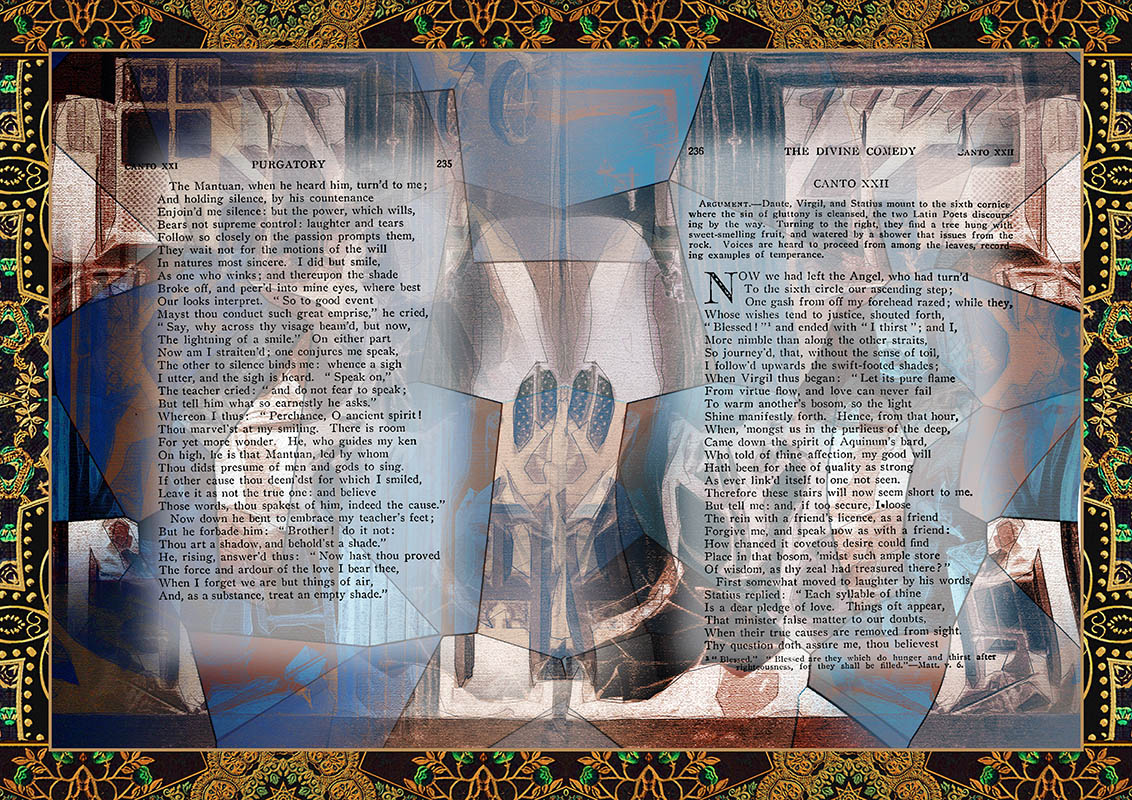
ES
TIM WHITE-SOBIESKI "LA DIVINA COMEDIA" de Dante Alighieri Proyecto de libro de arte y edición
Tim White-Sobieski presenta un notable esfuerzo artístico conocido como el proyecto del Manuscrito de "La Divina Comedia". Este esfuerzo consta de una colección de edición limitada de impresiones de arte y un libro finamente elaborado. Alojado en el Studio TWS, Tim White-Sobieski presenta una edición de prensa fina magistral de la Divina Comedia de Dante, diseñada específicamente como una edición conmemorativa bajo la serie titulada "Obras Maestras de la Literatura Mundial".
La creación artística involucra un portafolio de impresiones de edición limitada meticulosamente producidas como una serie de grandes impresiones coloreadas a mano que complementan un manuscrito igualmente de edición limitada. Además, se ofrece una colección de impresiones de tamaño mediano en una caja hecha a medida, acompañada de un folleto del artista que aclara el concepto y una anotación histórica completa. Estas impresiones tienen un tamaño de 30 x 42 centímetros cada una.
La esencia de este proyecto radica en su naturaleza sin precedentes, siendo la primera instancia desde el siglo XV en la que la Divina Comedia ha sido completamente ilustrada a mano. El esfuerzo abarca una obra de arte ilustrativa única para cada canto, sumando más de 1200 ilustraciones distintas. Estas obras se manifiestan tanto en forma de libro como en un conjunto de impresiones exclusivas coloreadas a mano. Esta obra maestra sirve como una adición excepcional para coleccionistas, museos, bibliotecas, así como para personas apasionadas por la búsqueda bibliofílica y la exploración académica.
La representación de la Divina Comedia ofrecida aquí es quizás la interpretación más exquisita y completa jamás elaborada. Cada edición impresa está elegantemente contenida en una funda decorativa o una caja protectora de lujo. Estas ediciones limitadas se presentan tanto en italiano como en inglés, con una encuadernación histórica de archivo en papel italiano. El proceso implica la impresión en una prensa especialmente diseñada, garantizando un toque de acabado de lujo. Más allá de su significado artístico, esta creación se convierte en un emblema de la cultura, historia e idioma italianos.
Cada impresión está firmada de manera única por el propio artista, Tim White-Sobieski, acompañada de un certificado de autenticidad. Esta edición conmemorativa marca el 700 aniversario del fallecimiento de Dante Alighieri. Todo el esfuerzo está concebido, diseñado y llevado a cabo en Italia por TWS Fine Press Limited Edition. Las ediciones impresas se alojan en estuches rígidos dorados y estuches personalizados, reflejando el toque personal del artista.
La culminación de una década de trabajo se materializa en una representación de la Divina Comedia que se encuentra entre las versiones más exquisitas de la historia del mundo. El proyecto es un testimonio de la colaboración con prestigiosos archivos históricos y bibliotecas privadas, incluyendo, entre otros, los archivos del Vaticano, la biblioteca del Museo Metropolitano y la colección de impresiones, el Smithsonian, la Biblioteca del Congreso en Washington D.C., la Biblioteca George Peabody en Baltimore, EE. UU.; la Biblioteca Bodleiana en Oxford, Reino Unido; el Museo Británico; la Biblioteca de libros raros y manuscritos de la Universidad de Yale en New Haven, Connecticut, EE. UU.; la Biblioteca Nacional de San Marcos en Venecia, Italia; y la Biblioteca de la Abadía de San Galo en San Galo, Suiza.
El proyecto comenzó con un libro que contenía 300 ilustraciones originales, inicialmente de formato horizontal de 30 por 42 centímetros cada una. Luego evolucionó hacia un esfuerzo artístico más amplio, que incluyó dibujos expansivos, impresiones y obras en lienzo. Lo que hace realmente notable a este proyecto son los diseños de los artistas específicamente adaptados para el libro, junto con más de 400 patrones de tela únicos que nunca se habían mostrado públicamente antes. A pesar de ser contemporáneos, estos diseños exudaban una esencia estilística reminiscente del período del Renacimiento temprano. Las telas presentadas en las obras posteriormente se transformaron en telas de seda multicolores y jacquards, haciendo eco de la calidad y la experiencia táctil de las tapices renacentistas. Los artistas dedicaron más de tres años al desarrollo de los diseños de tela y a la composición de los dibujos y las pinturas. El resultado fue un proyecto sin igual caracterizado por su ejecución intrincada y sofisticación estilística.
Aquí se presentan páginas de muestra del libro de arte de edición limitada dedicado a la obra maestra de Dante Alighieri.
SOBRE LA "DIVINA COMEDIA" DE DANTE ALIGHIERI
El atractivo perdurable y universal de la "Divina Comedia" de Dante Alighieri, incluso después de siete siglos, se debe a varias cualidades intrínsecas que la convierten en un punto focal de atención para académicos, artistas e individuos de diversas culturas. La capacidad de esta obra para trascender las fronteras temporales y geográficas radica en los siguientes factores:
La exploración temática de Dante aborda experiencias humanas fundamentales, como el amor, el pecado, la redención y las complejidades de la naturaleza humana. Estas preocupaciones existenciales resuenan a través de las épocas y los contextos culturales, forjando un vínculo con un amplio espectro de individuos.
El examen penetrante del alma a través de los reinos del Infierno, el Purgatorio y el Paraíso aborda la fascinación humana por las cuestiones metafísicas de la vida, la espiritualidad y la vida después de la muerte. Estos enigmas son temas de profunda contemplación que atraviesan las fronteras culturales.
La hábil utilización de la alegoría por parte de Dante contribuye al atractivo duradero del poema, permitiendo interpretaciones multidimensionales que provocan un discurso intelectual sostenido entre académicos y pensadores.
La estructura narrativa, adornada con imágenes vívidas, hace que el poema sea accesible y cautivador. El viaje personal de Dante sirve como un conducto relatable para que los lectores se involucren con temas filosóficos y morales intrincados.
Sirviendo como un artefacto histórico y cultural, la "Divina Comedia" proporciona información sobre el entorno intelectual, social y político de Italia en el siglo XIV. Este contexto histórico facilita un puente entre los lectores contemporáneos y la era pasada, fomentando un sentido de continuidad.
La influencia profunda de la obra se evidencia a través de su impacto duradero en la literatura, el arte y la cultura. Sirve como una fuente de inspiración en diversos campos creativos, desde la literatura hasta las artes visuales, la música y el cine.
Arraigadas en preguntas existenciales sobre el bien y el mal, la virtud y las relaciones humanas, las preguntas planteadas por la "Divina Comedia" son universalmente pertinentes. Estas interrogantes continúan involucrando a aquellos que navegan por las complejidades de los paisajes morales y éticos en sus propias vidas.
La ambición abrumadora del esfuerzo de Dante por encapsular la totalidad de la experiencia humana dentro de una sola composición otorga a la "Divina Comedia" una grandiosidad que resuena con lectores de diversos orígenes. Su exploración de la condición humana y el tapiz cósmico resuena con la curiosidad humana compartida sobre nuestra existencia y lugar en el universo.
En esencia, la "Divina Comedia" logra su resonancia atemporal y transcultural adentrándose en el núcleo de la existencia humana, utilizando capas alegóricas e imágenes evocadoras para tejer una narrativa que une épocas y fronteras geográficas. Este atractivo perdurable fomenta una conexión profunda y duradera entre individuos, atravesando épocas y culturas.
ESTUDIO COMPARATIVO
Aquí se presenta un análisis comparativo de las interpretaciones artísticas de la Divina Comedia por famosos artistas como Botticelli, Gustave Doré, William Blake y Salvador Dalí, destacando sus estilos distintivos y el impacto de su trabajo en la historia del arte:
Sandro Botticelli: Las ilustraciones de la Divina Comedia por Sandro Botticelli, específicamente el Infierno, son conocidas por su detalle intrincado y elegancia clásica. El estilo de Botticelli, arraigado en el Renacimiento, enfatiza las figuras gráciles y los contornos delicados. Sus ilustraciones a menudo mezclan simbolismo mitológico y cristiano, reflejando su maestría en combinar diferentes lenguajes visuales. Sus ilustraciones del Infierno se caracterizan por su meticulosa atención a la precisión anatómica y a los detalles arquitectónicos, capturando las escenas horribles con una destreza artística que suaviza la dureza del tema. El trabajo de Botticelli demuestra una fusión de lo clásico con lo espiritual, representando una integración armoniosa del arte y la teología. Aunque sus ilustraciones no fueron ampliamente difundidas durante su vida, tuvieron una influencia duradera en artistas posteriores y contribuyeron a la popularización de la epopeya de Dante.
Gustave Doré: Las ilustraciones de la Divina Comedia por Gustave Doré son celebradas por su calidad dramática y evocativa. El estilo de Doré se caracteriza por líneas audaces, fuertes contrastes y una predilección por lo monumental. Sus ilustraciones amplifican la intensidad emocional del viaje de Dante a través de los reinos de la otra vida. A través de detalles intrincados y un uso dinámico de la luz y la sombra, Doré captura el horror visceral del Infierno, la reflexión introspectiva del Purgatorio y la belleza etérea del Paraíso. Sus ilustraciones disfrutaron de una amplia circulación, gracias al advenimiento de la tecnología de impresión, lo que hizo que sus interpretaciones de la obra de Dante fueran accesibles a un público más amplio. La narración visual impactante de Doré ayudó a solidificar las imágenes icónicas asociadas con la Divina Comedia.
William Blake: Las ilustraciones de la Divina Comedia por William Blake son un reflejo de su estilo visionario y simbólico único. El arte de Blake a menudo desafiaba las normas convencionales, caracterizado por líneas intrincadas y en espiral y una calidad onírica. Su interpretación de la obra de Dante se enfoca en los aspectos espirituales y alegóricos, reflejando las inclinaciones místicas propias de Blake. Las ilustraciones de Blake exploran el viaje psicológico y espiritual del alma, enfatizando temas de redención y despertar espiritual. Su impacto artístico fue inicialmente limitado durante su vida, pero su trabajo ganó reconocimiento en años posteriores, influyendo en generaciones posteriores de artistas con su enfoque no convencional y profundamente introspectivo.
Salvador Dalí: Las ilustraciones de la Divina Comedia por Salvador Dalí ofrecen una interpretación surrealista y vanguardista.
El estilo de Dalí se caracteriza por perspectivas distorsionadas, paisajes oníricos y imágenes yuxtapuestas. Sus ilustraciones muestran su fascinación por el subconsciente y lo irracional. El enfoque innovador de Dalí reimagina la epopeya de Dante de una manera que enfatiza las dimensiones psicológicas y simbólicas de la narrativa. Sus visuales únicos y a menudo desorientadores desafiaron las normas artísticas tradicionales y proporcionaron una perspectiva fresca para interactuar con el texto. El impacto de Dalí en la historia del arte se caracteriza por su contribución al movimiento surrealista y su capacidad para tender un puente entre los temas literarios clásicos y la expresión artística contemporánea.
Estos artistas han dejado cada uno una marca indeleble en la interpretación artística de la Divina Comedia de Dante. Sus estilos y enfoques distintivos revelan la diversidad de respuestas artísticas a esta obra atemporal, desde la elegancia clásica hasta la intensidad dramática, el simbolismo visionario hasta la innovación surrealista. Sus ilustraciones no solo muestran sus inclinaciones artísticas personales, sino que también contribuyen al rico tapiz de interpretaciones visuales que continúan cautivando al público y moldeando la percepción de la obra maestra de Dante en los anales de la historia del arte.
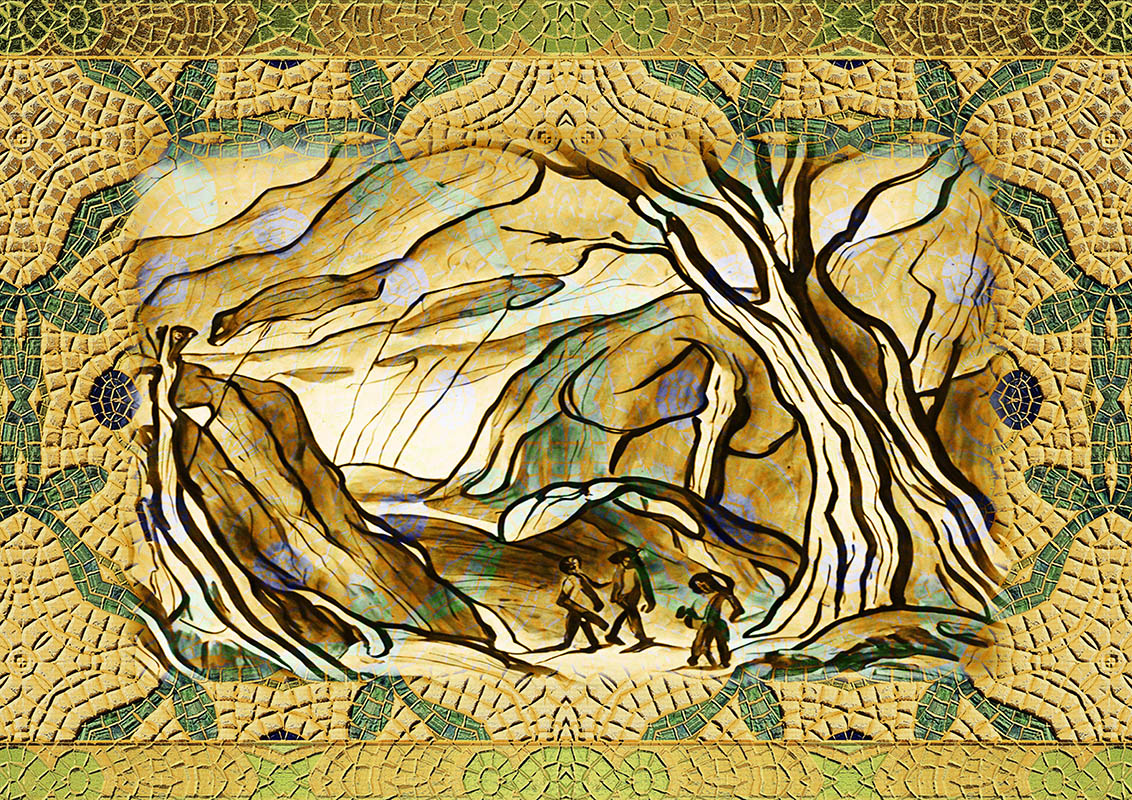
DE
TIM WHITE-SOBIESKI "DIE GÖTTLICHE KOMÖDIE" von Dante Alighieri Kunstbuch- und Editionsprojekt
Tim White-Sobieski präsentiert ein bemerkenswertes künstlerisches Unterfangen, das als das "La Divina Commedia"-Manuskriptprojekt bekannt ist. Dieses Vorhaben besteht aus einer limitierten Sammlung von Kunstdrucken und einem sorgfältig gestalteten Buch. Untergebracht im Studio TWS stellt Tim White-Sobieski eine meisterhafte Feinpresse-Ausgabe von Dantes Göttlicher Komödie vor, die speziell als Gedenkausgabe unter der Serie "Meisterwerke der Weltliteratur" konzipiert wurde.
Die künstlerische Schöpfung umfasst ein limitiertes Portfolio von Drucken, das sorgfältig als Serie von großformatigen handkolorierten Drucken produziert wurde, die wiederum eine ebenso limitierte Manuskriptausgabe ergänzen. Zusätzlich wird eine Sammlung von mittelgroßen Drucken in einer maßgefertigten Box angeboten, begleitet von einem Künstlerprospekt, der das Konzept erläutert, sowie einer umfassenden historischen Annotation. Diese Drucke haben jeweils das Format 30 x 42 Zentimeter.
Die Essenz dieses Projekts liegt in seiner beispiellosen Natur, da es sich um die erste Instanz seit dem 15. Jahrhundert handelt, in der die Göttliche Komödie vollständig von Hand illustriert wurde. Das Vorhaben umfasst eine einzigartige illustrative Kunst für jeden Gesang, insgesamt über 1200 verschiedene Illustrationen. Diese Kunstwerke manifestieren sich sowohl in Form eines Buches als auch als eine Reihe exklusiver handkolorierter Drucke. Dieses Meisterwerk dient als außergewöhnliche Ergänzung für Sammler, Museen, Bibliotheken sowie Einzelpersonen, die leidenschaftlich an bibliophilen Unternehmungen und wissenschaftlicher Erkundung interessiert sind.
Die Darstellung der Göttlichen Komödie, die hier angeboten wird, ist vielleicht die exquisiteste und umfassendste Interpretation, die jemals geschaffen wurde. Jede Druckausgabe ist elegant in einem dekorativen Schuber oder einem luxuriösen Schutzkoffer untergebracht. Diese limitierten Ausgaben werden sowohl in Italienisch als auch in Englisch präsentiert und weisen eine archivalische historische Bindung auf italienischem Papier auf. Der Prozess beinhaltet den Druck auf einer speziell gestalteten Presse, um einen luxuriösen Schliff zu gewährleisten. Jenseits ihrer künstlerischen Bedeutung wird diese Schöpfung zu einem Emblem der italienischen Kultur, Geschichte und Sprache.
Jeder Druck ist einzigartig vom Künstler selbst, Tim White-Sobieski, signiert und wird von einem Echtheitszertifikat begleitet. Diese Gedenkausgabe markiert den 700. Jahrestag des Todes von Dante Alighieri. Das gesamte Vorhaben wurde in Italien von TWS Fine Press Limited Edition konzipiert, gestaltet und zum Leben erweckt. Die Druckausgaben sind in goldgeprägten Hart-Schubern und maßgefertigten Koffern untergebracht, die die persönliche Note des Künstlers widerspiegeln.
Die Krönung eines Jahrzehnts harter Arbeit manifestiert sich in einer Darstellung der Göttlichen Komödie, die zu den exquisitesten Versionen in der Geschichte der Welt zählt. Das Projekt ist ein Zeugnis der Zusammenarbeit mit renommierten historischen Archiven und privaten Bibliotheken, einschließlich, aber nicht beschränkt auf die Vatikanischen Archive, die Bibliothek des Metropolitan Museum und die Drucksammlung, das Smithsonian, die Library of Congress in Washington D.C., die George Peabody Library in Baltimore, USA; die Bodleian Library in Oxford, UK; das Britische Museum; die Seltene Bücher- und Handschriftenbibliothek der Yale University in New Haven, Connecticut, USA; die Nationalbibliothek von St. Mark in Venedig, Italien; und die Abteibibliothek von St. Gallen in St. Gallen, Schweiz.
Das Projekt begann mit einem Buch, das 300 Originalillustrationen enthielt, zunächst im horizontalen Format von 30 mal 42 Zentimetern. Später entwickelte es sich zu einem umfassenderen künstlerischen Vorhaben, das ausgedehnte Zeichnungen, Drucke und Leinwandarbeiten umfasste. Was dieses Projekt wirklich bemerkenswert macht, sind die vom Künstler speziell für das Buch entworfenen Designs, sowie über 400 einzigartige Stoffmuster, die zuvor noch nie öffentlich gezeigt wurden. Trotz ihrer zeitgenössischen Natur strahlten diese Designs eine stilistische Essenz aus, die an die Frührenaissance erinnerte. Die in den Kunstwerken vorgestellten Textilien wurden anschließend zu mehrfarbigen Seidenstoffen und Jacquards verarbeitet, die die Qualität und taktile Erfahrung von Renaissance-Tapisserien widerspiegeln. Die Künstler widmeten mehr als drei Jahre der Entwicklung sowohl der Textilmuster als auch der Zeichnungen und Gemäldekompositionen. Das Ergebnis war ein beispielloses Projekt, das durch seine aufwendige Ausführung und stilistische Raffinesse gekennzeichnet ist.
Hier werden Beispielseiten aus dem limitierten Kunstbuch gewidmet an das Meisterwerk von Dante Alighieri präsentiert.
ÜBER DIE "GÖTTLICHE KOMÖDIE" VON DANTE ALIGHIERI
Der anhaltende und universelle Reiz von Dante Alighieris "Göttlicher Komödie", selbst nach sieben Jahrhunderten, lässt sich auf mehrere innere Qualitäten zurückführen, die es zu einem Brennpunkt für Gelehrte, Künstler und Individuen aus verschiedenen Kulturen machen. Die Fähigkeit dieses Werks, zeitliche und geografische Grenzen zu überschreiten, liegt in folgenden Faktoren begründet:
Die thematische Erkundung von Dante berührt grundlegende menschliche Erfahrungen wie Liebe, Sünde, Erlösung und die Komplexitäten der menschlichen Natur. Diese existenziellen Anliegen hallen durch die Jahrhunderte und kulturellen Kontexte hindurch und schaffen eine Verbindung zu einem breiten Spektrum von Menschen.
Die tiefgehende Untersuchung der Seele auf ihrer Reise durch die Reiche der Hölle, des Fegefeuers und des Paradieses spricht die menschliche Faszination für metaphysische Fragen des Lebens, der Spiritualität und des Jenseits an. Diese Rätsel sind Gegenstand tiefer Reflexion, die kulturelle Grenzen überwindet.
Dantes geschickter Einsatz der Allegorie trägt zur anhaltenden Anziehungskraft des Gedichts bei und ermöglicht mehrdimensionale Interpretationen, die anhaltende intellektuelle Diskurse unter Gelehrten und Denkern anregen.
Die narrative Struktur, die mit lebendigen Bildern verziert ist, macht das Gedicht zugänglich und fesselnd. Dantes persönliche Reise dient als nachvollziehbarer Kanal, über den sich Leser mit komplexen philosophischen und moralischen Themen auseinandersetzen können.
Als historisches und kulturelles Artefakt bietet die "Göttliche Komödie" Einblicke in das intellektuelle, soziale und politische Milieu Italiens im 14. Jahrhundert. Dieser historische Kontext schafft eine Brücke zwischen zeitgenössischen Lesern und der vergangenen Ära und fördert ein Gefühl der Kontinuität.
Der tiefgreifende Einfluss des Werks zeigt sich in seiner anhaltenden Wirkung auf Literatur, Kunst und Kultur. Es dient als Quelle der Inspiration in verschiedenen kreativen Bereichen, von der Literatur über die bildenden Künste, die Musik bis hin zum Film.
Verwurzelt in existenziellen Fragen zu Gut und Böse, Tugend und menschlichen Beziehungen sind die Fragen, die die "Göttliche Komödie" aufwirft, von universeller Bedeutung. Diese Fragen beschäftigen weiterhin diejenigen, die sich in ihrem eigenen Leben mit den Nuancen moralischer und ethischer Landschaften auseinandersetzen.
Die umfassende Ambition von Dantes Vorhaben, die gesamte menschliche Erfahrung in einer einzigen Komposition zu erfassen, verleiht der "Göttlichen Komödie" eine Größe, die bei Menschen unterschiedlicher Herkunft mitschwingt. Ihre Erforschung der menschlichen Existenz und des kosmischen Gefüges findet Anklang bei der geteilten menschlichen Neugierde über unsere Existenz und unseren Platz im Universum.
Im Wesentlichen erreicht die "Göttliche Komödie" ihre zeitlose und kulturübergreifende Resonanz, indem sie zum Kern der menschlichen Existenz vordringt und allegorische Ebenen und evokative Bilder verwendet, um eine Erzählung zu schaffen, die Epochen und geografische Grenzen überbrückt. Diese anhaltende Anziehungskraft fördert eine tiefe und dauerhafte Verbindung zwischen Menschen und überwindet Epochen und Kulturen hinweg.
VERGLEICHENDE STUDIE
Hier wird eine vergleichende Analyse der künstlerischen Interpretationen der Göttlichen Komödie durch berühmte Künstler wie Botticelli, Gustave Doré, William Blake und Salvador Dalí präsentiert, wobei ihre unterschiedlichen Stile und der Einfluss ihrer Arbeit auf die Kunstgeschichte hervorgehoben werden:
Sandro Botticelli:
Die Illustrationen von Sandro Botticelli zur Göttlichen Komödie, insbesondere zur Hölle, sind für ihre detaillierte Präzision und klassische Eleganz bekannt. Der Stil von Botticelli, der in der Renaissance verwurzelt ist, betont anmutige Figuren und zarte Konturen. Seine Illustrationen vermischen oft mythologischen und christlichen Symbolismus und spiegeln seine Meisterschaft in der Kombination verschiedener visueller Sprachen wider. Seine Hölle-Illustrationen zeichnen sich durch ihre akribische Beachtung anatomischer Genauigkeit und architektonischer Details aus und erfassen die schrecklichen Szenen mit künstlerischem Geschick, das die Härte des Themas mildert. Botticellis Werk zeigt eine Verschmelzung des Klassischen mit dem Spirituellen und repräsentiert eine harmonische Integration von Kunst und Theologie. Obwohl seine Illustrationen zu seinen Lebzeiten nicht weit verbreitet waren, hatten sie einen dauerhaften Einfluss auf nachfolgende Künstler und trugen zur Popularisierung von Dantes Epos bei.
Gustave Doré:
Die Illustrationen von Gustave Doré zur Göttlichen Komödie werden für ihre dramatische und eindringliche Qualität gefeiert. Der Stil von Doré zeichnet sich durch kräftige Linien, starke Kontraste und eine Vorliebe für das Monumentale aus. Seine Illustrationen verstärken die emotionale Intensität von Dantes Reise durch die Reiche des Jenseits. Durch detaillierte Details und den dynamischen Einsatz von Licht und Schatten erfasst Doré den viszeralen Schrecken der Hölle, die introspektive Reflexion des Fegefeuers und die ätherische Schönheit des Paradieses. Seine Illustrationen genossen weite Verbreitung, dank der Einführung der Drucktechnologie, was seine Interpretationen von Dantes Werk einem größeren Publikum zugänglich machte. D
ores wirkungsvolle visuelle Erzählkunst half dabei, die ikonischen Bilder, die mit der Göttlichen Komödie verbunden sind, zu festigen.
William Blake:
Die Illustrationen von William Blake zur Göttlichen Komödie spiegeln seinen einzigartigen visionären und symbolischen Stil wider. Blakes Kunst widersetzte sich oft herkömmlichen Normen, gekennzeichnet durch verschlungene, detailreiche Linien und eine traumhafte Qualität. Seine Interpretation von Dantes Werk konzentriert sich auf die spirituellen und allegorischen Aspekte und spiegelt Blakes eigene mystische Neigungen wider. Blakes Illustrationen tauchen in die psychologische und spirituelle Reise der Seele ein und betonen Themen wie Erlösung und spirituelles Erwachen. Sein künstlerischer Einfluss war zu seinen Lebzeiten zunächst begrenzt, aber seine Arbeit erlangte in späteren Jahren Anerkennung und beeinflusste nachfolgende Generationen von Künstlern mit ihrem unkonventionellen und tief introspektiven Ansatz.
Salvador Dalí:
Die Illustrationen von Salvador Dalí zur Göttlichen Komödie bieten eine surrealistische und avantgardistische Interpretation. Der Stil von Dalí zeichnet sich durch verzerrte Perspektiven, traumhafte Landschaften und gegensätzliche Bildsprache aus. Seine Illustrationen zeigen seine Faszination für das Unterbewusste und das Irrationale. Sein innovativer Ansatz neu erfindet Dantes Epos auf eine Weise, die die psychologischen und symbolischen Dimensionen der Erzählung betont. Seine einzigartigen und oft desorientierenden visuellen Darstellungen forderten die traditionellen künstlerischen Normen heraus und boten eine frische Perspektive, um mit dem Text in Beziehung zu treten. Dals Einfluss auf die Kunstgeschichte zeichnet sich durch seinen Beitrag zur surrealistischen Bewegung und seine Fähigkeit aus, die Kluft zwischen klassischen literarischen Themen und zeitgenössischem künstlerischem Ausdruck zu überbrücken.
Diese Künstler haben jeweils einen unauslöschlichen Eindruck in der künstlerischen Interpretation von Dantes Göttlicher Komödie hinterlassen. Ihre unterschiedlichen Stile und Ansätze zeigen die Vielfalt der künstlerischen Reaktionen auf dieses zeitlose Werk, von klassischer Eleganz bis zur dramatischen Intensität, visionärem Symbolismus bis zur surrealen Innovation. Ihre Illustrationen zeigen nicht nur ihre persönlichen künstlerischen Neigungen, sondern tragen auch zum reichen Geflecht visueller Interpretationen bei, die weiterhin Zuschauer faszinieren und die Wahrnehmung von Dantes Meisterwerk in den Annalen der Kunstgeschichte prägen.
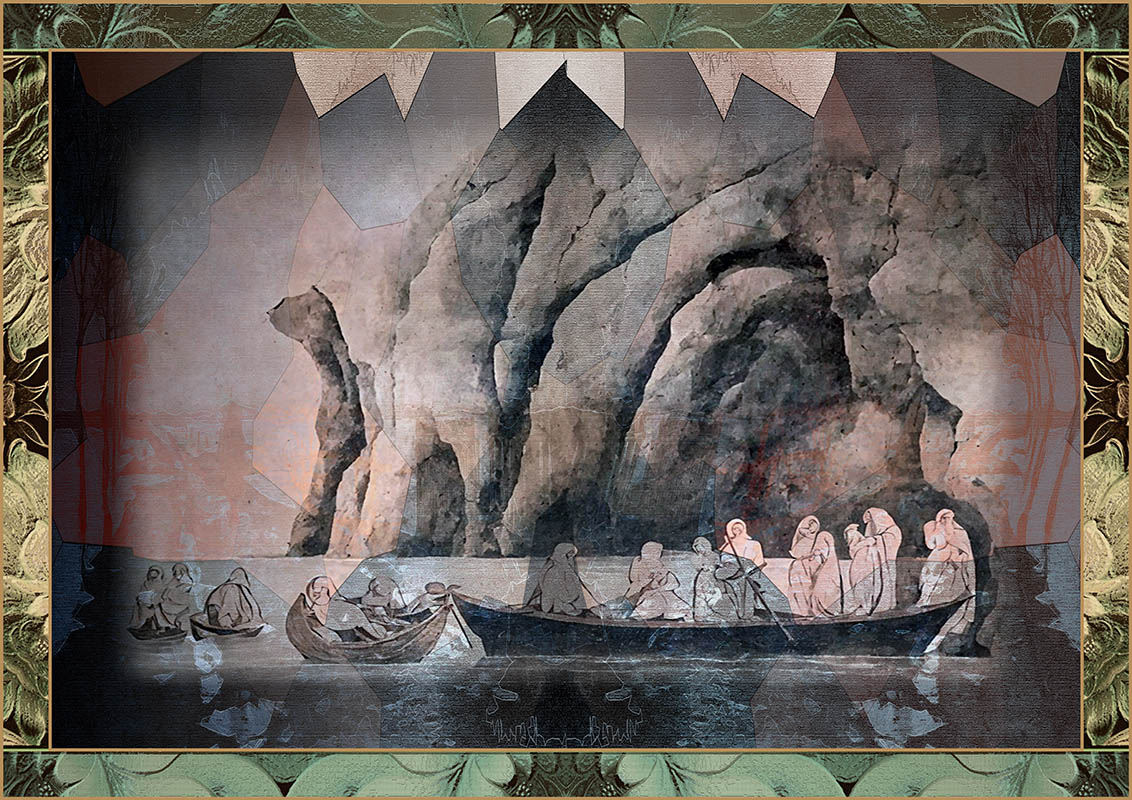
PT
TIM WHITE-SOBIESKI "A DIVINA COMÉDIA" de Dante Alighieri Projeto de livro de arte e edição
Tim White-Sobieski apresenta uma notável empreitada artística conhecida como o projeto do Manuscrito "La Divina Commedia". Este empreendimento consiste em uma coleção de edições limitadas de impressões de arte e um livro cuidadosamente elaborado. Abrigado no Studio TWS, Tim White-Sobieski apresenta uma mestra edição de imprensa da Divina Comédia de Dante, especificamente projetada como uma edição comemorativa sob a série intitulada "Obras-Primas da Literatura Mundial".
A criação artística envolve um portfólio de impressões de edição limitada, meticulosamente produzido como uma série de grandes impressões coloridas à mão que complementam uma edição de manuscrito igualmente de edição limitada. Além disso, uma coleção de impressões de tamanho médio é oferecida em uma caixa feita sob medida, acompanhada por um folheto do artista que esclarece o conceito e uma anotação histórica abrangente. Essas impressões têm o tamanho de 30 x 42 centímetros cada.
A essência deste projeto reside em sua natureza sem precedentes, sendo a primeira instância desde o século XV em que a Divina Comédia foi completamente ilustrada à mão. O empreendimento abrange uma obra de arte ilustrativa única para cada canto, totalizando mais de 1200 ilustrações distintas. Essas obras manifestam-se tanto na forma de um livro quanto como um conjunto de impressões exclusivas coloridas à mão. Esta obra-prima serve como uma adição excepcional para colecionadores, museus, bibliotecas, bem como indivíduos apaixonados por empreendimentos bibliofílicos e exploração acadêmica.
A representação da Divina Comédia oferecida aqui é talvez a interpretação mais requintada e abrangente já criada. Cada edição impressa é elegantemente acomodada em uma capa decorativa ou uma caixa protetora de luxo. Essas edições limitadas são apresentadas tanto em italiano quanto em inglês, apresentando encadernação histórica de arquivo em papel italiano. O processo envolve a impressão em uma prensa especialmente projetada, garantindo um toque de acabamento de luxo. Além de sua significância artística, esta criação torna-se emblemática da cultura, história e língua italiana.
Cada impressão é assinada de forma única pelo próprio artista, Tim White-Sobieski, acompanhada de um certificado de autenticidade. Esta edição comemorativa marca o 700º aniversário da morte de Dante Alighieri. Todo o empreendimento é concebido, projetado e trazido à vida na Itália pela TWS Fine Press Limited Edition. As edições impressas são abrigadas em estojos rígidos com relevo em dourado e estojos personalizados, refletindo o toque pessoal do artista.
A culminação de uma década de trabalho resulta em uma representação da Divina Comédia que está entre as versões mais requintadas da história do mundo. O projeto é um testemunho da colaboração com prestigiosos arquivos históricos e bibliotecas privadas, incluindo, mas não se limitando aos arquivos do Vaticano, à biblioteca do Museu Metropolitano e à coleção de impressões, ao Instituto Smithsonian, à Biblioteca do Congresso em Washington, D.C., à Biblioteca George Peabody em Baltimore, EUA; à Biblioteca Bodleian em Oxford, Reino Unido; ao Museu Britânico; à biblioteca de livros raros e manuscritos da Universidade Yale em New Haven, Connecticut, EUA; à Biblioteca Nacional de São Marcos em Veneza, Itália; e à Biblioteca da Abadia de São Galo em São Galo, Suíça.
O projeto começou com um livro contendo 300 ilustrações originais, inicialmente com o formato horizontal de 30 por 42 centímetros. Mais tarde, evoluiu para uma empreitada artística mais ampla, incluindo desenhos expansivos, impressões e obras em tela. O que torna este projeto verdadeiramente notável são os designs dos artistas feitos especificamente para o livro, juntamente com mais de 400 padrões de tecido exclusivos que nunca foram exibidos publicamente antes. Apesar de serem contemporâneos, esses designs exibem uma essência estilística que lembra o período do Renascimento inicial. Os tecidos apresentados nas obras de arte foram posteriormente transformados em tecidos de seda multicoloridos e jacquards, ecoando a qualidade e a experiência tátil das tapeçarias renascentistas. Os artistas dedicaram mais de três anos para desenvolver tanto os designs de tecido quanto as composições de desenhos e pinturas. O resultado foi um projeto incomparável caracterizado por sua execução intrincada e sofisticação estilística.
Aqui estão apresentadas páginas de amostra do livro de arte de edição limitada dedicado à obra-prima de Dante Alighieri.
SOBRE "A DIVINA COMÉDIA" DE DANTE ALIGHIERI
O apelo duradouro e universal de "A Divina Comédia" de Dante Alighieri, mesmo depois de sete séculos, pode ser atribuído a várias qualidades intrínsecas que a tornam um ponto focal de atenção para acadêmicos, artistas e indivíduos de diversas culturas. A capacidade desta obra de transcender fronteiras temporais e geográficas reside nos seguintes fatores:
A exploração temática de Dante aborda experiências humanas fundamentais, como o amor, o pecado, a redenção e as complexidades da natureza humana. Essas preocupações existenciais ressoam através das eras e contextos culturais, estabelecendo uma conexão com um amplo espectro de indivíduos.
A investigação perspicaz do poema sobre a jornada da alma pelos reinos do Inferno, do Purgatório e do Paraíso aborda a fascinação humana pelas questões metafísicas da vida, espiritualidade e vida após a morte. Esses enigmas são temas de profunda contemplação que atravessam fronteiras culturais.
O habilidoso uso de Dante da alegoria contribui para o apelo duradouro do poema, permitindo interpretações multidimensionais que provocam um discurso intelectual sustentado entre acadêmicos e pensadores.
A estrutura narrativa, adornada com imagens vívidas, torna o poema acessível e cativante. A jornada pessoal de Dante atua como um canal acessível para os leitores se envolverem com temas filosóficos e morais complexos.
Servindo como um artefato histórico e cultural, "A Divina Comédia" fornece insights sobre o cenário intelectual, social e político da Itália no século XIV. Este contexto histórico facilita uma ponte entre os leitores contemporâneos e a era passada, promovendo um senso de continuidade.
O profundo impacto da obra é evidenciado por seu impacto duradouro na literatura, arte e cultura. Ela serve como uma fonte de inspiração em diversos domínios criativos, desde a literatura até as artes visuais, música e cinema.
Enraizadas em questões existenciais sobre o bem e o mal, virtude e relacionamentos humanos, as perguntas colocadas pela "A Divina Comédia" são universalmente relevantes. Essas investigações continuam a envolver aqueles que navegam pelas nuances das paisagens morais e éticas em suas próprias vidas.
A ambição abrangente do esforço de Dante para encapsular toda a experiência humana dentro de uma única composição confere à "A Divina Comédia" uma grandiosidade que ressoa com leitores de origens diversas. Sua exploração da condição humana e da tapeçaria cósmica ressoa com a curiosidade humana compartilhada sobre nossa existência e lugar no universo.
Em essência, "A Divina Comédia" alcança sua ressonância atemporal e transcultural ao adentrar no cerne da existência humana, utilizando camadas alegóricas e imagens evocativas para criar uma narrativa que atravessa eras e fronteiras geográficas. Este apelo duradouro fomenta uma conexão profunda e duradoura entre indivíduos, atravessando épocas e culturas.
ESTUDO COMPARATIVO
Aqui está uma análise comparativa das interpretações artísticas da "A Divina Comédia" por artistas famosos como Botticelli, Gustave Doré, William Blake e Salvador Dalí, destacando seus estilos distintos e o impacto de seu trabalho na história da arte:
Sandro Botticelli: As ilustrações de Sandro Botticelli para a "A Divina Comédia", especificamente o Inferno, são conhecidas por seus detalhes intrincados e elegância clássica. O estilo de Botticelli, enraizado no Renascimento, enfatiza figuras graciosas e contornos delicados. Suas ilustrações frequentemente misturam simbolismo mitológico e cristão, refletindo sua maestria em combinar diferentes linguagens visuais. Suas ilustrações do Inferno são caracterizadas pela atenção meticulosa à precisão anatômica e aos detalhes arquitetônicos, capturando as cenas horripilantes com finesse artística que suaviza a dureza do assunto. O trabalho de Botticelli demonstra uma fusão do clássico com o espiritual, representando uma integração harmônica da arte e da teologia. Embora suas ilustrações não tenham sido amplamente divulgadas durante sua vida, elas tiveram um impacto duradouro em artistas subsequentes e contribuíram para a popularização da obra de Dante.
Gustave Doré: As ilustrações de Gustave Doré para a "A Divina Comédia" são celebradas por sua qualidade dramática e evocativa. O estilo de Doré é caracterizado por linhas audaciosas, contrastes fortes e uma predileção pelo monumental. Suas ilustrações amplificam a intensidade emocional da jornada de Dante pelos reinos do Além. Através de detalhes intrincados e do uso dinâmico de luz e sombra, Doré captura o horror visceral do Inferno, a reflexão introspectiva do Purgatório e a beleza etérea do Paraíso. Suas ilustrações desfrutaram de ampla circulação, graças ao advento da tecnologia de impressão, tornando suas interpretações da obra de Dante acessíveis a um público maior. A narração visual impactante de Doré ajudou a solidificar as imagens icônicas associadas à "A Divina Comédia".
William Blake: As ilustrações de William Blake para a "A Divina Comédia" são um reflexo de seu estilo visionário e simbólico único. A arte de Blake frequentemente desafiava as normas convencionais, caracterizada por linhas intricadas e sinuosas e uma qualidade onírica. Sua interpretação da obra de Dante concentra-se nos aspectos espirituais e alegóricos, refletindo as inclinações místicas de Blake. As ilustrações de Blake mergulham na jornada psicológica e espiritual da alma, enfatizando temas de redenção e despertar espiritual. Seu impacto artístico foi inicialmente limitado durante sua vida, mas seu trabalho ganhou reconhecimento nos anos posteriores, influenciando gerações subsequentes de artistas com sua abordagem não convencional e profundamente introspectiva.
Salvador Dalí: As ilustrações de Salvador Dalí para a "A Divina Comédia" oferecem uma interpretação surreal e vanguardista. O estilo de Dalí é caracterizado por perspectivas distorcidas, paisagens oníricas e imagens justapostas. Suas ilustrações destacam sua fascinação pelo subconsciente e pelo irracional. A abordagem inovadora de Dalí reimagina o épico de Dante de uma maneira que enfatiza as dimensões psicológicas e simbólicas da narrativa. Suas imagens únicas e muitas vezes desorientadoras desafiaram as normas artísticas tradicionais e proporcionaram uma lente fresca para se envolver com o texto. O impacto de Dalí na história da arte é marcado por sua contribuição para o movimento surrealista e sua capacidade de aproximar temas literários clássicos da expressão artística contemporânea.
Esses artistas deixaram uma marca indelével na interpretação artística da "A Divina Comédia" de Dante. Seus estilos e abordagens distintos revelam a diversidade das respostas artísticas a esta obra atemporal, desde a elegância clássica até a intensidade dramática, do simbolismo visionário à inovação surreal. Suas ilustrações não apenas mostram suas inclinações artísticas pessoais, mas também contribuem para a rica tapeçaria de interpretações visuais que continuam a cativar audiências e moldar a percepção da obra-prima de Dante nos anais da história da arte.
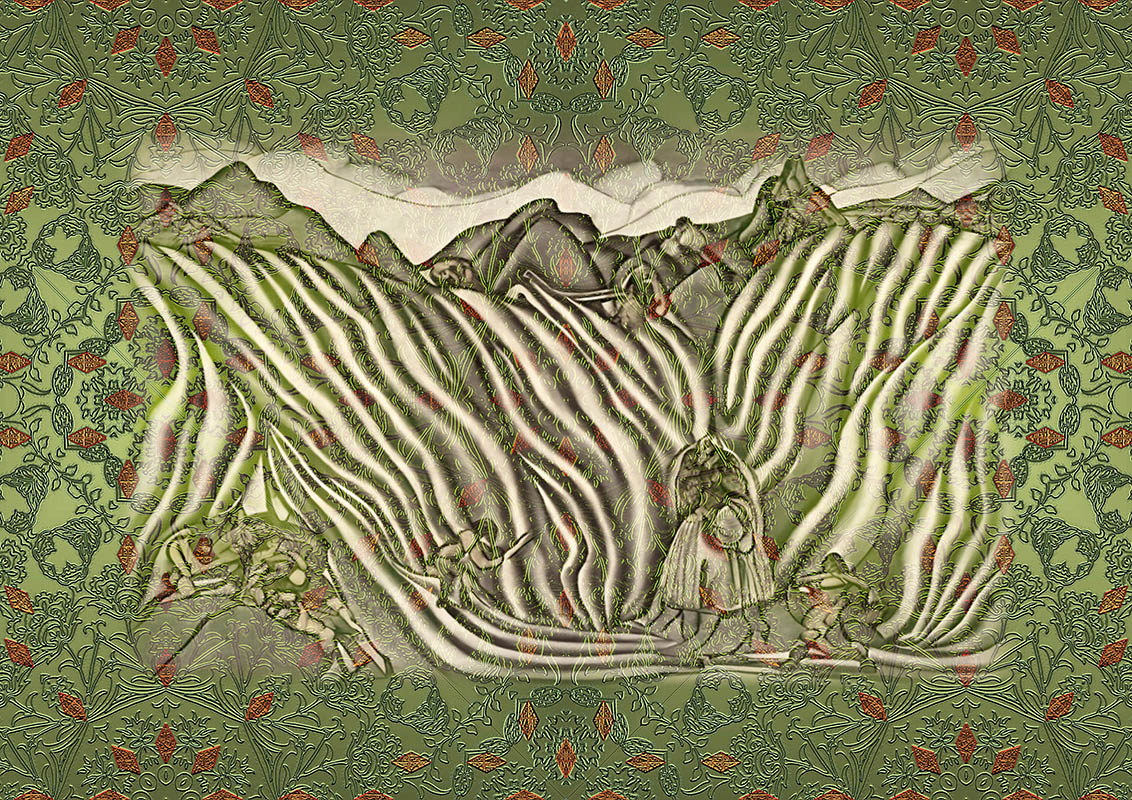
DA
TIM WHITE-SOBIESKI "DEN GUDDOMMELIGE KOMEDIE" af Dante Alighieri Kunstbog- og udgivelsesprojekt
Tim White-Sobieski præsenterer en bemærkelsesværdig kunstnerisk indsats kendt som "La Divina Commedia" Manuskriptprojektet. Dette foretagende består af en begrænset udgave af kunsttryk og en fint udformet bog. Indkvarteret i Studio TWS præsenterer Tim White-Sobieski en mesterlig fintryksudgave af Dante's Guddommelige Komedie, specielt designet som en mindeudgave under serien med titlen "Mesterværker af verdens litteratur."
Den kunstneriske skabelse involverer en begrænset udgave af trykportefølje, omhyggeligt produceret som en serie store håndfarvede tryk, der supplerer et tilsvarende begrænset udgave-manuskript. Derudover tilbydes en samling af mellemstore tryk i en specialfremstillet æske, ledsaget af en kunstners brochure, der belyser konceptet, og en omfattende historisk note. Disse tryk måler hver 30 x 42 centimeter.
Dette projekts essens ligger i dens hidtil usete karakter, da det er første gang siden det 15. århundrede, hvor Den Guddommelige Komedie er blevet fuldstændigt håndillustreret. Foretagendet omfatter et unikt illustrativt kunstværk for hver sang, hvilket giver over 1200 forskellige illustrationer. Disse kunstværker manifesterer sig både som en bog og som et sæt eksklusive håndfarvede tryk. Dette mesterværk tjener som en enestående tilføjelse til samlere, museer, biblioteker samt enkeltpersoner, der brænder for bibliofile forfølgelser og videnskabelig udforskning.
Fremstillingen af Den Guddommelige Komedie, der tilbydes her, er måske den mest udsøgte og omfattende fortolkning, der nogensinde er skabt. Hver trykudgave er elegant indkapslet i en dekorativ etui eller en luksuriøs beskyttelsesæske. Disse begrænsede udgaver præsenteres både på italiensk og engelsk og har arkivbinding på italiensk papir. Processen indebærer trykning på en specielt designet presse, der sikrer en luksuriøs finish. Ud over sin kunstneriske betydning bliver dette skaberværk emblematiske for italiensk kultur, historie og sprog.
Hvert tryk er unikt signeret af kunstneren selv, Tim White-Sobieski, ledsaget af et ægthedscertifikat. Denne mindeudgave markerer 700-årsdagen for Dante Alighieris død. Hele foretagendet er tænkt, designet og ført til live i Italien af TWS Fine Press Limited Edition. Trykudgaverne er placeret i guldbelagte hårde etuier og specialfremstillede kasser, der afspejler kunstnerens personlige præg.
Kulminationen af et årtis arbejde resulterer i en fortolkning af Den Guddommelige Komedie, der står blandt de mest udsøgte versioner i verdenshistorien. Projektet er et vidnesbyrd om samarbejdet med prestigefyldte historiske arkiver og private biblioteker, herunder, men ikke begrænset til, Vatikanets arkiver, Metropolitan Museum-biblioteket og tryksamlingen, Smithsonian, Kongresbiblioteket i Washington D.C., George Peabody-biblioteket i Baltimore, USA; Bodleian-biblioteket i Oxford, Storbritannien; British Museum; Yale University sjælden bog- og manuskriptbibliotek i New Haven, Connecticut, USA; Nationalbiblioteket i Venedigs San Marco; og Saint Gall Abbey Library i St. Gallen, Schweiz.
Projektet begyndte med en bog, der indeholdt 300 originale illustrationer, der oprindeligt var i vandret format på 30 x 42 centimeter. Senere udviklede det sig til en bredere kunstnerisk indsats, inklusive omfattende tegninger, tryk og lærredsarbejder. Det, der gør dette projekt virkelig bemærkelsesværdigt, er kunstnernes designs, der er skræddersyet specielt til bogen, sammen med over 400 unikke stofmønstre, der aldrig tidligere var blevet offentligt udstillet. På trods af at de er moderne, udstråler disse designs en stilistisk essens, der minder om den tidlige renæssanceperiode. Tekstilerne, der er præsenteret i kunstværkerne, blev senere forvandlet til multifarvede silkestoffer og jacquards, der genlyder med kvaliteten og den taktile oplevelse af renæssancetæpper. Kunstnerne dedikerede mere end tre år til at udvikle både stofdesign og tegne- og malerkompositioner. Resultatet var et enestående projekt kendetegnet ved dets intrikate udførelse og stilistiske raffinement.
Her præsenteres prøvesider fra den begrænsede kunstbog dedikeret til Dante Alighieris mesterværk.
OM DANTE ALIGHIERIS "DEN GUDDOMMELIGE KOMEDIE"
Den vedvarende og universelle appel ved Dante Alighieris "Den Guddommelige Komedie", selv efter syv århundreder, kan tilskrives flere intrinsiske kvaliteter, der gør den til et omdrejningspunkt for opmærksomhed blandt forskere, kunstnere og enkeltpersoner fra forskellige kulturer. Denne værks evne til at transcendere tidslige og geografiske grænser ligger i følgende faktorer:
Dantes tematiske udforskning berører grundlæggende menneskelige oplevelser som kærlighed, synd, forløsning og kompleksiteterne i menneskets natur. Disse eksistentielle bekymringer resonerer på tværs af tidsaldre og kulturelle sammenhænge og skaber en forbindelse med et bredt spektrum af individer.
Digterens dybsindige undersøgelse af sjælens rejse gennem rigerne Helvede, Skærsilden og Paradiset adresserer den menneskelige fascination af livets metafysiske spørgsmål, åndelighed og livet efter døden. Disse gåder er genstand for dyb eftertanke, der går på tværs af kulturelle grænser.
Dantes dygtige brug af allegori bidrager til værkets vedvarende appel ved at tillade flerdimensionale fortolkninger, der provokerer vedvarende intellektuel diskussion blandt forskere og tænkere.
Den narrative struktur, beriget med livagtige billeder, gør digtet tilgængeligt og fængslende. Dantes personlige rejse fungerer som en relaterbar kanal for læsere til at engagere sig med komplekse filosofiske og moralske temaer.
Som et historisk og kulturelt artefakt giver "Den Guddommelige Komedie" indblik i den intellektuelle, sociale og politiske miljø i 1300-tallets Italien. Denne historiske sammenhæng letter en bro mellem nutidens læsere og den svundne æra og fremmer en følelse af kontinuitet.
Værkets dybe indflydelse er tydelig gennem dens vedvarende indflydelse på litteratur, kunst og kultur. Den fungerer som en kilde til inspiration på tværs af forskellige kreative områder, lige fra litteratur til visuel kunst, musik og film.
Forankret i eksistentielle spørgsmål om godt og ondt, dyd og menneskelige relationer er de spørgsmål, der stilles af "Den Guddommelige Komedie", universelt relevante. Disse spørgsmål fortsætter med at engagere dem, der navigerer i de moralske og etiske landskabers nuancer i deres eget liv.
Dantes stræben efter at favne hele den menneskelige erfaring inden for en enkelt komposition giver "Den Guddommelige Komedie" en storhed, der resonerer med læsere fra forskellige baggrunde. Dens udforskning af den menneskelige tilstand og den kosmiske tapisserie resonerer med den fælles menneskelige nysgerrighed om vores eksistens og plads i universet.
I sin essens opnår "Den Guddommelige Komedie" sin tidløse og tværkulturelle resonans ved at dykke ned i kernen af menneskelig eksistens, ved hjælp af allegoriske lag og provokerende billeder til at skabe en fortælling, der overskrider æraer og geografiske grænser. Denne vedvarende appel fremmer en dyb og vedvarende forbindelse blandt enkeltpersoner, der bevæger sig gennem tiderne og kulturerne.
SAMMENLIGNENDE UNDERSØGELSE
Her er en sammenlignende analyse af kunstneriske fortolkninger af Den Guddommelige Komedie af berømte kunstnere som Botticelli, Gustave Doré, William Blake og Salvador Dalí, der fremhæver deres distinkte stilarter og deres arbejdes indvirkning på kunsthistorien:
Sandro Botticelli: Sandro Botticellis illustrationer af Den Guddommelige Komedie, specifikt Inferno, er kendt for deres intrikate detaljer og klassiske elegance. Botticellis stil, forankret i renæssancen, lægger vægt på yndefulde figurer og delikate konturer. Hans illustrationer kombinerer ofte mytologisk og kristent symbolisme, hvilket afspejler hans mesterskab i at kombinere forskellige visuelle sprog. Hans Inferno-illustrationer er kendetegnet ved deres omhyggelige opmærksomhed på anatomisk nøjagtighed og arkitektoniske detaljer, hvilket fanger de skrækindjagende scener med en kunstnerisk finesse, der blødgør emnets barskhed. Botticellis arbejde viser en fusion af det klassiske med det åndelige, hvilket repræsenterer en harmonisk integration af kunst og teologi. Selvom hans illustrationer ikke blev bredt udbredt i hans levetid, havde de en varig indflydelse på efterfølgende kunstnere og bidrog til populariseringen af Dantes episke værk.
Gustave Doré: Gustave Dorés illustrationer af Den Guddommelige Komedie fejres for deres dramatiske og følelsesladede kvalitet. Dorés stil kendetegnes ved dristige linjer, stærke kontraster og en forkærlighed for det monumentale. Hans illustrationer forstærker den følelsesmæssige intensitet i Dantes rejse gennem efterlivets riger. Gennem intrikate detaljer og en dynamisk brug af lys og skygge fanger Doré det viscerale rædsel i Inferno, den introspektive reflektion i Purgatorio og Paradisets æteriske skønhed. Hans illustrationer nød bred cirkulation takket være fremkomsten af trykketeknologi, hvilket gjorde hans tolkninger af Dantes værk tilgængelige for en større offentlighed. Dorés indflydelsesrige visuelle fortælling bidrog til at befæste de ikoniske billeder, der er forbundet med Den Guddommelige Komedie.
William Blake: William Blakes illustrationer af Den Guddommelige Komedie er en refleksion af hans unikke visionære og symbolske stil. Blakes kunst udfordrede ofte konventionelle normer og kendetegnes af intrikate, hvirvlende linjer og en drømmeagtig kvalitet. Hans fortolkning af Dantes værk fokuserer på de åndelige og allegoriske aspekter og afspejler Blakes egne mystiske tendenser. Blakes illustrationer dykker ned i sjælens psykologiske og åndelige rejse og fremhæver temaer som forløsning og åndeligt opvågnen. Hans kunstneriske indflydelse var begrænset i hans levetid, men hans arbejde blev anerkendt senere og påvirkede efterfølgende generationer af kunstnere med sin utraditionelle og dybt introspektive tilgang.
Salvador Dalí: Salvador Dalís illustrationer af Den Guddommelige Komedie giver en surrealistisk og avantgarde tolkning.
Dalís stil kendetegnes ved forvredne perspektiver, drømmeagtige landskaber og kontrastfyldte billeder. Hans illustrationer viser hans fascination af det underbevidste og det irrationelle. Dalís innovative tilgang omfortolker Dantes episke på en måde, der fremhæver den psykologiske og symbolske dimension af fortællingen. Hans unikke og ofte forvirrende visuelle udtryk udfordrede traditionelle kunstnormer og gav en frisk linse til at engagere sig med teksten. Dalís indflydelse på kunsthistorien er præget af hans bidrag til surrealismen og hans evne til at bygge bro mellem klassiske litterære temaer og moderne kunstnerisk udtryk.
Disse kunstnere har hver efterladt et uudsletteligt præg på den kunstneriske fortolkning af Dante's Den Guddommelige Komedie. Deres distinkte stilarter og tilgange viser mangfoldigheden af kunstneriske reaktioner på dette tidløse værk, fra klassisk elegance til dramatisk intensitet, visionær symbolik til surrealistisk innovation. Deres illustrationer viser ikke kun deres personlige kunstneriske tilbøjeligheder, men bidrager også til den rige fortælling af visuelle fortolkninger, der fortsat fanger publikum og former opfattelsen af Dantes mesterværk i kunsthistoriens annaler.
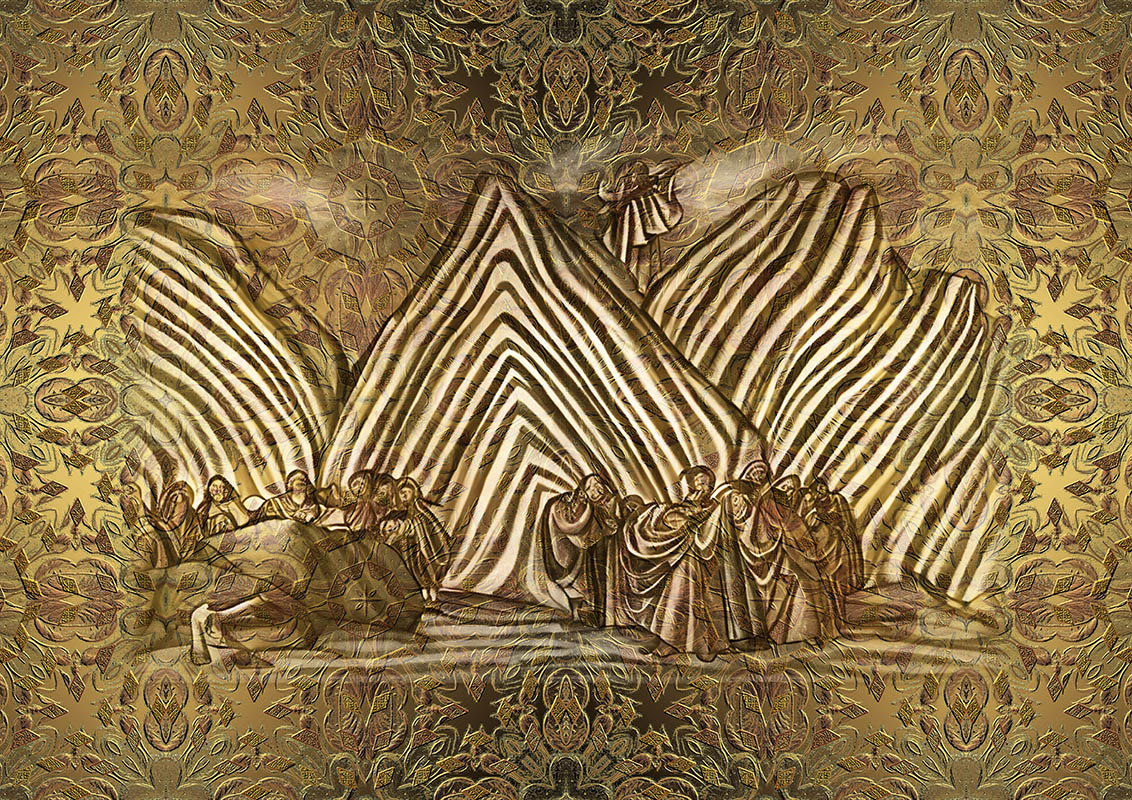
ZH
蒂姆·怀特-索比埃斯基 但丁·阿里吉耶里的《神曲》 艺术书籍和出版项目
蒂姆·怀特-索比埃斯基呈现了一项卓越的艺术工程,称为“神圣喜剧手稿”项目。这一工程包括一套限量版的艺术印刷品和一本精美制作的书籍。蒂姆·怀特-索比埃斯基在TWS工作室内展示了但丁的《神曲》的大师级精装版,专门设计为“世界文学杰作”系列下的纪念版。
这个艺术创作包括一套限量版的印刷作品,精心制作成一系列宏伟的手工着色印刷品,以补充同样限量版的手稿。此外,还提供了一套中等大小的印刷品,放置在定制的盒子中,附带一本艺术家手册,详细阐释了概念和广泛的历史注释。这些印刷品每张尺寸为12 x 16.5英寸(30 x 42厘米)。
这个项目的核心在于其前所未有的性质,这是自15世纪以来第一次完全手绘的《神曲》。这个工程包括了每个赞歌的独特插图,总共有超过1200幅不同的插图。这些艺术作品以书籍的形式和一套独家的手工着色印刷品的形式呈现。这个杰作对于收藏家、博物馆、图书馆以及热衷于书籍探索和学术研究的个人来说都是一个特别的补充。
这里提供的《神曲》演绎可能是有史以来最精致和最全面的诠释之一。每个印刷版本都优雅地装在装饰盒子或豪华的保护盒内。这些限量版作品以意大利语和英语呈现,并采用意大利纸张进行档案历史装订。制作过程涉及在特制的印刷机上印刷,确保了豪华的完美表面。除了其艺术意义之外,这个创作还成为了意大利文化、历史和语言的象征。
每个印刷品都由艺术家蒂姆·怀特-索比埃斯基本人签名,并附有真伪证书。这个纪念版标志着但丁·阿里吉耶里去世700周年。整个项目是由TWS精装限量版在意大利设计、构思和呈现的。这些印刷版作品存放在镀金的硬质盒子和定制的盒子中,反映出艺术家的个人风格。
十年努力的巅峰是《神曲》的诠释,在世界历史上堪称最精致的版本之一。这个项目证明了与著名历史档案和私人图书馆的合作,包括梵蒂冈档案馆、大都会博物馆图书馆和印刷品收藏、史密森尼博物馆、华盛顿特区国会图书馆、美国巴尔的摩的乔治·皮博迪图书馆;英国牛津的博德莉安图书馆、大英博物馆;美国康涅狄格州纽黑文的耶鲁大学稀有书籍和手稿图书馆;意大利威尼斯圣马克国家图书馆;瑞士圣加仑的圣加仑修道院图书馆等著名机构。
该项目始于一本书,包含300幅原创插图,最初以横向格式,每幅尺寸为30 x 42厘米。后来,它发展成了一个更广泛的艺术项目,包括广泛的绘画、印刷和画布作品。这个项目真正引人注目的地方在于艺术家专门为这本书量身定制的设计,以及从未公开展示过的400多种独特的面料图案。尽管是当代作品,但这些设计散发出早期文艺复兴时期的风格本质。艺术品中展示的纺织品后来被制成多色丝绸和提花织物,回响着文艺复兴挂毯的质感和触感体验。艺术家花了三年多的时间来开发纺织品设计和绘画构图。结果是一个独一无二的项目,以其复杂的执行和风格的精致而著称。
这里呈现的是致力于但丁·阿里吉耶里的杰作的限量版艺术书籍的示例页面。
关于但丁·阿里吉耶里的《神曲》 即使经过七个世纪,《但丁·阿里吉耶里的神曲》仍然具有持久和普遍的吸引力,这要归因于几个内在的特质,使其成为学者、艺术家和跨越不同文化的个体关注的焦点。这部作品能够超越时间和地理界限,原因如下:
但丁的主题探讨涉及到基本的人类经验,如爱、罪、救赎和人性的复杂性。这些存在主义的关切贯穿了不同时期和文化背景,与广泛的个体建立了联系。
这首诗歌对灵魂穿越地狱、炼狱和天堂的旅程进行了深入探讨,涉及到人们对生命的形而上学问题、灵性和来世的迷恋。这些谜团是深刻思考的主题,跨越文化界限。
但丁巧妙地利用寓言,为诗歌的持久吸引力作出了贡献,允许多维度的解释,引发了学者和思想家之间的持续智力辩论。
叙事结构,配以生动的意象,使诗歌变得易于理解和引人入胜。但丁的个人旅程充当了一个可关联的媒介,让读者与复杂的哲学和道德主题互动。
作为历史和文化文物,《神曲》提供了对14世纪意大利知识、社会和政治环境的洞察。这一历史背景为现代读者和过去的时代之间建立了桥梁,培养了一种连续性的感觉。
这部作品的深刻影响通过它对文学、艺术和文化的持久影响得以体现。它作为灵感的源泉跨越了各种创意领域,从文学到视觉艺术、音乐和电影。
植根于关于善恶、美德和人际关系的存在主义疑问中,《神曲》提出的问题具有普遍的适用性。这些问题继续吸引着那些在自己生活中探讨道德和伦理问题的人。
但丁的努力试图在一篇作品中概括整个人类经验的雄心壮志,使《神曲》具有一种在不同背景的读者中产生共鸣的宏伟感,它探讨了人类存在和宇宙图景的问题,引发了对我们的存在和在宇宙中的位置的共同人类好奇心。
实际上,《神曲》通过深入探讨人类存在的核心,利用寓言的层次和引人入胜的意象来创造一个跨越时代和地域界限的叙述,实现了其永恒吸引力,培养了个体之间的深刻和持久的联系,跨越了时代和文化。
对《神曲》艺术解读的比较研究 以下是对著名艺术家如博蒂切利、古斯塔夫·多雷、威廉·布莱克和萨尔瓦多·达利等对《神曲》的艺术解读的比较分析,突显了他们独特的风格以及他们的作品对艺术史的影响:
桑德罗·博蒂切利: 桑德罗·博蒂切利的《神曲》插图,特别是《地狱》,以其复杂的细节和经典的优雅而著名。博蒂切利的风格植根于文艺复兴,强调优雅的形象和精致的轮廓。他的插图常常融合了神话和基督教象征,反映出他将不同的视觉语言相结合的能力。他的《地狱》插图以其对解剖准确性和建筑细节的细致关注而闻名,以艺术的精湛技巧捕捉了可怕的场景,这种技巧使主题显得不那么严酷。博蒂切利的作品展现了古典与精神的融合,代表了艺术与神学的和谐融合。尽管他的插图在他的一生中没有广泛传播,但它们对后来的艺术家产生了持久的影响,并有助于普及但丁的史诗。
古斯塔夫·多雷: 古斯塔夫·多雷的《神曲》插图因其戏剧性和富有表现力而受到赞誉。多雷的风格特点是大胆的线条、强烈的对比和对庞大的偏爱。他的插图加强了但丁穿越来世领域的旅程的情感强度。通过复杂的细节和动态的明暗对比,多雷捕捉了《地狱》的肉体恐惧、《炼狱》的内省反思以及《天堂》的飘渺之美。由于印刷技术的出现,他的插图得到了广泛传播,使他对但丁作品的解读对更多观众可见。多雷具有影响力的视觉叙事帮助巩固了与《神曲》相关的标志性形象。
威廉·布莱克: 威廉·布莱克的《神曲》插图反映了他独特的幻觉和象征主义风格。布莱克的艺术常常挑战传统规范,特点是复杂、纷繁的线条和梦幻般的质感。他对但丁的作品的解读侧重于精神和寓言的方面,反映出布莱克自己的神秘倾向。布莱克的插图深入探讨了灵魂的心理和精神旅程,强调了救赎和精神觉醒的主题。他的艺术影响在他的一生中最初有限,但后来得到了认可,影响了后代艺术家,因为他的非传统和深刻内省的方法。
萨尔瓦多·达利: 萨尔瓦多·达利的《神曲》插图提供了一种超现实和前卫的解读。达利的风格特点是扭曲的透视、梦幻般的风景和并列的图像。他的插图展示了他对潜意识和非理性的着迷。达利的创新性方法重新想象了但丁的史诗,强调了叙述的心理和象征维度。他独特且常常令人困惑的视觉语言挑战了传统的艺术规范,为与文本互动的新视角提供了新鲜的视角。达利对艺术史的影响表现在他对超现实主义运动的贡献以及他在古典文学主题和当代艺术表现之间架起桥梁的能力。
这些艺术家各自在但丁的《神曲》艺术解读上留下了不可磨灭的印记。他们独特的风格和方法展示了对这一永恒作品的多样化艺术回应,从经典的优雅到戏剧性的强烈,从幻觉的象征主义到超现实的创新。他们的插图不仅展示了他们个人的艺术倾向,还为视觉解释的丰富多彩铺平了道路,继续吸引观众并在艺术史中塑造但丁的杰作的认知。
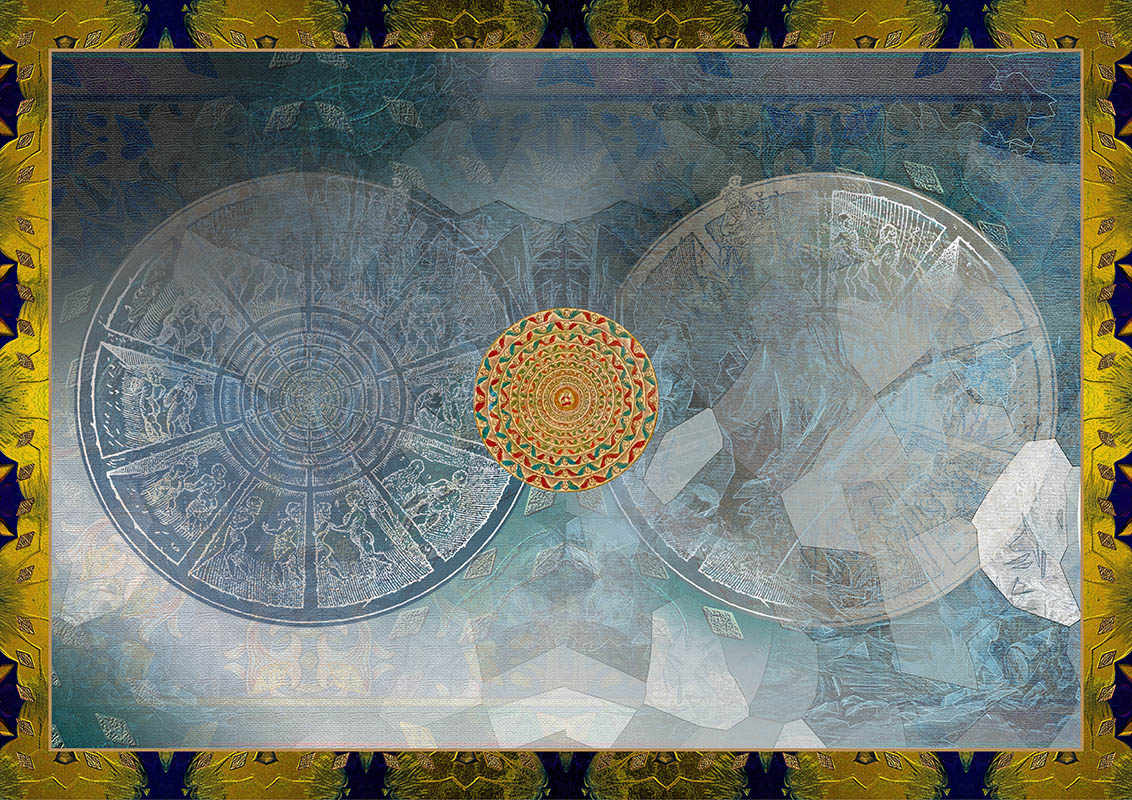
JA
ティム・ホワイト・ソビエスキ ダンテ・アリギエリの「神曲」 アートブックとエディションプロジェクト
ティム・ホワイト・ソビエスキは、「ラ・ディヴィーナ・コメディア」手稿プロジェクトとして知られる注目すべき芸術的な取り組みを紹介します。このプロジェクトは、アートプリントの限定版コレクションと精巧に制作された書籍で構成されています。ティム・ホワイト・ソビエスキは、スタジオTWS内で、ダンテの「神曲」の優れたファインプレス版を紹介し、それを「世界文学の傑作」と題したシリーズの記念版として特別にデザインしました。
この芸術的な創作には、限定版のプリントポートフォリオが含まれており、細部にわたり手作業で彩色されたグランドなプリントのシリーズを添えています。さらに、中サイズのプリントのセットがカスタムメイドのボックスで提供され、コンセプトを説明するアーティストのパンフレットと包括的な歴史的注釈が付属しています。これらのプリントはそれぞれ12 x 16.5インチ(30 x 42 cm)です。
このプロジェクトの本質は、これが15世紀以来初めて完全に手描きされた「神曲」であるという前例のない性質にあります。この取り組みは、各歌に独自の挿絵が含まれ、合計で1200以上の異なる挿絵が制作されています。これらの芸術作品は、書籍の形でだけでなく、独占的な手彩色のプリントのセットとして現れます。この傑作は、コレクターや博物館、図書館、さらには書籍愛好家や学術的な探求心に情熱を持つ個人にとっても特別な追加となります。
ここに提供されている「神曲」の演習は、おそらく世界史上最も精緻かつ包括的な解釈の一つです。各プリント版は、装飾的なスリップケースまたはデラックスな保護ケースに優雅に収められています。これらの限定版はイタリア語と英語の両方で提供され、イタリアの紙にアーカイブヒストリックな装丁が施されています。このプロセスには特別に設計されたプレスでの印刷が含まれ、デラックスな仕上げが保証されています。その芸術的な重要性に加えて、この創作物はイタリア文化、歴史、言語の象徴となっています。
各プリントはアーティストのティム・ホワイト・ソビエスキ自身によってユニークに署名され、真正性証明書が添付されています。この記念版はダンテ・アリギエリの没後700周年を記念しており、TWSファインプレス限定版によってイタリアで考案、デザイン、実現されました。プリント版は金箔押しのハードスリップケースやカスタムメイドのケースに収められており、アーティスト自身の個人的なタッチを反映しています。
十年にわたる努力の結晶が、世界史上最も美しい「神曲」の一つとしての演習に現れており、このプロジェクトは著名な歴史的なアーカイブや私立図書館との協力の証です。これにはバチカンのアーカイブ、メトロポリタン美術館の図書館とプリントコレクション、スミソニアン、ワシントンD.C.の国立議会図書館、アメリカボルチモアのジョージ・ピーボディ図書館、イギリスオックスフォードのボドリアン図書館、大英博物館、アメリカコネチカット州ニューヘイブンのイェール大学稀覯本および手稿図書館、イタリアヴェネツィアの聖マルク図書館、スイスサン・ガレンのサン・ガレン修道院図書館などが含まれます。
このプロジェクトは、最初は水平形式でそれぞれ30 x 42 cmのサイズで300のオリジナルイラストを含む本から始まりました。後に、大規模な図面、プリント、キャンバス作品を含む広範な芸術的な取り組みに発展しました。このプロジェクトが本当に注目すべきものにする要因は、本のために特別にデザインされたアーティストのデザインと、以前には公開されたことのない400以上のユニークな布地パターンです。これらのアートワークに登場するテキスタイルは、ルネサンス時代初期を思わせるスタイルの要素を持つ織物パターンです。アーティストたちは、テキスタイルデザインと図面および絵画の構成の開発に3年以上を費やしました。その結果、細部にわたる実行とスタイリッシュな洗練性を特徴とする前例のないプロジェクトが生まれました。
ここには、ダンテ・アリギエリの傑作に捧げられた限定版のアートブックのサンプルページが含まれています。
ダンテ・アリギエリの「神曲」について ダンテ・アリギエリの「神曲」は、七世紀にわたり持続的で普遍的な魅力を持っており、学者、アーティスト、異なる文化を横断する個人からの幅広い関心を引き寄せるいくつかの本質的な特性に帰せられます。この作品が時間的および地理的な境界を越えて持続的な注目を浴びる理由は、以下の要因にあります:
ダンテのテーマの探求は、愛、罪、救済、人間の複雑な本質など、基本的な人間の経験に触れています。これらの存在主義の問題は、時代と文化の文脈を超えて共鳴し、幅広い個人とつながりを形成しています。
詩の検討は、魂が地獄、煉獄、天国の領域を通過する旅を扱い、人々の生の形而上学的な問い、霊性、来世に対する魅力に対処します。これらの謎は、異なる文化を横断して深い考察の対象です。
ダンテの巧妙な寓意の使用は、詩の持続的な魅力に貢献し、学者や思想家の間で持続的な知的議論を引き起こす多次元の解釈を可能にしています。
豊かなイメージが施された叙事構造は、詩を理解しやすく魅力的にしています。ダンテの個人的な旅は、複雑な哲学的および道徳的テーマと関わる読者に対する共感を促します。
歴史的および文化的なアーティファクトとして、「神曲」は14世紀のイタリアの知識、社会、政治的環境を提供しています。この歴史的文脈は現代の読者と過去の時代の間に架け橋を築き、連続性を促進しています。
この作品の深い影響は、文学、芸術、文化への持続的な影響を通じて示されています。それは文学からビジュアルアート、音楽、映画に至るまで、さまざまな創造的な領域のインスピレーションの源として機能しています。
善悪、美徳、人間関係に関する存在の疑問に根ざし、「神曲」が投げかける問いは普遍的に関連しており、自分たちの生活で道徳的および倫理的な風景の複雑さを探求する人々に引き続き関与しています。
「神曲」を一つの作品に人類の経験全体を簡潔に纏めるというダンテの大胆な試みが、読者の背後にある宇宙の意義と人間の存在についての共通の好奇心と共鳴し、多様な背景の読者と深いつながりを築いています。
要するに、「神曲」は、存在の核心に深く入り込み、寓意的な層と効果的なイメージを利用して、時代と地理的な境界を越えた永遠の響きを実現しています。この持続的な魅力は、時代と文化を超えて個人の間で深いつながりを育んでおり、時代と文化を横断して響いています。
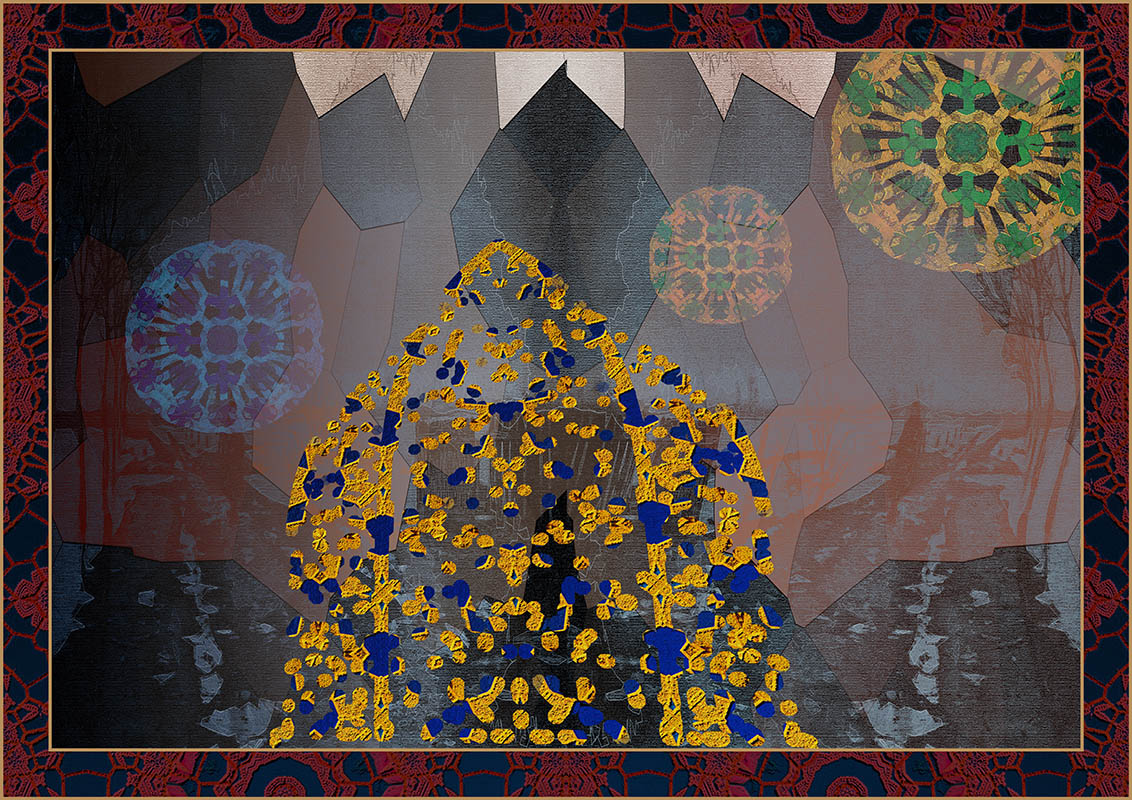
KO
팀 화이트-소비에스키 다른 말로 "신성한 희곡" 다마스 아리에리 아트북과 에디션 프로젝트
팀 화이트-소비에스키는 "La Divina Commedia" 원고 프로젝트라는 주목할만한 예술적 노력을 소개합니다. 이 프로젝트는 아트 프린트의 한정판 컬렉션과 정교하게 제작된 책으로 이루어져 있습니다. 팀 화이트-소비에스키는 스튜디오 TWS 내에서 다마스의 신성한 희곡을 기념판으로 디자인한 미술품 출판의 대표작으로 이 작품을 소개합니다.
이 예술적 창작물은 한정판 프린트 포트폴리오로 구성되어 있으며, 고요하게 수작업으로 만들어진 화려한 손색없는 프린트 시리즈를 포함하고 있습니다. 더불어, 아티스트의 컨셉을 명확히 설명하는 아티스트 브로셔와 포괄적인 역사 주석이 포함된 커스텀 메이드 박스 안에 중형 프린트 컬렉션이 제공됩니다. 이러한 프린트는 각각 12 x 16.5 인치 (30 x 42 cm) 크기입니다.
이 프로젝트의 본질은 15세기 이후로 처음으로 완전히 손으로 그려진 신성한 희곡이라는 전례없는 성격에 있습니다. 이 노력은 각 장마다 고유한 삽화를 포함하며, 총 1200개 이상의 다른 삽화가 제작되었습니다. 이 작품들은 책 형식뿐만 아니라 독점적인 손색없는 프린트 세트로 나타납니다. 이 걸작은 컬렉터, 박물관, 도서관, 그리고 서적을 사랑하는 개인뿐만 아니라 학문적 탐구에 열정을 품은 사람들에게 특별한 보금자리를 제공합니다. 여기에 제시된 신성한 희곡의 해석은 아마도 역사상 최고의 버전 중 하나일 것입니다. 각 프린트 판은 장식용 슬립케이스나 디럭스 보호 케이스 안에 우아하게 포장되어 있습니다. 이 한정판은 이탈리아어와 영어로 제공되며 이탈리아 종이에 아카이브 히스토릭 바인딩이 되어 있습니다. 이 과정은 특별히 디자인된 프레스에서 인쇄하여 고급 마무리 터치를 보장합니다. 그 예술적 의미 이상으로, 이 작품은 이탈리아 문화, 역사 및 언어의 상징이 되어 있습니다. 각 프린트는 아티스트 팀 화이트-소비에스키 자신에 의해 고유하게 서명되며 진정성 인증서가 함께 제공됩니다. 이 기념판은 다마스 아리에리의 700주기를 기념하는 것으로, 이탈리아의 TWS 패인 프레스 한정판에서 고안, 디자인 및 실현되었습니다. 프린트 판은 황금 도장이 찍힌 하드 슬립케이스와 커스텀 메이드 케이스 안에 보관되어 있으며, 아티스트의 개인적인 손길을 반영하고 있습니다. 이 십년간의 노력의 결실은 세계사상 최고의 버전 가운데 하나로 서서히 형성되었으며, 이 프로젝트는 역사적 아카이브와 개인 도서관을 포함한 명성있는 역사적 기록물과의 협력을 시험합니다. 이 중에는 바티칸 아카이브, 메트로폴리탄 박물관 도서관 및 프린트 컬렉션, 스미스소니언, 워싱턴 D.C. 의 미국 국립 도서관, 미국 볼티모어의 조지 피보디 도서관, 영국 옥스퍼드의 보들리언 도서관, 브리티시 박물관, 미국 코네티컷주 뉴헤이븐의 예일 대학 희귀 도서 및 원고 도서관, 이탈리아 베네치아의 세인트 마크 국립 도서관, 스위스 세인트 갈렌의 세인트 갈렌 수도원 도서관 등이 포함됩니다. 이 프로젝트는 처음에는 가로 형식으로 30 x 42 cm 크기의 각각 300개의 원래 일러스트를 포함하는 책에서 시작되었습니다. 후에 확장된 그림, 프린트 및 캔버스 작품을 포함한 더 광범위한 아트 프로젝트로 발전했습니다. 이 프로젝트가 정말 주목할 만한 것은 책을 위해 특별히 디자인된 아티스트의 디자인과 이전에 공개된 적이 없는 400개 이상의 고유한 패브릭 패턴입니다. 이 작품들에 등장하는 텍스타일은 르네상스 초기를 연상시키는 스타일의 패턴으로, 작품에서 소개된 텍스타일은 르네상스 태피스트리의 품질과 촉감 경험을 반영하기 위해 다채로운 실크 패브릭과 자카드로 제작되었습니다. 아티스트들은 텍스타일 디자인과 그림 그리기 및 그림 작업 개발에 3년 이상을 투자하여 복잡한 실행과 스타일리쉬한 정교함을 특징으로 하는 전례없는 프로젝트를 만들어 냈습니다. 여기에는 다마스 아리에리의 걸작에 바치는 한정판 아트북의 샘플 페이지도 포함되어 있습니다.
다마스 아리에리의 "신성한 희곡"에 대해 다마스 아리에리의 "신성한 희곡"은 7세기 이후에도 계속되는 보편적인 매력을 가지고 있으며, 이 작품이 학자, 예술가 및 다양한 문화를 거쳐 다양한 인물들에게 관심을 끄는 몇 가지 본질적인 특성에 기인합니다. 이 작품이 시간적 및 지리적 경계를 초월하여 계속해서 관심을 끄는 이유는 다음과 같은 요인들로 설명됩니다:
다마스의 주제 탐구는 사랑, 죄, 구원, 인간 본성의 본질과 같은 기본적인 인간 경험을 다룹니다. 이러한 존재론적 문제는 시대와 문화적 맥락을 넘어서 여러 인물과 공감점을 형성합니다.
시인의 영혼의 여행을 통해 지옥, 연옥 및 천국의 영역을 탐색하는 이 작품은 인간의 미적인 질문, 영적인 측면 및 유후를 다룹니다. 이러한 수수께끼는 문화적인 경계를 넘어서 깊은 사고의 주제입니다.
다마스의 애용하는 비유적 사용은 시의 지속적인 매력에 기여하며 학자와 사상가 사이에서 계속해서 지적 토론을 일으킵니다.
생생한 이미지로 장식된 서술 구조는 이 작품을 접근 가능하고 매혹적인 것으로 만듭니다. 다마스의 개인적인 여정은 독자가 복잡한 철학적 및 도덕적 주제와 관련하여 참여할 수 있도록 하는 공감점으로 작용합니다.
이 작품은 14세기 이탈리아의 지식, 사회 및 정치적 배경을 제공하여 역사적 맥락을 제공합니다. 이 역사적 맥락은 현대 독자와 지난 시대 사이의 연속성을 촉진하며 이어가는 느낌을 유발합니다.
이 작품의 미덕과 악, 덕과 인간 관계 주위의 실존적 질문을 근본적으로 장치하면 "신성한 희곡"이 전세계의 독자에게 영향을 미치고 있는 것을 확인할 수 있습니다. 이러한 질문들은 자신의 삶에서 도덕적이고 윤리적인 경관의 복잡성을 탐색하는 사람들에게 계속해서 관여합니다.
다마스의 이 작품을 통해 인류 경험 전체를 하나의 구성으로 포함하려는 대담한 시도는 다양한 배경을 가진 독자에게 우주의 의미와 인간 존재에 대한 공통의 호기심과 공감을 불러일으킵니다. 인간 조건과 우주의 장식을 탐구함으로써 읽는 이들과 공유하는 깊은 우정을 불러일으킵니다. 본질적으로 "신성한 희곡"은 인간 존재의 핵심을 탐구하며 비유적 레이어와 격렬한 이미지를 활용하여 시대와 지리적 경계를 초월한 지속적인 매력을 달성합니다. 이 지속적인 매력은 시대와 문화를 초월하여 다양한 배경의 독자 사이에 깊은 연결을 형성하며 시대와 문화를 초월하여 울립니다.
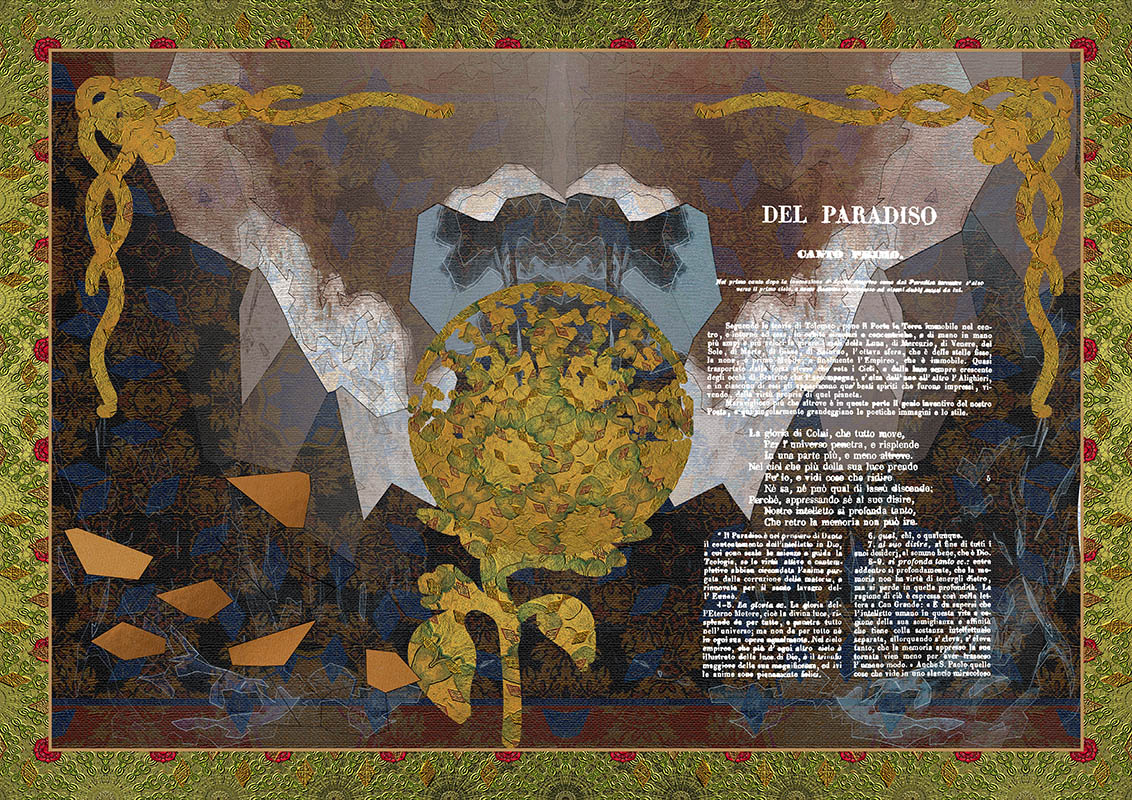
AR
تيم وايت-سوبيسكي "الكوميديا الإلهية" لدانتي أليغييري مشروع كتاب الفن والطبعة
يقدم تيم وايت-سوبيسكي مشروعًا فنيًا ملحوظًا يعرف باسم مشروع "La Divina Commedia" للمخطوطات. يتألف هذا المشروع من مجموعة محدودة من الطباعات الفنية وكتاب مصنوع بدقة. يتم تقديم هذا الجهد الفني الرائع داخل استوديو TWS، حيث يُقدم تيم وايت-سوبيسكي طبعة مميزة لرواية "الكوميديا الإلهية" لدانتي، مصممة خصيصًا كطبعة تذكارية ضمن سلسلة بعنوان "رائعات أدب العالم".
يتضمن هذا الإبداع الفني مجموعة محدودة من الطبعات الفنية المصغرة، تم إنتاجها بعناية فائقة كسلسلة من الطباعات اليدوية الكبرى التي تكمل مخطوطة محدودة أيضًا. بالإضافة إلى ذلك، يُقدم مجموعة من الطباعات المتوسطة الحجم في صندوق مصنوع خصيصًا، بالإضافة إلى كتيب فني يوضح الفكرة وتعليق تاريخي شامل. تبلغ أبعاد هذه الطباعات 12 × 16.5 بوصة (30 × 42 سم) لكل منها.
جوهر هذا المشروع يكمن في طابعه الغير مسبوق، حيث يعد هذا هو الحال الأول منذ القرن الخامس عشر حيث تم رسم الكوميديا الإلهية بالكامل يدويًا. يشمل الجهد تصميمًا فنيًا فريدًا لكل فصل، بإجمالي أكثر من 1200 رسم توضيحي مميز. تظهر هذه الأعمال بشكل كتاب ومجموعة من الطبعات الملونة يدويًا بشكل حصري. يعتبر هذا العمل الرائع إضافة استثنائية للمجموعين والمتاحف والمكتبات، بالإضافة إلى الأفراد المتحمسين لاستكشاف الكتب والبحث العلمي. الإصدار الفني لـ "الكوميديا الإلهية" الذي يُقدم هنا هو ربما أجمل وأشمل تفسير تم إعداده على الإطلاق. تُغلف كل طبعة فنية بشكل أنيق داخل صندوق زخرفي أو حافظة فاخرة. تُقدم هذه الطبعات الحصرية باللغتين الإيطالية والإنجليزية، وتتميز بجلد تأريخي محفوظ على ورق إيطالي. يتضمن العمل عملية طباعة على آلة طباعة مصممة خصيصًا، مما يضمن لمسة نهائية فاخرة. بالإضافة إلى أهميته الفنية، يمثل هذا الإبداع رمزًا للثقافة والتاريخ واللغة الإيطالية. توقع توقيع فريد للفنان نفسه، تيم وايت-سوبيسكي، على كل طبعة فنية، إلى جانب شهادة المصداقية. تحتفل هذه الطبعة التذكارية بالذكرى السابعة المئوية لوفاة دانتي أليغييري. تم تصميم وتنفيذ المشروع بالكامل في إيطاليا بواسطة TWS Fine Press Limited Edition. تُحفظ الطبعات الفنية داخل حافظات مزخرفة بالذهب وحافظات مصنوعة خصيصًا، مما يعكس لمسة الفنان الشخصية. تأتي هذه الجهود بعد عقد من العمل في رسم تفسير الكوميديا الإلهية، وتعد واحدة من أروع النسخ في تاريخ العالم. إن هذا المشروع يشهد على التعاون مع أرشيفات تاريخية رفيعة المستوى ومكتبات خاصة، بما في ذلك ولكن لا يقتصر على ذلك على أرشيفات الفاتيكان، ومكتبة متروبوليتان للمتاحف ومجموعات الطباعة، وسميثسونيان، ومكتبة الكونغرس في واشنطن العاصمة، ومكتبة جورج بيبودي في بالتيمور، الولايات المتحدة الأمريكية، ومكتبة بودليان في أكسفورد، المملكة المتحدة، والمتحف البريطاني، ومكتبة جامعة ييل للكتب والمخطوطات النادرة في نيو هافن بولاية كونيتيكت، الولايات المتحدة الأمريكية، والمكتبة الوطنية لسانت مارك في البندقية، إيطاليا؛ ومكتبة الدير السانت جال في سانت جالين، سويسرا. بدأ هذا المشروع بكتاب يحتوي على 300 رسم توضيحي أصلي، بحجم 30 × 42 سم لكل منها في شكل أفقي. لاحقًا، تطور المشروع ليشمل أعمالًا فنية أوسع نطاقًا، بما في ذلك رسومات وطبعات وأعمال قماشية. ما يجعل هذا المشروع فريدًا حقًا هو تصميمات الفنانين المصممة خصيصًا للكتاب، بالإضافة إلى أكثر من 400 نمط قماشي فريد لم يتم عرضه علنيًا من قبل. على الرغم من أن هذه التصميمات كانت معاصرة، إلا أنها أظهرت طابعًا أسلوبيًا يشبه فترة النهضة المبكرة. تم تحويل الأقمشة المعروضة في الأعمال الفنية لأقمشة حريرية متعددة الألوان وأقمشة جاكار، مما يصدى لجودة وتجربة اللمس للسجاد النهضوي. أمضى الفنانون أكثر من ثلاث سنوات في تطوير تصميمات الأقمشة وتكوينات الرسم واللوحة. النتيجة كانت مشروعًا لا مثيل له يتميز بتنفيذه المعقد وأناقته الأسلوبية. يُقدم هنا صفحات عينية من كتاب الفن النادر المحدود الذي تم تكريسه للعمل الكلاسيكي لدانتي أليغييري.
حول "الكوميديا الإلهية" لدانتي أليغييري إن جاذبية "الكوميديا الإلهية" لدانتي أليغييري، التي تستمر حتى بعد سبعة قرون، يمكن تصفيتها إلى عدة خصائص جوهرية تجعلها نقطة تركيز للعلماء والفنانين والأفراد من ثقافات متنوعة. القدرة على هذا العمل على تجاوز الحدود الزمنية والجغرافية تكمن في العوامل التالية:
استكشاف دانتي لمواضيع أساسية للتجربة البشرية مثل الحب والخطيئة والفداء وتعقيدات الطبيعة البشرية. هذه المسائل الوجودية تستمر في الإلهام عبر العصور والسياقات الثقافية، مما يخلق ارتباطًا مع مجموعة واسعة من الأفراد.
البحث العميق للشاعر في رحلة الروح من خلال عوالم الجحيم والمطهر والجنة يتناول اهتمام الإنسان بالأسئلة الميتافيزيقية للحياة والروحانية والحياة الآخرة. هذه الألغاز هي موضوعات التأمل العميق التي تعبر عن حدود ثقافية.
استخدام دانتي البارع للرمزية يسهم في جاذبية القصيدة، حيث يسمح بتفسيرات متعددة الأبعاد تحفز النقاش الفكري المستدام بين العلماء والمفكرين.
هيكل السرد المزين بالصور الحية يجعل القصيدة متاحة وجذابة. رحلة دانتي الشخصية تعمل كوسيلة قريبة للقارئ للتفاعل مع موضوعات فلسفية وأخلاقية معقدة.
بوصفها مادة تاريخية وثقافية، توفر "الكوميديا الإلهية" رؤى حول السياق الفكري والاجتماعي والسياسي لإيطاليا في القرن الرابع عشر. هذا السياق التاريخي يسهل بناء جسر بين القراء المعاصرين والعصور السابقة، مما يعزز الإحساس بالتواصل.
تأثير هذا العمل العميق يتجلى من خلال تأثيره المستمر على الأدب والفن والثقافة. إنه يعتبر مصدر إلهام غزير عبر مجموعة متنوعة من المجالات الإبداعية، من الأدب إلى الفنون البصرية والموسيقى والسينما.
مستندة إلى استفسارات وجودية تتعلق بالخير والشر والفضيلة والعلاقات الإنسانية، الأسئلة التي يطرحها "الكوميديا الإلهية" ذات صلة عالميًا. تستمر هذه الاستفسارات في جذب أولئك الذين يجتازون تعقيدات المشاهد الأخلاقية والأخلاقية في حياتهم الشخصية.
طموح دانتي الكبير في محاولة تجسيد تجربة الإنسان بأكملها ضمن تكوين واحد يضفي على "الكوميديا الإلهية" رونقًا يرتد صداه مع القراء من مختلف الخلفيات. استكشافه للحالة الإنسانية ونسيج الكون يتفاعل مع فضول الإنسان المشترك حول وجودنا ومكاننا في الكون. بالجوهر، "الكوميديا الإلهية" تحقق جاذبية دائمة وعابرة للثقافات من خلال استكشافها لجوهر الوجود البشري، واستخدامها للطبقات الرمزية والصور البديعة لبناء سرد يجسد العصور والانقسامات الجغرافية. هذا التأثير المستمر يشجع على اتصال عميق ودائم بين الأفراد، يتجاوز العصور والثقافات.
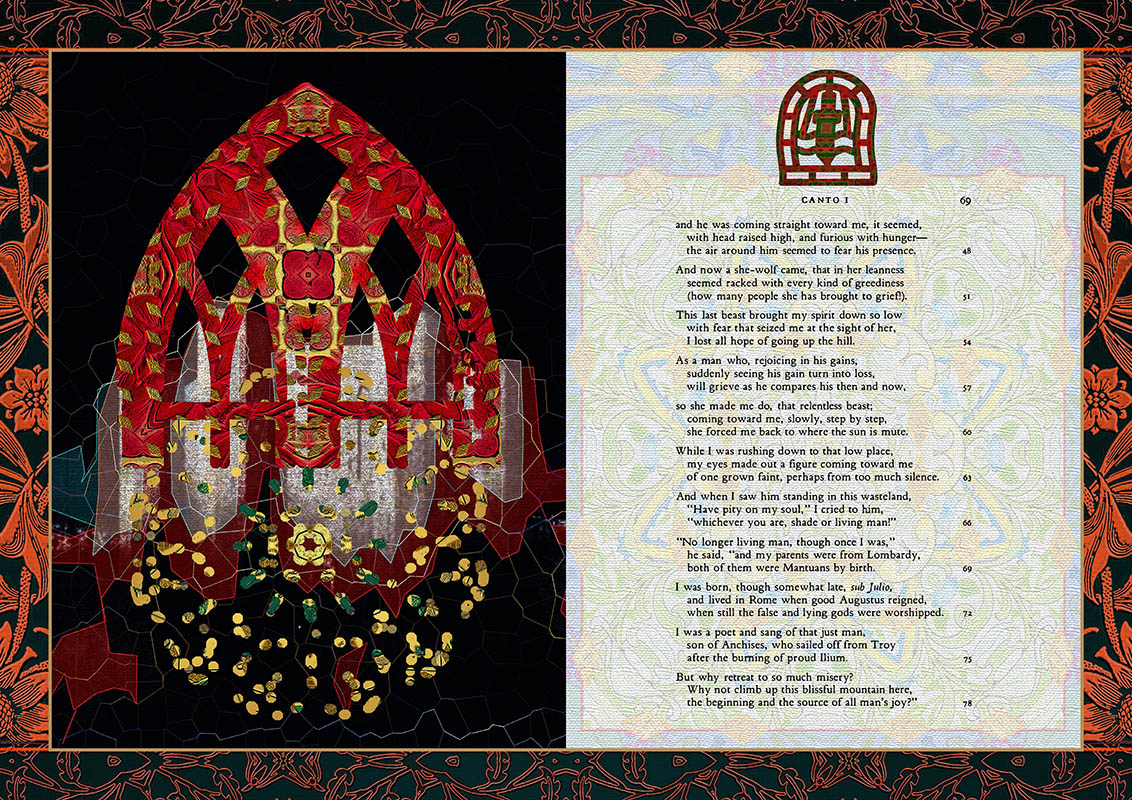
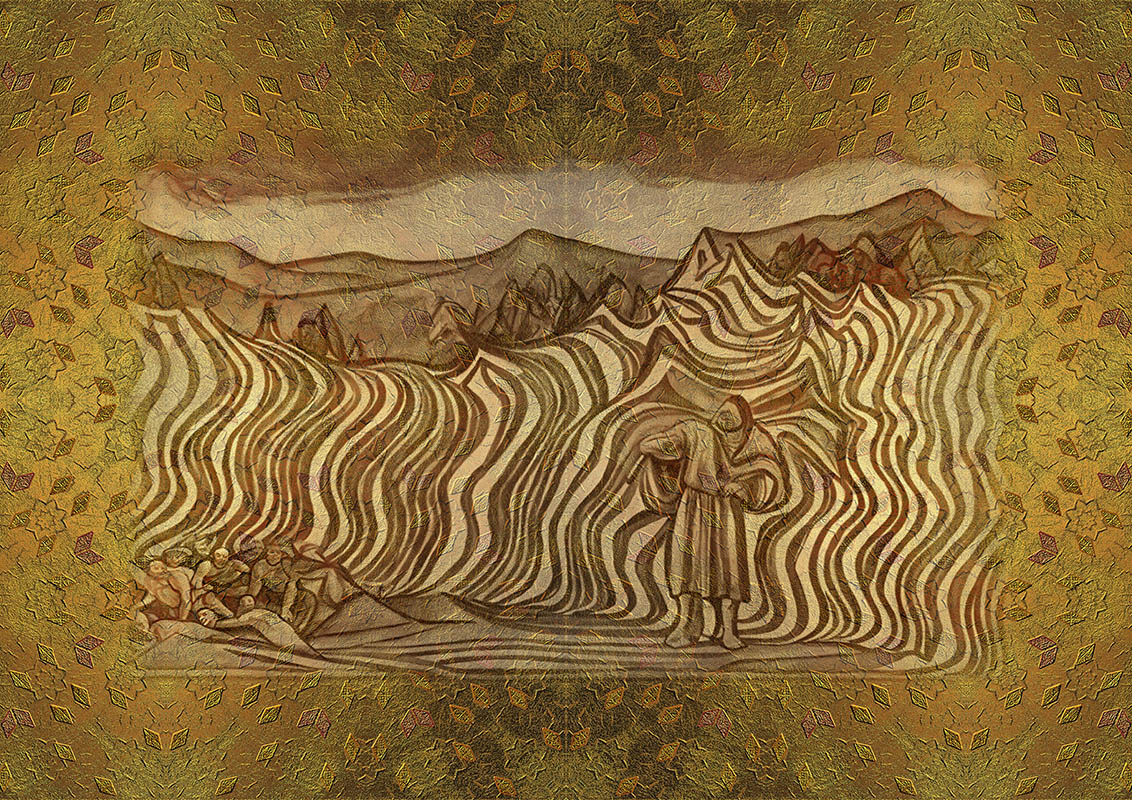
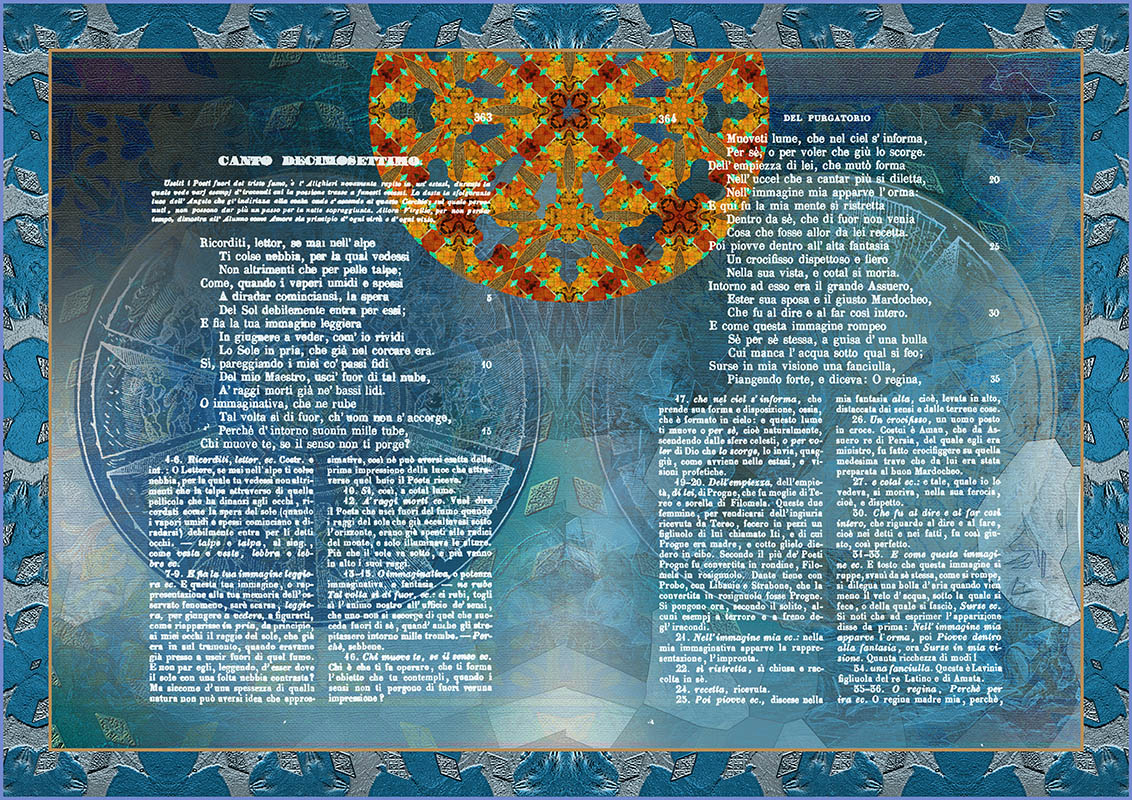
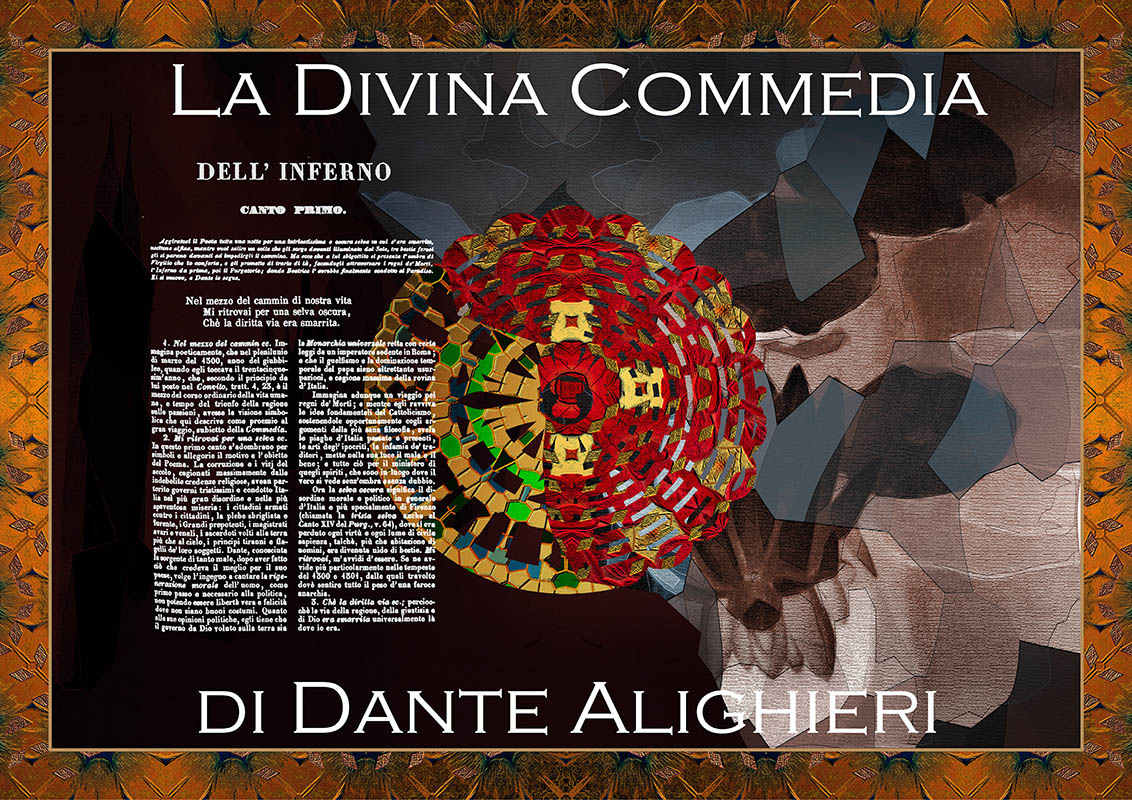
|
HOME
PROJECTS
EXHIBITIONS
ARTWORKS
BIOGRAPHY
BIBLIOGRAPHY
PUBLICATIONS
TEXTS
LINKS
NEWS
CONTACT
© TIM WHITE-SOBIESKI